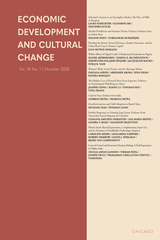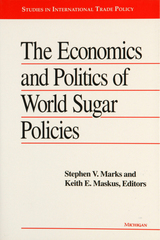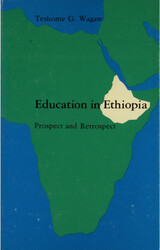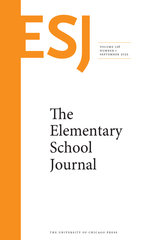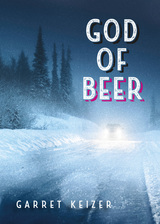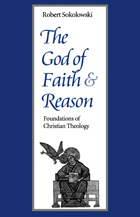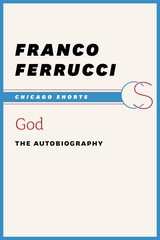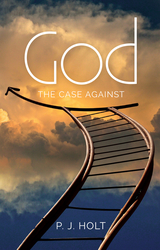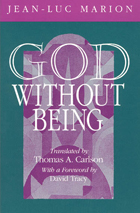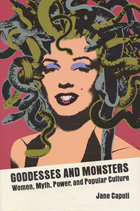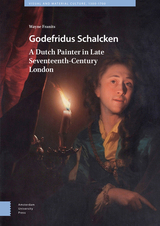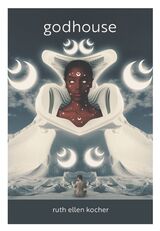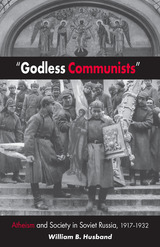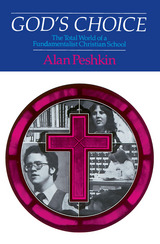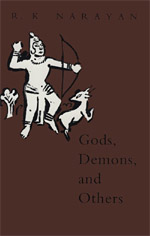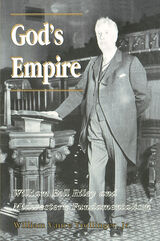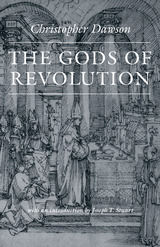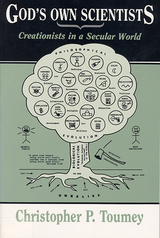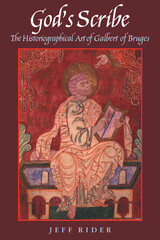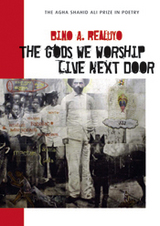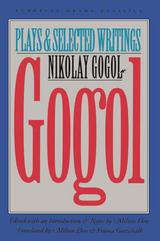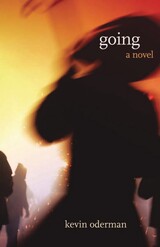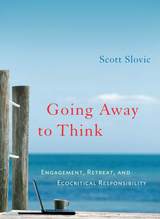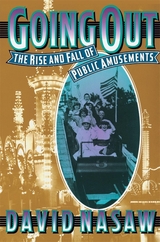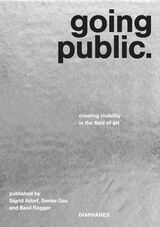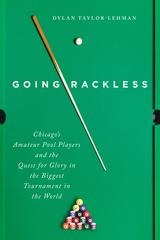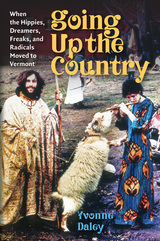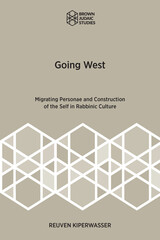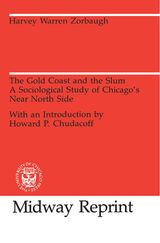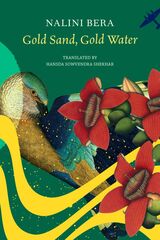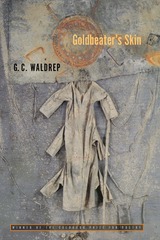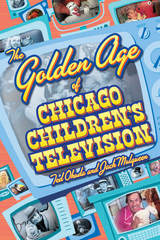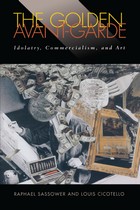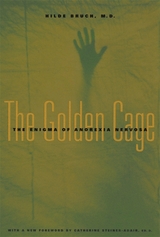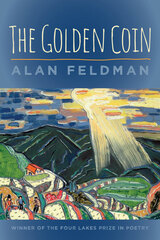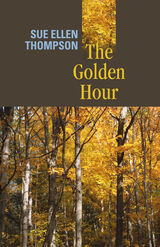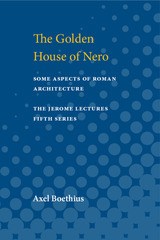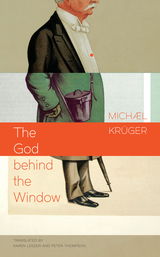 The God Behind the Window
Michael Krüger
Seagull Books, 2018 Now in paperback, a comic and moving collection of stories of grumpy old men who start to find unexpected connections with the world.
The thirteen stories of Michael Krüger’s The God behind the Window capture the poignancy and cynicism of late life through tales of misanthropic old men full of the mixture of wisdom and melancholy that so often accompanies old age. In Krüger’s stories, world-weary characters seek—and only temporarily find—solace in nature and culture, rendering their search for a better life simultaneously comedic and heart wrenching. From a solitary hiker in the Swiss Alps to the book’s eponymous shut-in, these aging malcontents are continually surprised by the unexpected interventions of a world that has come to seem predictable. Krüger captures this stage in life masterfully, contrasting the deeply personal emotions of affection, melancholy, and longing with an indifferent world. The resulting stories are lyrical, philosophical, and tender despite their cynicism.
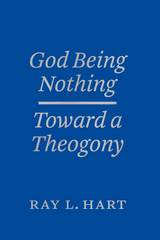 God Being Nothing: Toward a Theogony
Ray L. Hart
University of Chicago Press, 2016 In this long-awaited work, Ray L. Hart offers a radical speculative theology that profoundly challenges classical understandings of the divine. God Being Nothing contests the conclusions of numerous orthodoxies through a probing question: How can thinking of God reach closure when the subjects of creation are themselves unfinished, when God’s self-revelation in history is ongoing, when the active manifestation of God is still occurring?
Drawing on a lifetime of reading in philosophy and religious thought, Hart unfolds a vision of God perpetually in process: an unfinished God being self-created from nothingness. Breaking away from the traditional focus on divine persons, Hart reimagines the Trinity in terms of theogony, cosmogony, and anthropogony in order to reveal an ever-emerging Godhead who encompasses all of temporal creation and, within it, human existence. The book’s ultimate implication is that Being and Nonbeing mutually participate in an ongoing process of divine coming-to-birth and dying that implicates all things, existent and nonexistent, temporal and eternal. God’s continual generation from nothing manifests the full actualization of freedom: the freedom to create ex nihilo.
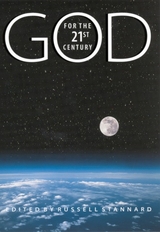 God For The 21St Century
Russell Stannard
Templeton Press, 2000
Just as modern science has revolutionized our understanding of the natural world, so can it expand our understanding of the Divine. In topics as varied as astronomy and cosmology, evolution, genetic engineering, extraterrestrial life, psychology and religious experience, spirituality and medicine, and artificial intelligence, fifty key thinkers discuss the interrelationship between science and religion.
Contributors include Robert Jastrow, first chairman of NASA's Lunar Exploration Committee and currently director of the Mount Wilson Institute; Rod Davies, former director of the Jodrell Bank Radio Astronomy Laboratories, U.K.; Owen Gingerich, senior astronomer, Smithsonian Astrophysical Observatory; Paul Davies, recipient of the Templeton Prize for Progress in Religion; Sir John Haughton, former director general of the United Kingdom Meteorological Office; Lord Habgood, former archbishop of York; and science writers Kitty Ferguson and Gregg Easterbrook.
The writers are drawn from eight countries and represent the Christian, Jewish, Islamic, and Hindu traditions. Most are scientists by profession, but also included are philosophers, theologians, and psychologists. Each chapter of this innovative, accessible book helps to expand our thinking in light of what is known at the dawn of the twenty-first century. Taken as a whole, this book presents a challenging understanding of God and of God's interaction with the world and with ourselves.
Topics covered include:
•Creation and evolution
•Life on other planets
•Genetic engineering
•Faith and medicine
•The mind and the soul
•Quantum physics
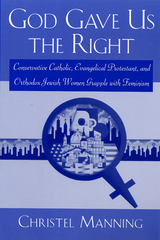 God Gave Us The Right: Conservative Catholic, Evangelical Protestant, and Orthodox Jewish Women Grapple with Feminism
Manning, Christel
Rutgers University Press, 1999 What does it mean to be a religious conservative, particularly for women, in America today? While it appears that people are returning to conservative religion because they are fed up with the excesses of liberalism, including feminism, a closer look at the lives of religious conservatives reveals a more complex reality. Drawing on two years of ethnographic research in Catholic, Jewish, and Protestant communities, Christel Manning explores the diversity among women who have returned to tradition. Arguing that America has undergone profound cultural and economic changes in the last thirty years, which create tension between women's lives and traditional gender roles, she demonstrates that conservative Catholics, Orthodox Jews, and Evangelical Protestants negotiate those tensions in different ways. Manning also shows that women in conservative religious communities share many of the same concerns as secular women. Manning looks at how the religious communities profiled have been influenced by feminist values and describes the ways in which these women negotiate gender roles at work, religious services, and at home. She explains how they deal with the inconsistencies created by their attempts to integrate feminist and traditionalist norms. In highly accessible prose, Manning examines their attitudes towards the feminist movement, its impact on American culture, and the extent to which the women seek to resist it. God Gave Us the Right explains how these different views of feminism reflect the diverse theologies and historical experiences of the three communities.
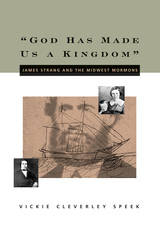 "God Has Made Us a Kingdom": James Strang and the Midwest Mormons
Vickie Cleverley Speek
Signature Books, 2006 Was polygamy the downfall of the Strangite kingdom or was it something far more ominous and wide-reaching? Vickie Cleverley Speek examines the charismatic figure of James J. Strang and provides a detailed first look at his wives, children, and the Strangite families left behind at his martyrdom. She makes an especially close examination of the practice of “consecration of gentile property” in the Strangite colonies on Beaver Island in Lake Michigan. Were the Strangites guilty of piracy and other crimes, and if so, to what extent? Strang was considered the prophetic successor to Joseph Smith for the Mormons of the Midwest who later formed the nucleus for the membership of what is now the Community of Christ. Today, 150 years after Strang’s death, about 100 faithful followers in the United States still await the emergence of another prophet to succeed Strang. In the prophetic tradition of Joseph Smith, Strang similarly excavated ancient metallic plates and translated them into the Book of the Law of the Lord and the Rajah Manchou of Vorito. Like Joseph Smith, Strang instigated polygamy, secret ceremonies, baptism for the dead, and communal living. He also introduced a bloomer-like fashion for women, as well as other innovations. Like Joseph Smith, he had himself crowned king of the world. Where previous treatments of Strang have relied either on inside or outside sources to show either a prophet or charlatan, Speek utilizes all sources, updates the record, corrects previous errors, and shows diverse perspectives. She recounts the turbulent and dramatic events of the 1840s-50s, including the plot to murder Strang and the heartbreaking exile of the Saints from Beaver Island. She traces the dispersion of this once formidable colony of Mormons to the forests of northwest Wisconsin, the far-flung outposts of southwest New Mexico, the hills of Lamoni, Iowa, and to Salt Lake City, Utah.
 God, He Who Is: De Deo ut uno
Serge-Thomas Bonino
Catholic University of America Press, 2026 "What is God?" asked Thomas Aquinas as a child. Contemplation of the mystery of God, in the light of reason enlightened by faith, is the heart of the theological enterprise. It is based on the Revelation that God has made of himself in the history of salvation and, in order to foster the understanding of faith, it assumes the best of metaphysical reflection, since the saving God revealed in Jesus Christ is not another God than the Creator of heaven and earth, the subsisting Being, the First Cause of all being.
The One God deals with a first "part" of the mystery of God: God contemplated in the unity of the essence common to the three persons of the Holy Trinity. It explores the ways of our knowledge (section 1) and presents the theological question of his existence (section 2). It then sets out the perfections of God's very being (simplicity, goodness, infinity, eternity, etc.)(section 3) and, after a critical review of the value of theoretical knowledge and language (section 4), presents the principles of his action (knowledge, will, omnipotence) (section 5).
The One God is a continuation of the treatises De Deo ut uno, which, in the form of a systematic, historical and doctrinal commentary on questions 2-26 of the Prima pars of the Summa Theologiae of Saint Thomas Aquinas, have succeeded one another throughout the history of the Thomist tradition. Its aim is to update a theology treatise that is unjustly neglected today and to offer teachers and students a solid and informed manual on this fundamental subject.
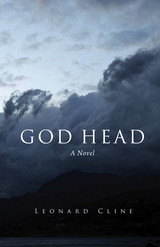 God Head
Leonard Cline
Northern Illinois University Press, 2012
Lavished with praise at the time of its 1925 publication, Leonard Cline’s phantasmagoric God Head is being republished so a new generation of readers can marvel at its dark magic. Cline’s mesmerizing debut follows the journey of Paulus Kempf, a fugitive labor agitator who takes refuge with a colony of Finns on the remote shores of Lake Superior in the upper peninsula of Michigan. Kempf, a former surgeon, poet, writer, sculptor, and hyper-intellectual, is at first deeply impressed by the folklore and traditions of the quiet, gentle Finns, not to mention their generosity and hospitality. But he soon begins to play upon their superstitions and exploits their kindness through the power of his cunning and imagination, manipulating them into seeing him as a kind of a god.
As Cline’s novel hurtles toward its unforgettable climax, Kempf’s capacity for compassion or mercy swiftly falls to the wayside as he seduces his host’s wife and then murders the man in cold blood. Soon thereafter he carves a giant God Head into the side of a nearby mountainside, which the villagers look upon with awe and fear, held in the thrall of Kempf’s mysterious intimations of its malicious power. Having achieved complete domination over the Finns, Kempf ultimately tires of their gullibility and returns to civilization, his quest for self-mastery complete.
God Head’s descent into the dark void of the human heart will thrill modern readers who are sure to cherish this lost literary artifact from the shadow canon of American fiction.
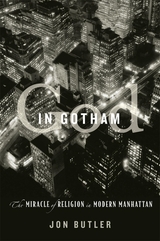 God in Gotham: The Miracle of Religion in Modern Manhattan
Jon Butler
Harvard University Press, 2020 A master historian traces the flourishing of organized religion in Manhattan between the 1880s and the 1960s, revealing how faith adapted and thrived in the supposed capital of American secularism.
In Gilded Age Manhattan, Catholic, Jewish, and Protestant leaders agonized over the fate of traditional religious practice amid chaotic and multiplying pluralism. Massive immigration, the anonymity of urban life, and modernity’s rationalism, bureaucratization, and professionalization seemingly eviscerated the sense of religious community.
Yet fears of religion’s demise were dramatically overblown. Jon Butler finds a spiritual hothouse in the supposed capital of American secularism. By the 1950s Manhattan was full of the sacred. Catholics, Jews, and Protestants peppered the borough with sanctuaries great and small. Manhattan became a center of religious publishing and broadcasting and was home to august spiritual reformers from Reinhold Niebuhr to Abraham Heschel, Dorothy Day, and Norman Vincent Peale. A host of white nontraditional groups met in midtown hotels, while black worshippers gathered in Harlem’s storefront churches. Though denied the ministry almost everywhere, women shaped the lived religion of congregations, founded missionary societies, and, in organizations such as the Zionist Hadassah, fused spirituality and political activism. And after 1945, when Manhattan’s young families rushed to New Jersey and Long Island’s booming suburbs, they recreated the religious institutions that had shaped their youth.
God in Gotham portrays a city where people of faith engaged modernity rather than foundered in it. Far from the world of “disenchantment” that sociologist Max Weber bemoaned, modern Manhattan actually birthed an urban spiritual landscape of unparalleled breadth, suggesting that modernity enabled rather than crippled religion in America well into the 1960s.
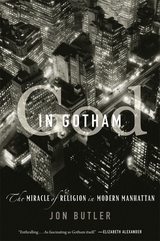 God in Gotham: The Miracle of Religion in Modern Manhattan
Jon Butler
Harvard University Press “Are you there, God? It’s me, Manhattan…Butler…argues that far from being a Sodom on the Hudson, New York was a center of religious dynamism throughout the 20th century.” —Wall Street Journal
“What a pleasure it is to take a tour of Manhattan’s sacred past led by one of the nation’s preeminent religious historians.”
—Christianity Today
“A masterwork by a master historian…God in Gotham should be an instant classic.”
—Jonathan D. Sarna, author of American Judaism
In Gilded Age Manhattan, religious leaders agonized over the fate of traditional faith practice amid chaotic and sometimes terrifying change. Massive immigration, urban anonymity, and the bureaucratization of modern life tore at the binding fibers of religious community.
Yet fears of the demise of religion were dramatically overblown. Jon Butler finds a spiritual hothouse in the supposed capital of American secularism as Catholics, Jews, and Protestants peppered the borough with sanctuaries. A center of religious publishing and broadcasting, by the 1950s it was home to Reinhold Niebuhr, Abraham Heschel, Dorothy Day, and Norman Vincent Peale. While white spiritual seekers sometimes met in midtown hotels, black worshippers gathered in Harlem’s storefront churches. Though denied the ministry almost everywhere, women shaped congregations, founded missionary societies, and fused spirituality and political activism. God in Gotham portrays a city where people of faith embraced modernity and thrived.
A God in the House: Poets Talk About Faith
Edited by Ilya Kaminsky and Katherine Towler
Tupelo Press, 2012 Editors Ilya Kaminsky and Katherine Towler have gathered conversations with nineteen of America’s leading poets, reflecting upon their diverse experiences with spirituality and the craft of writing. Bringing together poets who are Christian, Buddhist, Jewish, Muslim, Pagan, Native American, Wiccan, agnostic, and otherwise, this book offers frank and thoughtful consideration of themes too often polarized and politicized in our society. Participants include Li-Young Lee, Jane Hirshfield, Carolyn Forché, Gerald Stern, Christian Wiman, Joy Harjo, and Gregory Orr, and others, all wrestling with difficult questions of human existence and the sources of art.
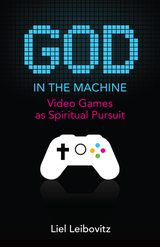 God in the Machine: Video Games as Spiritual Pursuit
Liel Leibovitz
Templeton Press, 2014 What might Heidegger say about Halo, the popular video game franchise, if he were alive today? What would Augustine think about Assassin’s Creed? What could Maimonides teach us about Nintendo’s eponymous hero, Mario? While some critics might dismiss such inquiries outright, protesting that these great thinkers would never concern themselves with a medium so crude and mindless as video games, it is important to recognize that games like these are becoming the defining medium of our time. We spend more time and money on video games than on books, television, or film, and any serious thinker of our age should be concerned with these games, what they are saying about us, and what we are learning from them. Yet video games remain relatively unexplored by both scholars and pundits alike. Few have advanced beyond outmoded and futile attempts to tie gameplay to violent behavior. With this rumor now thoroughly and repeatedly disproven, it is time to delve deeper. Just as the Museum of Modern Art in Manhattan recently acquired fourteen games as part of its permanent collection, so too must we seek to add a serious consideration of virtual worlds to the pantheon of philosophical inquiry. In God in the Machine, author Liel Leibovitz leads a fascinating tour of the emerging virtual landscape and its many dazzling vistas from which we are offered new vantage points on age-old theological and philosophical questions. Free will vs. determinism, the importance of ritual, transcendence through mastery, notions of the self, justice and sin, life, death, and resurrection all come into play in the video games that some critics so quickly write off as mind-numbing wastes of time. When one looks closely at how these games are designed, their inherent logic, and their cognitive effects on players, it becomes clear that playing these games creates a state of awareness vastly different from when we watch television or read a book. Indeed, the gameplay is a far more dynamic process that draws on various faculties of mind and body to evoke sensations that might more commonly be associated with religious experience. Getting swept away in an engaging game can be a profoundly spiritual activity. It is not to think, but rather to be, a logic that sustained our ancestors for millennia as they looked heavenward for answers. As more and more of us look “screenward,” it is crucial to investigate these games for their vast potential as fine instruments of moral training. Anyone seeking a concise and well-reasoned introduction to the subject would do well to start with God in the Machine. By illuminating both where video game storytelling is now and where it currently butts up against certain inherent limitations, Liebovitz intriguingly implies how the field and, in turn, our experiences might continue to evolve and advance in the coming years.
 God In The Street: New York Writing from The Penny Press to Melville
Hans Bergmann
Temple University Press, 1995 In the fast changing culture of antebellum New York, writers of every stripe celebrated "the City" as a stage for the daily urban encounter between the familiar and the inexplicable. Probing into these richly varied texts, Hans Bergmann uncovers the innovations in writing that accompanied the new market society— the penny newspapers' grandiose boastings, the poetic catalogues of Walt Whitman, the sentimental realism of charity workers, the sensationalism of slum visitors, and the complex urban encounters of Herman Melville's fiction. The period in which New York, the city itself, became firmly established as a subject invented a literary form that attempts to capture the variety of the teeming city and the flaneur, the walking observer. But Bergmann does not simply lead a parade of images and themes; he explores the ways in which these observers understood what was happening around them and to them, always attentive to class struggle and race and gender issues. God in the Street shows how the penny press and Whitman's New York poetry create a new mass culture hero who interprets and dignifies the city's confusions. New York writers, both serious and sensationalist, meditate upon street encounters with tricksters and confidence-men and explore the meanings of encounters. Melville's "Bartleby, the Scrinever" underlines the unrelenting isolation and inability to control the interpreter. Bergmann reinterprets Melville's The Confidence Man as an example of how a complex literary form arises directly from its own historical materials and is itself socially symbolic. Bergmann sees Melville as special because he recognizes his inability to make sense of the surface of chaotic images and encounters. In mid-century New York City, Melville believes God is in the street, unavailable and unrecognizable, rather than omnipresent and guiding.
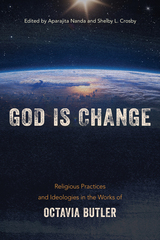 God is Change: Religious Practices and Ideologies in the Works of Octavia Butler
Edited by Aparajita Nanda and Shelby L. Crosby
Temple University Press, 2021 Throughout her work, Octavia E. Butler explored, critiqued, and created religious ideology. Her prescient thoughts on the synergy between politics and religion in America are evident in her 1993 dystopian novel, Parable of the Sower, and its 1998 sequel, Parable of the Talents. They explored, respectively, what happens during a divisive “cultural war” that unjustly impacts the disenfranchised, and the rise of a fascistic president, allied with white fundamentalist Christianity, who chants the slogan, “Make America Great Again.” But religion, for Butler, need not be a restricting force. The editors of and contributors to God Is Change heighten our appreciation for the range and depth of Butler’s thinking about spirituality and religion, as well as how Butler’s work—especially the Parable and Xenogenesis series—offers resources for healing and community building. Essays consider the role of spirituality in Butler’s canon and the themes of confronting trauma as well as experiencing transformation and freedom. God Is Change meditates on alternate religious possibilities that open different political and cultural futures to illustrate humanity’s ability to endure change and thrive.
 God Is Love: Thomas Aquinas on the Being and Action of the Holy Spirit
Michael D. Torre
Catholic University of America Press, 2026 This book dedicates three essays each to three different theological problems regarding the Holy Spirit: In God and for Us (The "Filioque" and "Uncreated Grace"); Thomas's Understanding (Not His Commentators) of the Relation between nature and sanctifying grace; and our ability (and that of the angels at their creation) in fact to resist God' grace and thus be the first cause of sin. This later problem is developed in an "excursus" on the way God moves the free will, one that takes into consideration much recent work on this issue and situates the essays' position in relation to it. The book ends with a brief epilogue on the credibility of God, again giving Thomas's account of this.
The principal aim throughout is to understand the doctrine of Thomas Aquinas. It places his views in relation to three audiences: chiefly to the orthodox regarding the first issue; to Catholics in relation to the second; and to Protestants in relation to the third. Thus, its second aim is to join "ecumenical debate" about these matters. The essays were mostly written to be delivered orally, to an informed audience of philosophers and theologians., but one that consisted of "generalists" and serious students of Thomas, as well as of "professional" philosophers and theologians. All three of the debated issues discussed have generated an enormous amount of disagreement and debate, not a little of it being quite "technical." Thus, each issue would easily require a long and significant book to be addressed as it deserves. The essays do not do this, but they do indicate what Torre holds is the "directive line" of Thomas's thought that deserves to be defended and developed in each case, and, in each case, this line is held to be markedly different than many have thought it to be.
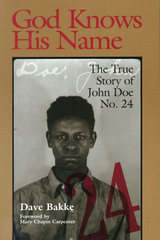 God Knows His Name: The True Story of John Doe No. 24
David Bakke. Foreword by Mary Chapin Carpenter
Southern Illinois University Press, 2000 Police found John Doe No. 24 in the early morning hours of October 11, 1945, in Jacksonville, Illinois. Unable to communicate, the deaf and mute teenager was labeled “feeble minded” and sentenced by a judge to the nightmarish jumble of the Lincoln State School and Colony in Jacksonville. He remained in the Illinois mental health care system for over thirty years and died at the Sharon Oaks Nursing Home in Peoria on November 28, 1993.
Deaf, mute, and later blind, the young black man survived institutionalized hell: beatings, hunger, overcrowding, and the dehumanizing treatment that characterized state institutions through the 1950s. In spite of his environment, he made friends, took on responsibilities, and developed a sense of humor. People who knew him found him remarkable. Award-winning journalist Dave Bakke reconstructs the life of John Doe No. 24 through research into a half-century of the state mental health system, personal interviews with people who knew him at various points during his life, and sixteen black-and-white illustrations. After reading a story about John Doe in the New York Times, acclaimed singer-songwriter Mary Chapin Carpenter wrote and recorded “John Doe No. 24” and purchased a headstone for his unmarked grave. She contributes a foreword to this book. As death approached for the man known only as John Doe No. 24, his one-time nurse Donna Romine reflected sadly on his mystery. “Ah, well,” she said, “God knows his name.”
 God, Man, and Hollywood: Politically Incorrect Cinema from The Birth of a Nation to The Passion of the Christ
Mark Royden Winchell
Intercollegiate Studies Institute, 2008 It takes no great powers of observation to see that Hollywood has long been far to the left of the general American public. Even in stories that have no overt political content, the social and moral assumptions in films rated from GP to R are often at odds with the deeply held values of most of the viewing audience. But that’s not the whole story, argues the literary and cultural critic Mark Royden Winchell in God, Man, and Hollywood. A surprising number of films articulate culturally unfashionable attitudes—and it is from these movies that we learn the most about our society and ourselves.
Beginning with D. W. Griffith’s The Birth of a Nation and ending with Mel Gibson’s The Passion of the Christ, Winchell reveals the politically incorrect notions at the heart of eighteen classic films, including Ben-Hur, Intruder in the Dust, The Man Who Shot Liberty Valance, Patton, The Deer Hunter, A Clockwork Orange, Gangs of New York, and Gettsyburg. Along the way, he shows how a number of filmmakers, sometimes unwittingly, have produced unconventionally honest explorations of the nature and meaning of race relations, love, family, community, worship, and other aspects of our shared human experience. Winchell ends with synoptic assessments of an additional one hundred politically incorrect films, from About Schmidt to Zulu. The result is an indispensable film guide showing that sometimes even Hollywood has done better than we typically give it credit for.
God of Beer
Garret Keizer
University Press of New England, 2016 In the remote mill town of Salmon Falls, Vermont, the dead of winter can feel like death itself. Jobs are scarce, kids are bored, and it sometimes seems there’s nothing better to do than drink. But when eighteen-year-old Kyle Nelson and a motley group of friends decide to challenge both the legal drinking age and the local drinking culture with a daring act of civil disobedience, they find there’s more to do than they ever imagined. Garret Keizer’s gripping novel about young men and women in revolt bears witness to the power of ideas, the bonds of friendship, and the trials of working-class kids on the margins of American society. His story never flinches in the face of those forces that conspire against, but needn’t overcome, the resilient spirits of the young.
The God of Indeterminacy: POEMS
Sandra McPherson
University of Illinois Press, 1993
"I count Sandra McPherson as one of the dozen or so truly outstanding
American poets who write brilliantly in the Romantic tradition. . . .
The God of Indeterminacy brings together a group of exciting poems
showing the vital influence of her interest in the blues tradition and
in African-American quiltmaking. They are brilliant testimonials to this
fruitful wedding of the musical, the visual, and the literary."
-- Clarance Major
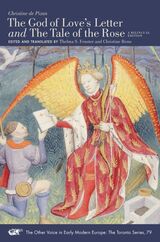 "The God of Love’s Letter" and "The Tale of the Rose": A Bilingual Edition. With Jean Gerson, “A Poem on Man and Woman,” Translated from the Latin by Thomas O’Donnell
Christine de Pizan
Iter Press, 2020 Christine de Pizan was born in Italy and moved to the French court of Charles V when she was four years old. She led a life of learning, stimulated by her reading and by her drive to engage with the cultural and political issues of her day. As a young widow she sought to support her family through writing, and she broke new ground by pursuing a life as an author and self-publisher, producing an astonishingly large and varied body of work. Her books, owned and read by some of the most important figures of her day, addressed politics, philosophy, government, ethics, the conduct of war, autobiography and biography, and religious subjects.
The God of Love’s Letter (1399), Christine de Pizan’s first defense of women, is arguably her most succinct statement about gender. It also rebukes the thirteenth-century Romance of the Rose and anticipates Christine’s City of Ladies. The Tale of the Rose (1402) responds to the growth in chivalric orders for the defense of women by arguing that women, not men, should choose members of the “Order of the Rose.” Both poems are freshly edited here from their earliest manuscripts and each is newly translated into English.
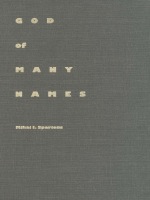 God of Many Names: Play, Poetry and Power in Hellenic Thought, From Homer to Aristotle
Mihai I. Spariosu
Duke University Press, 1991 Tracing the interrelationship among play, poetic imitation, and power to the Hellenic world, Mihai I. Spariosu provides a revisionist model of cultural change in Greek antiquity. Challenging the traditional and static distinction made between archaic and later Greek culture, Spariosu’s perspective is grounded in a dialectical understanding of values whose dominance depends on cultural emphasis and which shifts through time.
Building upon the scholarship of an earlier volume, Dionysus Reborn, Spariosu her continues to draw on Dionysus—the “God of many names,” of both poetic play and sacred power—as a mythical embodiment of the two sides of the classical Greek mentality. Combining philosophical reflection with close textual analysis, the author examines the divided nature of the Hellenic mentality in such primary canonic texts as the Iliad, the Odyssey, the Theogony, Works and Days, the most well-known of the Presocratic fragments, Euripides’ Bacchae, Aristophanes’ The Frogs, Plato’s Republic and Laws, and Aristotle’s Poetics and Politics.
Spariosu’s model illuminates the many of the most enduring questions in contemporary humanistic study and addresses modern questions about the nature of the interrelation of poetry, ethics, and politics.
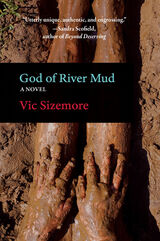 God of River Mud: A Novel
Vic Sizemore
West Virginia University Press, 2024 Winner, 2025 Tennessee Book Award, Fiction
Grappling with innate desires and LGBTQ identity, a family struggles under the oppressive expectations foisted on them by fundamentalist Christianity.
Told through alternating perspectives, God of River Mud chronicles the lives of Berna Minor, her husband, their four children, and Berna’s secret lover. To escape a life of poverty and abuse, Berna Cannaday marries Zechariah Minor, a fundamentalist Baptist preacher, and commits herself to his faith, trying to make it her own. After Zechariah takes a church beside the Elk River in rural Clay, West Virginia, Berna falls in love with someone from their congregation—Jordan, a woman who has known since childhood that he was meant to be a man. Berna keeps her secret hidden as she struggles to be the wife and mother she believes God wants her to be. Berna and Zechariah’s children struggle as well, trying to reconcile the theology they are taught at home with the fast-changing world around them. And Jordan struggles to find a community and a life that allow him both to be safely and fully himself, as Jay, and to be loved for who he is. As the decades and stories unfold, traditional evangelical Bible culture and the values of rural Appalachia clash against innate desires, LGBTQ identity, and gender orientation. Sympathies develop—sometimes unexpectedly—as the characters begin to reconcile their faith and their love. God of River Mud delves into the quandary of those marginalized and dehumanized within a religious patriarchy and grapples with the universal issues of identity, faith, love, and belonging.
 God Owes Us Nothing: A Brief Remark on Pascal's Religion and on the Spirit of Jansenism
Leszek Kolakowski
University of Chicago Press, 1995 God Owes Us Nothing reflects on the centuries-long debate in Christianity: how do we reconcile the existence of evil in the world with the goodness of an omnipotent God, and how does God's omnipotence relate to people's responsibility for their own salvation or damnation. Leszek Kolakowski approaches this paradox as both an exercise in theology and in revisionist Christian history based on philosophical analysis. Kolakowski's unorthodox interpretation of the history of modern Christianity provokes renewed discussion about the historical, intellectual, and cultural omnipotence of neo-Augustinianism.
"Several books a year wrestle with that hoary conundrum, but few so dazzlingly as the Polish philosopher's latest."—Carlin Romano, Washington Post Book World
"Kolakowski's fascinating book and its debatable thesis raise intriguing historical and theological questions well worth pursuing."—Stephen J. Duffy, Theological Studies
"Kolakowski's elegant meditation is a masterpiece of cultural and religious criticism."—Henry Carrigan, Cleveland Plain Dealer
The God Pumpers: Religion in the Electronic Age
Marshall W. Fishwick
University of Wisconsin Press, 1987 The rituals of religion these days as practiced in the United States on television, have become big theatre, a big show. Televangelism is big business, amounting to billions of dollars each year. Televangelists discussed are Billy Graham, Jimmy Swaggert, Jerry Falwell, Jim and Tammy Bakker, Terry Cole-Whittaker, Marilyn Hickey, Danuto Rylko Soderman, and Beverly LaHaye.
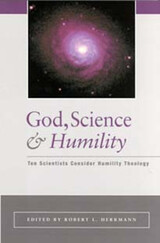 God, Science, and Humility: Ten Scientists Consider Humility Theology
Robert Hermann
Templeton Press, 2000
Editor Robert Herrmann has collected the opinions of ten scientists, all leaders in their fields, who have considered the relevance of their science to theology. The contributors bring a variety of religious experiences to the consideration of humility theology, a humble approach to our truth-seeking about God.
As a physicist, Russell Stannard provides an overview of humility theology in which truth is approached in an experimental, hypothetical mode, as is done in the sciences. Physicist and theologian Robert Russell focuses on the interaction between cosmology and theology. Charles Harper writes of the opportunity for a tremendous flowering of planetary science through a joint partnership between science and religion.
Owen Gingerich, historian of science, looks at the other side of humility theology—the possibility that we can actually arrive at unreasonable expectations— about the existence and nature of extraterrestrial intelligence. Francisco Ayala begins with the surprising contrast between the very brief period of human evolution and its remarkable and utterly unique end-product, homo sapiens. Psychologist David Myers points out that intuition can be a powerful faculty, but there are many limitations to this “inner knowing.”
Chemist Giuseppe Del Re writes an interesting view of the history of the development of chemistry as a discipline. Herbert Benson and Patricia Myers analyze the components of mind-body medicine that relate to the rubric of self-care, including relaxation procedures, nutrition, exercise, stress management, and faith. David and Susan Larson introduce the reader to a new field of medical science that focuses on the impact of spiritual values on patients' health. Fraser Watts looks at artificial intelligence research.
The discussion included in this book will significantly aid scholars and general readers in the search for greater understanding of the relationship between science and religion.
Contributors include Russell Stannard, Robert John Russell, Charles L. Harper Jr., Owen Gingerich, Francisco J. Ayala, David G. Myers, Giuseppe Del Re, Herbert Benson, Patricia Myers, David B. Larson, Susan S. Larson, and Fraser Watts.
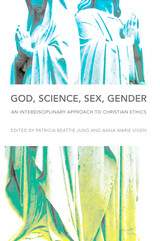 God, Science, Sex, Gender: An Interdisciplinary Approach to Christian Ethics
Edited by Patricia Beattie Jung and Aana Marie Vigen with John Anderson
University of Illinois Press, 2010 God, Sex, Science, Gender: An Interdisciplinary Approach to Christian Ethics is a timely, wide-ranging attempt to rescue dialogues on human sexuality, sexual diversity, and gender from insular exchanges based primarily on biblical scholarship and denominational ideology. Too often, dialogues on sexuality and gender devolve into the repetition of party lines and defensive postures, without considering the interdisciplinary body of scholarly research on this complex subject. This volume expands beyond the usual parameters, opening the discussion to scholars in the humanities, social sciences, and natural sciences to foster the development of Christian sexual ethics for contemporary times. Essays by prominent and emerging scholars in the fields of anthropology, sociology, psychology, philosophy, literary studies, theology, and ethics reveal how faith and reason can illuminate our understanding of human sexual and gender diversity. Focusing on the intersection of theology and science and incorporating feminist theory, God, Science, Sex, Gender is a much-needed call for Christian ethicists to map the origins and full range of human sexual experience and gender identity. Essays delve into why human sexuality and gender can be so controversial in Christian contexts, investigate the complexity of sexuality in humans and other species, and reveal the implications of diversity for Christian moral theology. Contributors are Joel Brown, James Calcagno, Francis J. Catania, Pamela L. Caughie, Robin Colburn, Robert Di Vito, Terry Grande, Frank Fennell, Anne E. Figert, Patricia Beattie Jung, Fred Kniss, John McCarthy, Jon Nilson, Stephen J. Pope, Susan A. Ross, Joan Roughgarden, and Aana Marie Vigen.
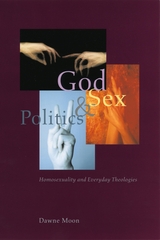 God, Sex, and Politics: Homosexuality and Everyday Theologies
Dawne Moon
University of Chicago Press, 2004 God, Sex, and Politics examines both sides of the church controversy over homosexuality to consider the ways in which people develop, in everyday thought and interaction, their beliefs about God and justice. Dawne Moon explores how members of Protestant congregations determine what is just and what is not, what is right and what is wrong, what is loving and what is sinful.
Through this compelling work we learn that the considerable turmoil surrounding homosexuality in churches has less to do with homosexuality than with the fear of weakening the church's spiritual, communal solidarity. We learn too how the church mirrors the secular world—the fear of division and politics leads members to avoid conflict in the congregations Moon examines. And so, the Protestants who are the subject of her study avoid debating the key issue of whether homosexuality is sinful because of its potentially polarizing effects. The religious culture Moon uncovers is ultimately critical of politics and of the intense moral and social discord that members believe it entails.
God, Sex, and Politics will be of enormous value to sociologists of religion and anyone interested in religious controversies over sexuality.
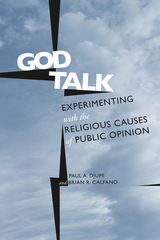 God Talk: Experimenting With the Religious Causes of Public Opinion
Paul Djupe
Temple University Press, 2013 Religion’s influence on public opinion, politics, and candidates has been widely discussed in political science for a generation. God Talk isthe first volume that uses experimental methodology to establish whether and how that influence works. Paul Djupe and Brian Calfano provide an unprecedented look at how religious cues, values, and identity-driven appeals impact candidate selection, trust, interest group support, and U.S. public opinion about tolerance, the environment, foreign policy, and related issues. By situating their disparate, randomly assigned interventions within the broader framework of elite-based influence, the authors apply their new methodology to three questions: How do clergy affect congregation members? How are religious elites and groups and their public arguments evaluated? With what effect do political elites use religion? The results of their research provide a compelling framework for understanding the links between religion and politics.
In the series The Social Logic of Politics, edited by Scott McClurg
God: The Autobiography
Franco Ferrucci
University of Chicago Press, 1996 At the center of Franco Ferrucci's God: An Autobiography is one tender, troubled character: God. In the beginning is God's solitude, and because God is lonely he creates the world. He falls in love with Earth, plunges into the oceans, lives as plant and reptile and bird. His every thought and mood serve to populate the planet, with consequences that run away from him—sometimes delightfully, sometimes unfortunately. Witty, thought-provoking, and beautifully translated, this playful and irresistible Short will leave you wondering where philosophy ends and fiction begins, while it recounts thousands of years of religious thought—and reminds you that above all else, God knows how to tell a good story.
God: The Case Against
Philip Holt
Sussex Academic Press, 2022 God: The Case Against; examines the reasons why religious belief has such a strong hold on so large a section of humanity. It attempts to show that the reasons are inadequate. In particular, God and the idea of a life after death are examined and it is proposed that viable, coherent concepts are probably impossible in both cases. It is also shown, however, that the main alternative to theism, which is materialism, itself presents difficulties. This book is not intended for philosophers or theologians, rather, the aim is to make the arguments accessible to intelligent, intellectually curious, open-minded people.
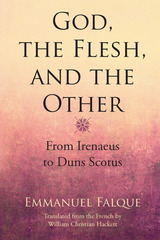 God, the Flesh, and the Other: From Irenaeus to Duns Scotus
Emmanuel Falque Translated from the French by William Christian Hackett
Northwestern University Press, 2015 In God, the Flesh, and the Other, the philosopher Emmanuel Falque joins the ongoing debate about the role of theology in phenomenology. An important voice in the second generation of French philosophy’s “theological turn,” Falque examines philosophically the fathers of the Church and the medieval theologians on the nature of theology and the objects comprising it. Falque works phenomenology itself into the corpus of theology. Theological concepts thus translate into philosophical terms that phenomenology should legitimately question: concepts from contemporary phenomenology such as onto-theology, appearance, reduction, body/flesh, inter-corporeity, the genesis of community, intersubjectivity, and the singularity of the other find penetrating analogues in patristic and medieval thought forged through millennia of Christological and Trinitarian debate, mystical discourses, and speculative reflection. Through Falque’s wide-ranging interpretive path, phenomenology finds itself interrogated—and renewed.
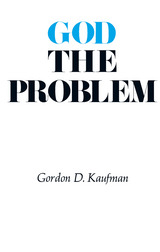 God the Problem
Gordon D. Kaufman
Harvard University Press, 1972 The most discussed and most significant issue on the religious scene today is whether it is possible, or even desirable, to believe in God. Mr. Kaufman's valuable study does not offer a doctrine of God, but instead explores why God is a problem for many moderns, the dimensions of that problem, and the inner logic of the notion of God as it has developed in Western culture.
His object is to determine the function or significance of talk about God: how the concept of God is generated in human experience; the special problems in turn generated by this concept (for example, the intelligibility of the idea of transcendence, the problem of theodicy) and how they are met; and under what circumstances the idea of God is credible or important or even indispensable. He does not try to prove God's existence or nonexistence, but elucidates what the concept of God means and the important human needs it fulfills.
Four of the eleven essays have been previously published, at least in part; seven are completely new.
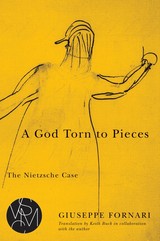 A God Torn to Pieces: The Nietzsche Case
Giuseppe Fornari
Michigan State University Press, 2013 Giuseppe Fornari’s groundbreaking inquiry shows that Friedrich Nietzsche’s neglected importance as a religious thinker and his “untimeliness” place him at the forefront of modern thought. Capable of exploiting his own failures as a cognitive tool to discover what other philosophers never wanted to see, Nietzsche ultimately drove himself to mental collapse. Fornari analyzes the tragic reports of Nietzsche’s madness and seeks out the cause of this self-destructive destiny, which, he argues, began earlier than his rivalry with the composer and polemicist Richard Wagner, dating back to the premature loss of Nietzsche’s father. Dramatic experience enabled Nietzsche to detect a more general tendency of European culture, leading to his archaeological and prophetic discovery of the death of God, which he understood as a primordial assassination from which all humankind took its origin. Fornari concludes that Nietzsche’s fatal rebellion against a Christian awareness, which he identified as the greatest threat to his plan, led him to become one and the same not only with Dionysus but also with the crucified Christ. His effort, Fornari argues, was a dramatic way to recognize the silent, inner meaning of Christ’s figure, and perhaps to be forgiven.
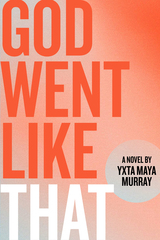 God Went Like That: A Novel
Yxta Maya Murray
Northwestern University Press, 2023 An artful and gripping new novel that recounts the human and environmental damage caused by actual disasters in Simi Valley, California
In award-winning legal scholar and novelist Yxta Maya Murray’s new novel, federal agent Reyna Rodriguez reports on a real-life nuclear reactor meltdown and accidents that occurred in 1959, 1964, and 1968 at the Santa Susana Field Laboratory. An infamous research and development complex in California’s Simi Valley, the lab was eventually dismantled by the US government—but not before it created a toxic legacy of contamination and numerous cancer clusters. Toxins and nuclear residue may have been further released by the 2018 Woolsey Fire and 2019 floods in the area.
God Went Like That takes the form of an EPA report in which Reyna presents riveting interviews with individuals affected by the disasters. With imagination and artistry, Murray brings to life an actual 2011 Department of Energy dossier that detailed the catastrophes and the ensuing public health fallout and highlights the high costs of governmental malfeasance and environmental racism.
 The God Who Commands
Richard J. Mouw
University of Notre Dame Press, 1990 "Richard Mouw probes, from a Calvinist tradition, the place of obedience to a divine command... Mouw suggests that a Calvinist perspective on moral theology can profit from an openness to some contemporary developments, particularly narrativist ethics, feminist thought and the insights gained from the charismatic movement." --America
"Mouw's book is a valuable contribution to contemporary ethics by a scholar whose profound love for the God of revelation is evident on every page." --New Oxford Review
"This is an excellent book, astutely crafted and argued, Mouw has reintroduced divine command morality to contemporary Christian ethics, and his work should be central in the dialogue he encourages." --The Christian Century
"Mouw's way of posing the complex issues in fresh clear ways always illumines them, and his incisive distinctions and insights will challenge others to revise their understandings of divine command ethics." -The Journal of Religion
Richard J. Mouw, Provost and Professor of Christian Philosophy and Ethics at Fuller Theological Seminary, has published many books, including Distorted Truth.Ã¥
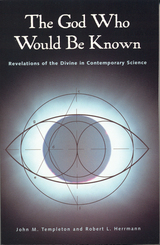 The God Who Would Be Known: Revelations Of Divine Contemporary Science
John Marks Templeton
Templeton Press, 1998 Until recently, science’s ability to describe and define our universe threatened to make religion obsolete. But the well-received hardcover edition of this book demonstrated that, increasingly, God is being revealed through science. Now available in paperback, this positive work is for all who ponder the mystery and wonder of our universe—and the God who plans and oversees it. Probing the philosophical and theological impact of scientific discoveries, the authors urge us to adopt an analytical and open posture toward both science and religion. In the spirit of Sir Francis Bacon, this fascinating exploration shows us how “the book of God’s works” (natural science) can tell us a great deal about “the book of God’s words” (Scripture). “We began this book with the idea that the God who has made this awesome and wonderful universe is utterly beyond our capacity to measure and yet is also the God who would be known. He has placed remarkable signs in the heavens, on Earth, and in ourselves: signals of transcendence. We conclude that this universe is here by divine plan, and that science itself, for decades a bastion of unbelief, has once again become the source of humankind’s assurance of intimate divine concern in its affairs.”
—from the authors
God Without Being: Hors-Texte
Jean-Luc Marion
University of Chicago Press, 1991 Jean-Luc Marion advances a controversial argument for a God free of all categories of Being. Taking a characteristically postmodern stance, Marion challenges a fundamental premise of both metaphysics and neo-Thomist theology: that God, before all else, must be. Rather, he locates a "God without Being" in the realm of agape, of Christian charity or love.
This volume, the first translation into English of the work of this leading Catholic philosopher, offers a contemporary perspective on the nature of God.
"An immensely thoughtful book. . . . It promises a rich harvest. Marion's highly original treatment of the idol and the icon, the Eucharist, boredom and vanity, conversion and prayer takes theological and philosophical discussions to a new level."—Norman Wirzba, Christian Century
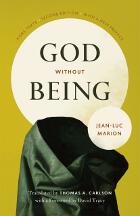 God Without Being: Hors-Texte, Second Edition
Jean-Luc Marion
University of Chicago Press, 2012 Jean-Luc Marion is one of the world’s foremost philosophers of religion as well as one of the leading Catholic thinkers of modern times. In God Without Being, Marion challenges a fundamental premise of traditional philosophy, theology, and metaphysics: that God, before all else, must be. Taking a characteristically postmodern stance and engaging in passionate dialogue with Heidegger, he locates a “God without Being” in the realm of agape, or Christian charity and love. If God is love, Marion contends, then God loves before he actually is. First translated into English in 1991, God Without Being continues to be a key book for discussions of the nature of God. This second edition contains a new preface by Marion as well as his 2003 essay on Thomas Aquinas. Offering a controversial, contemporary perspective, God Without Being will remain essential reading for scholars and students of philosophy and religion. “Daring and profound. . . . In matters most central to his thesis, [Marion]’s control is admirable, and his attunement to the nuances of other major postmodern thinkers is impressive.”—Theological Studies “A truly remarkable work.”—First Things “Very rewarding reading.”—Religious Studies Review
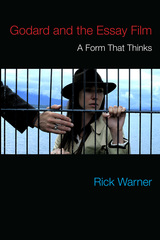 Godard and the Essay Film: A Form That Thinks
Rick Warner
Northwestern University Press, 2018 Godard and the Essay Film offers a history and analysis of the essay film, one of the most significant forms of intellectual filmmaking since the end of World War II. Warner incisively reconsiders the defining traits and legacies of this still-evolving genre through a groundbreaking examination of the vast and formidable oeuvre of Jean-Luc Godard.
The essay film has often been understood by scholars as an eccentric development within documentary, but Warner shows how an essayistic process of thinking can materialize just as potently within narrative fiction films, through self-critical investigations into the aesthetic, political, and philosophical resources of the medium. Studying examples by Godard and other directors, such as Orson Welles, Chris Marker, Agnès Varda, and Harun Farocki, Warner elaborates a fresh account of essayistic reflection that turns on the imaginative, constructive role of the viewer.
Through fine-grained analyses, this book contributes the most nuanced description yet of the relational interface between viewer and screen in the context of the essay film. Shedding new light on Godard’s work, from the 1960s to the 2010s, in film, television, video, and digital stereoscopy, Warner distills an understanding of essayistic cinema as a shared exercise of critical rumination and perceptual discovery.
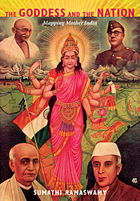 The Goddess and the Nation: Mapping Mother India
Sumathi Ramaswamy
Duke University Press, 2010 Making the case for a new kind of visual history, The Goddess and the Nation charts the pictorial life and career of Bharat Mata, “Mother India,” the Indian nation imagined as mother/goddess, embodiment of national territory, and unifying symbol for the country’s diverse communities. Soon after Mother India’s emergence in the late nineteenth century, artists, both famous and amateur, began to picture her in various media, incorporating the map of India into her visual persona. The images they produced enabled patriotic men and women in a heterogeneous population to collectively visualize India, affectively identify with it, and even become willing to surrender their lives for it. Filled with illustrations, including 100 in color, The Goddess and the Nation draws on visual studies, gender studies, and the history of cartography to offer a rigorous analysis of Mother India’s appearance in painting, print, poster art, and pictures from the late nineteenth century to the present. By exploring the mutual entanglement of the scientifically mapped image of India and a (Hindu) mother/goddess, Sumathi Ramaswamy reveals Mother India as a figure who relies on the British colonial mapped image of her dominion to distinguish her from the other goddesses of India, and to guarantee her novel status as embodiment, sign, and symbol of national territory. Providing an exemplary critique of ideologies of gender and the science of cartography, Ramaswamy demonstrates that images do not merely reflect history; they actively make it. In The Goddess and the Nation, she teaches us about pictorial ways of learning the form of the nation, of how to live with it—and ultimately to die for it.
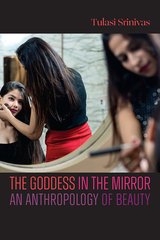 The Goddess in the Mirror: An Anthropology of Beauty
Tulasi Srinivas
Duke University Press, 2025 In The Goddess in the Mirror, Tulasi Srinivas offers a pathbreaking ethnography of contemporary Indian beauty parlors in Bangalore. Exploring the gendered world of beauty in the intimate spaces of the salon, whose popularity has exploded amid an urban tech revolution, Srinivas invites readers to consider what beauty is and what it does. Visiting diverse salons that cater to various classes, castes, and queer sexualities, she tracks the relationships between clients and workers, revealing the beauty industry’s painful political, religious, and economic stakes. Embodiment, religion, and narrative intersect as clients and beauticians tell well-known stories of beautiful Hindu goddesses, heroines, queens, and apsaras, thereby weaving their own ethical subjectivities every day. Following the goddess’s allure, radiance, woundedness, fluidity, and fertility, Srinivas situates ideas of beauty within a larger moral and political context where beauty is both a fleeting pursuit and a rich resource for navigating a patriarchal present.
Goddesses and Monsters: Women, Myth, Power, and Popular Culture
Jane Caputi
University of Wisconsin Press, 2004 The essays in Goddesses and Monsters recognize popular culture as a primary repository of ancient mythic energies, images, narratives, personalities, icons, and archetypes. Together, they take on the patriarchal myth, where serial killers are heroes, where goddesses—in the form of great white sharks, femmes fatales, and aliens—are ritually slaughtered, and where pornography is the core story underlying militarism, environmental devastation, and racism. They also point to an alternative imagination of female power that still can be found behind the cult devotion given to Princess Diana and animating all the goddesses disguised as popular monsters, queen bitches, mammies, vamps, cyborgs, and sex bombs.
Godefridus Schalcken: A Dutch Painter in Late Seventeenth-Century London
Wayne Franits
Amsterdam University Press, 2018 In his own day, Godefridus Schalcken (1643—1706) was an internationally renowned Dutch painter, but little is known about the four years that he spent in London. Using newly discovered documents, this book provides the first comprehensive examination of Schalcken’s activities there. The author analyses Schalcken’s strategic appropriations of English styles, his attempts to exploit gaps in the art market, and his impact on tastes in London’s milieu. Five chapters survey his art during these years, concluding with a critical catalogue of all his London-period work.
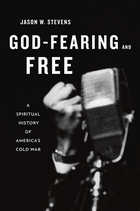 God-Fearing and Free: A Spiritual History of America's Cold War
Jason W. Stevens
Harvard University Press, 2010 Religion has been on the rise in America for decades—which strikes many as a shocking new development. To the contrary, Jason Stevens asserts, the rumors of the death of God were premature. Americans have always conducted their cultural life through religious symbols, never more so than during the Cold War. In God-Fearing and Free, Stevens discloses how the nation, on top of the world and torn between grandiose self-congratulation and doubt about the future, opened the way for a new master narrative. The book shows how the American public, powered by a national religious revival, was purposefully disillusioned regarding the country’s mythical innocence and fortified for an epochal struggle with totalitarianism.
Stevens reveals how the Augustinian doctrine of original sin was refurbished and then mobilized in a variety of cultural discourses that aimed to shore up democratic society against threats preying on the nation’s internal weaknesses. Suddenly, innocence no longer meant a clear conscience. Instead it became synonymous with totalitarian ideologies of the fascist right or the communist left, whose notions of perfectability were dangerously close to millenarian ideals at the heart of American Protestant tradition. As America became riddled with self-doubt, ruminations on the meaning of power and the future of the globe during the “American Century” renewed the impetus to religion.
Covering a wide selection of narrative and cultural forms, Stevens shows how writers, artists, and intellectuals, the devout as well as the nonreligious, disseminated the terms of this cultural dialogue, disputing, refining, and challenging it—effectively making the conservative case against modernity as liberals floundered.
godhouse
Ruth Ellen Kocher
Omnidawn, 2023 Poems that consider the human body as a meeting place of the infinite and the mortal.
Starting with the idea that the human experience is the universe looking back at itself, godhouse takes the notion a few steps further by centering cosmology within a raced and gendered body. Ruth Ellen Kocher’s poems envision this body as a union of god and soul that, within our material world, encompasses love and hate, joy and despair. The body is a site of divine presence made mortal, electrified with the resonance of both the infinite and the human. In godhouse, we encounter the body as a site where the universe is made personal and celebratory, where the celestial endure the complications of flesh and friction forms between the glorious and the monstrous aspects of personhood.
"Godless Communists": Atheism and Society in Soviet Russia, 1917-1932
William B. Husband
Northern Illinois University Press, 2000
"Godless Communists" offers a fresh interpretation of early Soviet efforts to create an atheistic, scientific society. Husband shows that religion, contrary to Bolshevik assertions, was not merely an expression of gullibility and ignorance but a firmly entrenched system for ordering family and community relationships. The Bolsheviks' efforts to abolish the Church failed because they underestimated how tightly religious beliefs were woven into the fabric of the Russians' daily lives.
Exploring the confrontation between secularism and the lower classes' traditional beliefs, "Godless Communists" illustrates how developments between 1917 and 1932 shaped the attitudes toward religion and atheism that endure in Russia today.
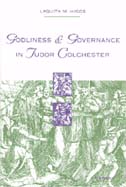 Godliness and Governance in Tudor Colchester
Laquita M. Higgs
University of Michigan Press, 1999 The Tudor period was a time of extremes, when King Henry VIII beheaded wives and Queen Mary executed her subjects by burning. As an early supporter of Henry's Protestant Reformation, the borough of Colchester took the full brunt of Catholic Mary's wrath, and at least thirteen Colchester Protestants were burned for their faith. When the Protestant Elizabeth came to the throne, Colchester leaders, influenced by returning refugees, determined to try to produce a godly society on the Genevan model. They hired their own preacher, but their efforts to reform sinful behavior through civil government met with strong resistance.
In Godliness and Governance in Tudor Colchester Laquita M. Higgs traces the governance and the religion of that town. Though traditional piety held sway early in the Tudor era, there was a strong undercurrent of hereticism, even among town leaders. Such sympathy helps explain Colchester's embrace of Henry VIII's religious reforms. Town governors also found it advantageous to cooperate with the local nobleman, the earl of Oxford, and with their own Thomas Audley, who helped the King shape the reformation. Queen Mary's attempts to root out Protestantism strengthened Colchester's commitment to reform. Under Elizabeth, reformers gradually took over governance of the borough.
Colchester provides one of the earliest illustrations of the workings and tensions of Puritan town governance. Higgs examines the connections between governance and religion with special emphasis on the Elizabethan period. The town's development toward religious radicalism is shown by a comparison of the aldermen of 1530, 1560, and 1590. Higgs explores the camaraderie of the reformers, the attempt of town leaders to correct immoral behavior, and the resultant tensions that produced deep divisions between moderate reformers and radical Puritans. An analysis of extant wills shows the extent to which Puritan governors achieved some degree of success.
Godliness and Governance in Tudor Colchester will be of interest to historians of the Tudor period, Catholicism, Lollardy, and the English Protestant Reformation.
Laquita M. Higgs is Adjunct Lecturer in History, University of Michigan, Dearborn.
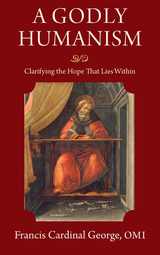 A Godly Humanism: Clarifying the Hope That Lies Within
Francis E. George
Catholic University of America Press, 2015 For Francis Cardinal George, the Catholic Church is not a movement, built around ideas, but a communion, built around relationships. In A Godly Humanism, he shares his understanding of the Church in lively, compelling prose, presenting a way to understand and appreciate the relationships of God to human beings and of human beings to one another. These loving relationships are continually made present to us in and through the Church, from the time of Jesus' first disciples down to our own day. We are introduced to how the spiritual and intellectual life of Christians, aided in every generation by the Holy Spirit working through the Apostles and their successors, resist the danger of splitting apart from one another. Though they take different outward forms at different times, both wisdom and holiness are made possible for every Christian of every station of life. Sign-posting his conversation by the milestones of his own spiritual and intellectual journey, Cardinal George invites us to view the Church and her history in ways that go beyond the categories of politics - through which we find merely human initiative, contrivance, and adjustment - and rather to see the initiative as God's first and foremost. God is the non-stop giver, we are non-stop recipients of his gifts, and the recent popes, no less than the Father of the Church, have made every effort to make us aware of the graces - that is, of the unearned benefits - that God confers on us as Catholics, as Christians, as believers, and simply as human persons. Pope Francis, he reminds us, contrasts human planning with God's providence, and this book is at once an exposition of that providence and a personal response of gratitude for the way it has operated in one man's life.
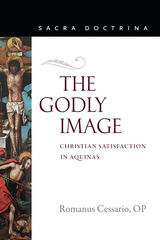 The Godly Image: Christian Satisfaction in Aquinas
Romanus Cessario
Catholic University of America Press, 2020 Christian satisfaction stands at the center of the Church’s teaching about salvation. Satisfaction pertains to studies about Christ, redemption, the Sacraments, and pastoral practice. The topic also enters into questions about God and the creature as well as about the divine mercy and providence. Somewhat neglected in the period after Vatican II, satisfaction now appears to scholars as the forgotten key to entering deeply into the mystery of Christ and his work. Seminarians especially will benefit from studying the place satisfaction holds in Catholic life.
Further, ecumenical work requires a proper understanding of the place that satisfaction holds in Christian theology. Various factors operative since the sixteenth century have worked to displace satisfaction almost entirely from reformed practice and theology. To address such concerns, The Godly Image, has, over the past several decades and more, done a great deal to put satisfaction within its proper context of image-restoration. That is, to interpret satisfaction within the context of the divine mercy and not the divine justice. This unique contribution to satisfaction studies owes a great deal to the achievement of Saint Thomas Aquinas. In this sense, the book enacts a retrieval of the theology of the high classical period. Like much of Aquinas’s refined teaching, a proper understanding requires appeal to the commentatorial tradition that follows him. Interested students will find in this study the touchstones for further studies of these authors.
The Godly Image aims also to distinguish the theology of Aquinas from that of the medieval author with whom the notion of satisfaction remains mostly identified, that is, Anselm of Canterbury. Although not a developed focus of the book’s contents, the attentive reader will recognize that Aquinas treats Saint Anselm with a reverential reading, even as the Common Doctor moves significantly away from interpretations of satisfaction that suggest that an angry God exacts from his innocent Son a painful substitutional penalty for a fallen human race.
 Godly Letters: The Literature of the American Puritans
Michael J. Colacurcio
University of Notre Dame Press, 2006 In Godly Letters, Michael J. Colacurcio analyzes a treasury of works written by the first generation of seventeenth-century American Puritans. Arguing that insufficient scrutiny has been given this important oeuvre, he calls for a reevaluation of the imaginative and creative qualities of America's early literature of inspired ecclesiological experiment, one that focuses on the quality of the works as well as the demanding theology they express.
Colacurcio gives a detailed, richly contextualized account of the meaning of these "godly letters" in rhetorical, theological, and political terms. From his close readings of the major texts by the first generation of Puritans—including William Bradford, Thomas Hooker, Edward Johnson, John Winthrop, Thomas Shepard, and John Cotton—he expertly illuminates qualities other studies have often overlooked. In his words, close study of the literature yields work "comprehensive, circumspect, determined subtle, energetic, relentlessly intellectual, playful in spite of their cultural prohibitions, in spite of themselves, even, they are in every way remarkable products of a culture that . . . assigned an extraordinarily high place to the life of words." Magisterial in sweep, Godly Letters is likely to stand as the definitive work on the Puritan literary achievement.
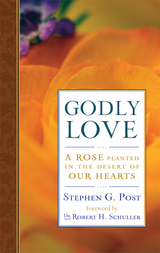 Godly Love: A Rose Planted in the Desert of Our Hearts
Stephen G. Post
Templeton Press, 2008 In this uplifting new book, author Stephen G. Post explores the mysteries and the wonder of Godly love. This all-important love is personal, unconditional, unlimited, generative, and omnipresent. The title alludes to Isaiah 35, how Godly love is said to plant a rose in our hearts precisely when we feel like a desert with no more love to give. Post draws on his life experiences and works at the Institute for Research on Unlimited Love as he intersperses personal anecdotes with spiritual truths and research on human happiness. In the process, he defines the concept of Godly love and illustrates how important it can be in our lives—not only emotionally and spiritually but physically as well. "Godly love," he writes, "is the only foundation in the universe that we can really lean on." We all have deserts in life, so we all need Godly love. Without it, the downward slide to cynicism, hostility, and cool indifference can be too easy. These meditations on the subject will nurture our confidence in the power of a love greater than our own when we need it most.
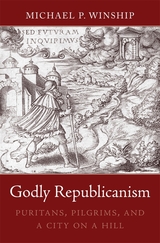 Godly Republicanism: Puritans, Pilgrims, and a City on a Hill
Michael P. Winship
Harvard University Press, 2012 Puritans did not find a life free from tyranny in the New World—they created it there. Massachusetts emerged a republic as they hammered out a vision of popular participation and limited government in church and state, spurred by Plymouth Pilgrims. Godly Republicanism underscores how pathbreaking yet rooted in puritanism’s history the project was.
Michael Winship takes us first to England, where he uncovers the roots of the puritans’ republican ideals in the aspirations and struggles of Elizabethan Presbyterians. Faced with the twin tyrannies of Catholicism and the crown, Presbyterians turned to the ancient New Testament churches for guidance. What they discovered there—whether it existed or not—was a republican structure that suggested better models for governing than monarchy.
The puritans took their ideals to Massachusetts, but they did not forge their godly republic alone. In this book, for the first time, the separatists’ contentious, creative interaction with the puritans is given its due. Winship looks at the emergence of separatism and puritanism from shared origins in Elizabethan England, considers their split, and narrates the story of their reunion in Massachusetts. Out of the encounter between the separatist Plymouth Pilgrims and the puritans of Massachusetts Bay arose Massachusetts Congregationalism.
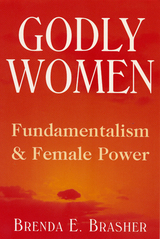 Godly Women: Fundamentalism and Female Power
Brasher, Brenda E
Rutgers University Press, 1997 Fundamentalist women are often depicted as dedicated to furthering the goals and ideas of fundamentalist men and thus of ancillary importance to the movement as a whole. Godly Women, Brenda Brasher's groundbreaking ethnographic study, reveals the paradox that fundamentalist women can be powerful people in a religious cosmos generally understood to be organized around their disempowerment. Brasher spent six months as an active participant in two Christian fundamentalist congregations to study firsthand the power of fundamentalist women. In addition to the narrow set of religious beliefs that constitute each congregation, she discovered that gender functions as a sacred partition which literally divides the congregation in two, establishing parallel religious worlds. The first of these worlds is led by men and encompasses overall congregational life; the second is a world composed of and led solely by women. Brasher explores how and why women become involved in this highly gendered religious world by examining women's ministries, Bible study groups, and conversion narratives. She discovers that women-only activities create and sustain a parallel symbolic world within and among congregations, which improves women's ability to direct the course of their lives and empowers them in their relationships with others. The women develop intimate social networks that act as a resource for those in distress and provide the basis for political coalition when women wish to alter the patterns of congregational life. Brasher's study sheds new light on the ideas and faith experiences of fundamentalist women, revealing that the religiosity they develop is not as disempowering as one might think. Brenda Brasher is an assistant professor of religion at Mount Union College.
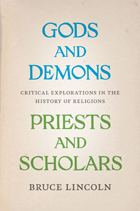 Gods and Demons, Priests and Scholars: Critical Explorations in the History of Religions
Bruce Lincoln
University of Chicago Press, 2012 Bruce Lincoln is one of the most prominent advocates within religious studies for an uncompromisingly critical approach to the phenomenon of religion—historians of religions, he believes, should resist the preferred narratives and self-understanding of religions themselves, especially when their stories are endowed with sacred origins and authority. In Gods and Demons, Priests and Scholars, Lincoln assembles a collection of essays that both illustrates and reveals the benefits of his methodology, making a case for a critical religious studies that starts with skepticism but is neither cynical nor crude. The book begins with Lincoln’s “Theses on Method” and ends with “The (Un)discipline of Religious Studies,” in which he unsparingly considers the failings of uncritical and nonhistorical approaches to the study of religions. In between, Lincoln presents new examinations of problems in ancient religions and relates these cases to larger comparative themes. While bringing to light important features of the formation of pantheons and the constructions of demons, chaos, and the dead, Lincoln demonstrates that historians of religions should take religious things—inspired scriptures, sacred centers, salvific rites, communities graced by divine favor—as the theories of interested humans that shape perception, community, and experiences. As he shows, it is for their terrestrial influence, and not their sacred origins, that religious phenomena merit consideration by the historian. Tackling many questions central to religious study, Gods and Demons, Priests and Scholars will be a touchstone for the history of religions in the twenty-first century.
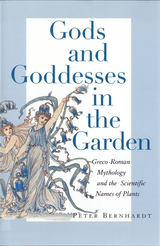 Gods and Goddesses in the Garden: Greco-Roman Mythology and the Scientific Names of Plants
Bernhardt, Peter
Rutgers University Press, 2008 Zeus, Medusa, Hercules, Aphrodite. Did you know that these and other dynamic deities, heroes, and monsters of Greek and Roman mythology live on in the names of trees and flowers? Some grow in your local woodlands or right in your own backyard garden. In this delightful book, botanist Peter Bernhardt reveals the rich history and mythology that underlie the origins of many scientific plant names. Unlike other books about botanical taxonomy that take the form of heavy and intimidating lexicons, Bernhardt's account comes together in a series of interlocking stories. Each chapter opens with a short version of a classical myth, then links the tale to plant names, showing how each plant "resembles" its mythological counterpart with regard to its history, anatomy, life cycle, and conservation. You will learn, for example, that as our garden acanthus wears nasty spines along its leaf margins, it is named for the nymph who scratched the face of Apollo. The shape-shifting god, Proteus, gives his name to a whole family of shrubs and trees that produce colorful flowering branches in an astonishing number of sizes and shapes. Amateur and professional gardeners, high school teachers and professors of biology, botanists and conservationists alike will appreciate this book's entertaining and informative entry to the otherwise daunting field of botanical names. Engaging, witty, and memorable, Gods and Goddesses in the Garden transcends the genre of natural history and makes taxonomy a topic equally at home in the classroom and at cocktail parties.
Gods and Heroes of the Greeks: The "Library" of Apollodorus
Michael Simpson
University of Massachusetts Press, 1976 We are currently updating our website and have not yet posted complete information for this title. Many of our books are in the Google preview program, which allows readers to view up to 20% of the book. If this title is active in the program, you will find the Google Preview button in the sidebar below.
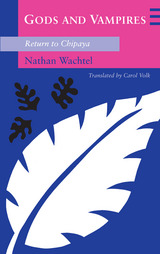 Gods and Vampires: Return to Chipaya
Nathan Wachtel
University of Chicago Press, 1994 When Nathan Wachtel, the distinguished historical anthropologist, returned to the village of Chipaya, the site of his extensive fieldwork in the Bolivian Andes, he learned a group of Uru Indians was being incarcerated and tortured for no apparent reason. Even more strangely, no one—not even his closest informant and friend—would speak about it.
Wachtel discovered that a series of recent deaths and misfortunes in Chipaya had been attributed to the evil powers of the Urus, a group usually regarded with suspicion by the other ethnic groups. Those incarcerated were believed to be the chief sorcerers and vampires whose paganistic practices had brought death to Chipaya by upsetting the social order. Wachtel's investigation, told in Gods and Vampires: Back to Chipaya, reveals much about relations between the Urus and the region's dominant ethnic groups and confronts some of the most trenchant issues in contemporary anthropology. His analysis shows that the Urus had become victims of the same set of ideals the Spanish had used, centuries before, to establish their hegemony in the region.
Presented as a personal detective story, Gods and Vampires is Wachtel's latest work in a series studying the ongoing impact of the Spanish conquest on the Andean consciousness and social system. Its insight into Bolivian society and the legacy of hegemony confronts some of the most trenchant issues in contemporary anthropologyand will be of great interest to scholars of anthropology, Latin American studies, and Native American studies.
 god’s breath hovering across the waters
Henry Israeli
Four Way Books, 2016 god’s breath hovering across the waters begins with the story of Arthur Penzias’s discovery of the echo of the big bang through a cryogenic microwave receiver and from there explodes into a meditation on the author’s mother’s untimely and tragic death. Memories, history, war, science, horror movies, space exploration, and the RCA dog are just some of the subjects that expand and contract, intersect and repel, throughout the arc of the collection. Praise for previous books: “Such lovely doubts in these poems….These rescues are almost always simply human—a couple making love, a child drawing—as the edge here, the dread, is so humanly complex. This is simultaneously a raw and restrained book. Israeli doesn't spew or explain but remains open to the need so consistently embodied in these poems.” —Bob Hicok “Israeli is visceral and brilliant, intransigent in his doubts. His poems lead deeper into the wilderness—toward the human, the ambivalent, the paradox Dorothy Day called ‘a hard and dreadful love.’’ —D. Nurkse
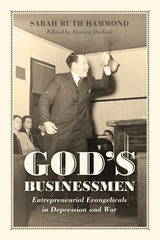 God's Businessmen: Entrepreneurial Evangelicals in Depression and War
Sarah Ruth Hammond
University of Chicago Press, 2017 How evangelical businessmen in the 1930s and 1940s joined their religious and business lives.
The evangelical embrace of conservatism is a familiar feature of the contemporary political landscape. What’s less well-known, however, is that the connection predates the Reagan revolution, going all the way back to the Depression and World War II. Evangelical businessmen at the time were quite active in opposing the New Deal—on both theological and economic grounds—and in doing so claimed a place alongside other conservatives in the public sphere. Like previous generations of devout laymen, they self-consciously merged their religious and business lives, financing and organizing evangelical causes with the kind of visionary pragmatism that they practiced in the boardroom.
In God’s Businessmen, Sarah Ruth Hammond explores not only these men’s personal trajectories but also those of the service clubs and other institutions that, like them, believed that businessmen were God’s instrument for the Christianization of the world. Hammond presents a capacious portrait of the relationship between the evangelical business community and the New Deal—and in doing so makes important contributions to American religious history, business history, and the history of the American state.
God's Choice: The Total World of a Fundamentalist Christian School
Alan Peshkin
University of Chicago Press, 1988 Is Bethany Baptist Academy God's choice? Ask the fundamentalist Christians who teach there or whose children attend the academy, and their answer will be a yes as unequivocal as their claim that the Bible is God's inerrant, absolute word. Is this truth or arrogance?
In God's Choice, Alan Peshkin offers readers the opportunity to consider this question in depth. Given the outsider's rare chance to observe such a school firsthand, Peshkin spent eighteen months studying Bethany's high school—interviewing students, parents, and educators, living in the home of Bethany Baptist Church members, and participating fully in the church's activities. From this intimate research he has fashioned a rich account of Christian schooling and an informed analysis of a clear alternative to public education.
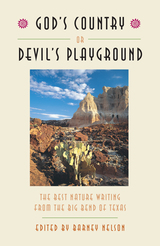 God's Country or Devil's Playground: The Best Nature Writing from the Big Bend of Texas
Edited by Barney Nelson
University of Texas Press, 2002 The dramatic desert landscapes of the Big Bend country along the Texas-Mexico border reminded historian Walter Prescott Webb of "an earth-wreck in which a great section of country was shaken down, turned over, blown up, and set on fire." By contrast, naturalist Aldo Leopold considered the region a mountainous paradise in which even the wild Mexican parrots had no greater concern than "whether this new day which creeps slowly over the canyons is bluer or golder than its predecessors, or less so." Whether it impresses people as God's country or as the devil's playground, the Big Bend typically evokes strong responses from almost everyone who lives or visits there. In this anthology of nature writing, Barney Nelson gathers nearly sixty literary perspectives on the landscape and life of the Big Bend region, broadly defined as Trans-Pecos Texas and northern Chihuahua, Mexico. In addition to Leopold and Webb, the collection includes such well-known writers as Edward Abbey, Mary Austin, Roy Bedichek, and Frederick Olmsted, as well as a wide range of voices that includes explorers, trappers, cowboys, ranch wives, curanderos, college presidents, scientists, locals, tourists, historians, avisadores, and waitresses. Following a personal introduction by Barney Nelson, the pieces are grouped thematically to highlight the distinctive ways in which writers have responded to the Big Bend.
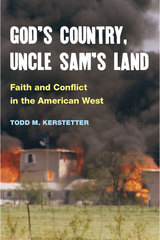 God's Country, Uncle Sam's Land: Faith and Conflict in the American West
Todd M. Kerstetter
University of Illinois Press, 2005 While many studies of religion in the West have focused on the region's diversity, freedom, and individualism, Todd M. Kerstetter brings together the three most glaring exceptions to those rules to explore the boundaries of tolerance as enforced by society and the U.S. government. God's Country, Uncle Sam's Land analyzes Mormon history from the Utah Expedition and Mountain Meadows Massacre of 1857 through subsequent decades of federal legislative and judicial actions aimed at ending polygamy and limiting church power. It also focuses on the Lakota Ghost Dancers and the Wounded Knee Massacre in South Dakota (1890), and the Branch Davidians in Waco, Texas (1993). In sharp contrast to the mythic image of the West as the "Land of the Free," these three tragic episodes reveal the West as a cultural battleground--in the words of one reporter, "a collision of guns, God, and government." Asking important questions about what happens when groups with a deep trust in their differing inner truths meet, Kerstetter exposes the religious motivations behind government policies that worked to alter Mormonism and extinguish Native American beliefs.
 God's Creativity and Human Action: Christian and Muslim Perspectives
Lucinda Mosher and David Marshall, Editors
Georgetown University Press, 2019 A record of the 2015 Building Bridges Seminar for leading Christian and Muslim scholars, this collection of essays explores the nature of divine and human agency through themes of creation’s goal, humankind’s dignity and task, and notions of sovereignty. Part I sets the context for the book with “Human Action within Divine Creation: A Muslim Perspective” by Mohsen Kadivar of Duke University and “On the Possibility of Holy Living: A Christian Perspective” by Lucy Gardner of Oxford University. The rest of the book includes paired essays—one from a Muslim perspective, one from a Christian perspective—that introduce scriptural material with commentary to aid readers in conducting dialogical study. In her conclusion, coeditor Lucinda Mosher digests the illuminating small-group conversations that lie at the heart of the Building Bridges initiative, conversations that convey a vivid sense of the lively, penetrating but respectful dialogue for which the project is known. This unique volume will be a valuable resource to scholars, students, and professors of Christianity and Islam.
Gods, Demons, and Others
R. K. Narayan llustrated by R. K. Laxman
University of Chicago Press, 1993 Following in the footsteps of the storytellers of his native India, R. K. Narayan has produced his own versions of tales taken from the Ramayana and the Mahabarata. Carefully selecting those stories which include the strongest characters, and omitting the theological or social commentary that would have drawn out the telling, Narayan informs these fascinating myths with his urbane humor and graceful style.
"Mr. Narayan gives vitality and an original viewpoint to the most ancient of legends, lacing them with his own blend of satire, pertinent explanation and thoughtful commentary."—Santha Rama Rau, New York Times
"Narayan's narrative style is swift, firm, graceful, and lucid . . . thoroughly knowledgeable, skillful, entertaining. One could hardly hope for more."—Rosanne Klass, Times Literary Supplement
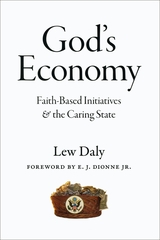 God's Economy: Faith-Based Initiatives and the Caring State
Lew Daly
University of Chicago Press, 2009 President Obama has signaled a sharp break from many Bush Administration policies, but he remains committed to federal support for religious social service providers. Like George W. Bush’s faith-based initiative, though, Obama’s version of the policy has generated loud criticism—from both sides of the aisle—even as the communities that stand to benefit suffer through an ailing economy. God’s Economy reveals that virtually all of the critics, as well as many supporters, have long misunderstood both the true implications of faith-based partnerships and their unique potential for advancing social justice. Unearthing the intellectual history of the faith-based initiative, Lew Daly locates its roots in the pluralist tradition of Europe’s Christian democracies, in which the state shares sovereignty with social institutions. He argues that Catholic and Dutch Calvinist ideas played a crucial role in the evolution of this tradition, as churches across nineteenth-century Europe developed philosophical and legal defenses to protect their education and social programs against ascendant governments. Tracing the influence of this heritageon the past three decades of American social policy and church-state law, Daly finally untangles the radical beginnings of the faith-based initiative. In the process, he frees it from the narrow culture-war framework that has limited debate on the subject since Bush opened the White House Office for Faith-Based and Community Initiatives in 2001. A major contribution from an important new voice at the intersection of religion and politics, God’s Economy points the way toward policymaking that combines strong social support with a new moral focus on the protection of families and communities.
God's Empire: William Bell Riley and Midwestern Fundamentalism
William V., Jr. Trollinger
University of Wisconsin Press, 1991
More than any other individual, William Bell Riley, pastor of the First Baptist Church of Minneapolis, inspired the resurgence of Protestant fundamentalism in 1930s America. Trollinger explores the development of Riley’s theology and social thought, examining in detail the rise of the Northwestern Bible and Missionary Training School and other similar institutions. He sheds light upon the nature, successes, and failures of fundamentalist crusades and makes it clear that, to understand fundamentalist religion in America, one must focus upon its regional and local roots.
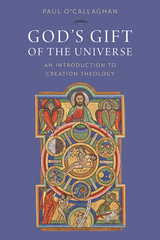 God's Gift of the Universe: An Introduction to Creation Theology
Paul O'Callaghan
Catholic University of America Press, 2021 There are many ways of understanding the reality of the world we live in and experience. Science, philosophy, art all offer us ample descriptions, explanations and intuitions. But Christian believers go beyond all that, for they attempt to understand the origins of the universe in terms of the creation of the world by God. Revelation tells us what God had in mind when he made the world ex nihilo, without presuppositions of any kind. God’s Gift of the Universe attempts to present the principal elements and stages of creation theology. The doctrine is to be found fundamentally, of course, in Scripture, both Old and New Testament, which describes the world in the light of God’s word. Yet since God actually gave existence to the world, down to the last detail, our reflection on God’s word not only explains the reality of creation, how it works, its nature, as science does. It also explains how creation came into being in the mind and heart of the Triune God, and, ultimately, why God created the world.
In God’s Gift of the Universe, a considerable effort has been spent throughout the book on the Christological and Trinitarian aspects of creation, particularly in the theology of Church Fathers. Creation is presented besides in a deeply eschatological key, for God created the world for purpose of making his glory eternally manifest. The book also considers the way God ‘intervenes’ in the life of the created world, through conservation in being and providence. The meaning of time, matter and spirit are considered. The need for ecological awareness is central. One aspect of the mystery of creation that receives special attention is the presence of evil in the world. This is of particular importance once we accept that God made the world, whole and entire, thus assuming responsibility for the world as it is. The origin of evil through the sin of spiritual creatures provides the ultimate though not the only explanation of the mystery of evil. Particular consideration is given to the reality of ‘original sin’.
God's Grace and Human Action: 'Merit' in the Theology of Thomas Aquinas
Joseph P. Wawrykow
University of Notre Dame Press, 1996 Offering a fresh approach to one significant aspect of the soteriology of Thomas Aquinas, God’s Grace and Human Action brings important scholarship and insight to the issue of merit in Aquinas’s theology. Through a careful historical analysis, Joseph P. Wawrykow delineates the precise function of merit in Aquinas's account of salvation, revealing that the attainment of salvation through merit testifies not only to the dignity of the human person but even more to the goodness of God.
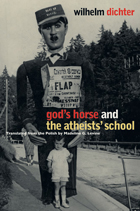 God's Horse and The Atheists' School
Wilhelm Dichter
Northwestern University Press, 2012 Wilhelm Dichter's autobiographical novels, God's Horse and The Atheists' School, have been translated into English for the first time and are presented here in a single volume. From the gradually maturing perspective of the narrator, a Polish Jewish youngster, they recount the harrowing tale of his family's struggle to survive the Holocaust and their privileged post-Holocaust lives as members of Poland's political elite. God's Horse depicts the sudden reversal of victim status that occurred when, in the postwar period, the hidden Jewish child became a little Red prince, thanks to his stepfather, a Jewish rising star in the communist regime. The Atheists' School, the sequel, follows the narrator through the years of high Stalinism into young adulthood and depicts the tensions between dedicated Jewish communists, some of whom join the elite, and Jews who are convinced that the Jews in Poland will inevitably be victimized again.
In spare, precise prose, Dichter brings to life the tensions between ideologues and pragmatists, Polish patriots and their Soviet masters. These evocative novels also provide a psychologically persuasive and profoundly moving portrait of the narrator. The author's alter ego, supported by his stalwart and overly indulgent mother, possesses the tenacity to transform himself from an awkward, traumatized child survivor into an unsettled but eventually independent-minded young man.
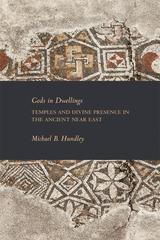 Gods in Dwellings: Temples and Divine Presence in the Ancient Near East
Michael B. Hundley
SBL Press, 2013 In this book devoted exclusively to temples and perceptions of the divine presences that inhabit them, Michael B. Hundley focuses on the official religions of the ancient Near East and explores the interface between the human and the divine within temple environs. Hundley identifies common ancient Near Eastern temple systems and examines issues that include what temple structures communicate, how temples were understood to function, temple ideology, the installation of divine presence in a temple, the connection between presence and physical representation, and human service to the deity. Drawing on architectural and spatial theory, ritual theory, theories of language, art history, archaeology, sociocultural anthropology, and comparative studies, Hundley offers a single interpretive lens through which to view temple worship. Features: - A close examination of temples in Egypt, Mesopotamia, Hittite Anatolia, and Syria-Palestine
- An interdisciplinary treatment of architecture, language, ritual, and art
- A dual focus on how a deity's divine presence connects to space and art and how human service to the deity maintains the deity's active presence
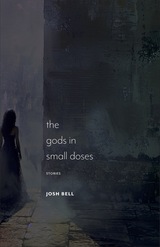 The Gods in Small Doses: Stories
Josh Bell
University of Massachusetts Press, 2026 The magical and mundane twist together in this collection of surreal stories
In this collection of stories set in an uncanny American suburbia and haunted by a lurking unease, the peculiar feeling of ephemeral youth finds its voice. The stories in The Gods in Small Doses depict childhood through a funhouse mirror, as a time of myth and damage, of tenderness and terror. Anything—except what should happen—can happen next.
A retired witch traps a goat-killing feral child, a girl becomes obsessed with the regenerative properties of her younger brother’s body, Armageddon is fought between the forces of good (those who like to go to bed early) and evil (those who prefer to stay up late), a supernatural orphan insinuates his way into an all-American family, the god Poseidon wrecks a high-school house party, and the women of a fabulated island city all mysteriously disappear overnight. In these fast, comic, and troubling tales, sweetness and violence vie to become synonymous.
This is a universe of both realism and surrealism, of magic and the mundane, where strong but deeply flawed characters fight to exert control over things—time, death, themselves—that can’t be controlled. Dreamlike moments of body horror, catastrophe, and absurdity challenge the reader to embrace the taboo and to expect—always—the unexpected. Bell’s stories offer a twisted, unique, and utterly fascinating take on what it means to “grow up,” and all of the questions that the notion inspires.
 The Gods in Small Doses: Stories
Josh Bell
University of Massachusetts Press, 2026 The magical and mundane twist together in this collection of surreal stories
In this collection of stories set in an uncanny American suburbia and haunted by a lurking unease, the peculiar feeling of ephemeral youth finds its voice. The stories in The Gods in Small Doses depict childhood through a funhouse mirror, as a time of myth and damage, of tenderness and terror. Anything—except what should happen—can happen next.
A retired witch traps a goat-killing feral child, a girl becomes obsessed with the regenerative properties of her younger brother’s body, Armageddon is fought between the forces of good (those who like to go to bed early) and evil (those who prefer to stay up late), a supernatural orphan insinuates his way into an all-American family, the god Poseidon wrecks a high-school house party, and the women of a fabulated island city all mysteriously disappear overnight. In these fast, comic, and troubling tales, sweetness and violence vie to become synonymous.
This is a universe of both realism and surrealism, of magic and the mundane, where strong but deeply flawed characters fight to exert control over things—time, death, themselves—that can’t be controlled. Dreamlike moments of body horror, catastrophe, and absurdity challenge the reader to embrace the taboo and to expect—always—the unexpected. Bell’s stories offer a twisted, unique, and utterly fascinating take on what it means to “grow up,” and all of the questions that the notion inspires.
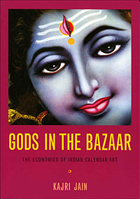 Gods in the Bazaar: The Economies of Indian Calendar Art
Kajri Jain
Duke University Press, 2007 Gods in the Bazaar is a fascinating account of the printed images known in India as “calendar art” or “bazaar art,” the color-saturated, mass-produced pictures often used on calendars and in advertisements, featuring deities and other religious themes as well as nationalist leaders, alluring women, movie stars, chubby babies, and landscapes. Calendar art appears in all manner of contexts in India: in chic elite living rooms, middle-class kitchens, urban slums, village huts; hung on walls, stuck on scooters and computers, propped up on machines, affixed to dashboards, tucked into wallets and lockets. In this beautifully illustrated book, Kajri Jain examines the power that calendar art wields in Indian mass culture, arguing that its meanings derive as much from the production and circulation of the images as from their visual features. Jain draws on interviews with artists, printers, publishers, and consumers as well as analyses of the prints themselves to trace the economies—of art, commerce, religion, and desire—within which calendar images and ideas about them are formulated. For Jain, an analysis of the bazaar, or vernacular commercial arena, is crucial to understanding not only the calendar art that circulates within the bazaar but also India’s postcolonial modernity and the ways that its mass culture has developed in close connection with a religiously inflected nationalism. The bazaar is characterized by the coexistence of seemingly incompatible elements: bourgeois-liberal and neoliberal modernism on the one hand, and vernacular discourses and practices on the other. Jain argues that from the colonial era to the present, capitalist expansion has depended on the maintenance of these multiple coexisting realms: the sacred, the commercial, and the artistic; the official and the vernacular.
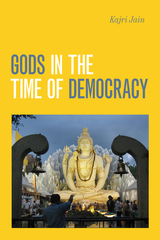 Gods in the Time of Democracy
Kajri Jain
Duke University Press, 2021 In 2018 India's prime minister, Narendra Modi, inaugurated the world's tallest statue: a 597-foot figure of nationalist leader Sardar Patel. Twice the height of the Statue of Liberty, it is but one of many massive statues built following India's economic reforms of the 1990s. In Gods in the Time of Democracy Kajri Jain examines how monumental icons emerged as a religious and political form in contemporary India, mobilizing the concept of emergence toward a radical treatment of art historical objects as dynamic assemblages. Drawing on a decade of fieldwork at giant statue sites in India and its diaspora and interviews with sculptors, patrons, and visitors, Jain masterfully describes how public icons materialize the intersections between new image technologies, neospiritual religious movements, Hindu nationalist politics, globalization, and Dalit-Bahujan verifications of equality and presence. Centering the ex-colony in rethinking key concepts of the image, Jain demonstrates how these new aesthetic forms entail a simultaneously religious and political retooling of the “infrastructures of the sensible.”
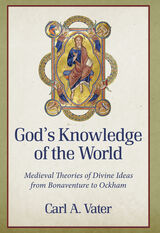 God's Knowledge of the World: Medieval Theories of Divine Ideas from Bonaventure to Ockham
Carl A. Vater
Catholic University of America Press, 2022 A theory of divine ideas was the standard Scholastic response to the question how does God know and produce the world? A theory was deemed to be successful only if it simultaneously upheld that God has perfect knowledge and that he is supremely simple and one. In articulating a theory of divine ideas, Carl Vater answers two sorts of questions. First, what is an idea? Does God have ideas? Are there many divine ideas? What sort of existence does an idea enjoy? Second, he answers questions about the scope of divine ideas: does God have ideas of individuals, species, genera, accidents, matter, evil, etc.? How many divine ideas are there?
These questions cause the Scholastic authors to articulate clearly, among other things, their positions on the nature of knowledge, relation, exemplar causality, participation, infinity, and possibility. An author’s theory of divine ideas, then, is the locus for him to test the coherence of his metaphysical, epistemological, and logical principles. Many of the debates over divine ideas have their roots in disagreements over whether a given theory adequately articulates one of the underlying positions or the overall coherence of those positions. Peter John Olivi, for example, argues that his predecessors’ theories of knowledge and theories of relations are at odds, and this critique results in a major shift in theories of divine ideas.
God's Knowledge of the World examines theories of divine ideas from approximately 1250–1325 AD (St. Bonaventure through Ockham). It will be the only work dedicated to categorizing and comparing the major theories of divine ideas in the Scholastic period.
 God’s Law and Order: The Politics of Punishment in Evangelical America
Aaron Griffith
Harvard University Press, 2020 Winner of a Christianity Today Book Award
An incisive look at how evangelical Christians shaped—and were shaped by—the American criminal justice system.
America incarcerates on a massive scale. Despite recent reforms, the United States locks up large numbers of people—disproportionately poor and nonwhite—for long periods and offers little opportunity for restoration. Aaron Griffith reveals a key component in the origins of American mass incarceration: evangelical Christianity.
Evangelicals in the postwar era made crime concern a major religious issue and found new platforms for shaping public life through punitive politics. Religious leaders like Billy Graham and David Wilkerson mobilized fears of lawbreaking and concern for offenders to sharpen appeals for Christian conversion, setting the stage for evangelicals who began advocating tough-on-crime politics in the 1960s. Building on religious campaigns for public safety earlier in the twentieth century, some preachers and politicians pushed for “law and order,” urging support for harsh sentences and expanded policing. Other evangelicals saw crime as a missionary opportunity, launching innovative ministries that reshaped the practice of religion in prisons. From the 1980s on, evangelicals were instrumental in popularizing criminal justice reform, making it a central cause in the compassionate conservative movement. At every stage in their work, evangelicals framed their efforts as colorblind, which only masked racial inequality in incarceration and delayed real change.
Today evangelicals play an ambiguous role in reform, pressing for reduced imprisonment while backing law-and-order politicians. God’s Law and Order shows that we cannot understand the criminal justice system without accounting for evangelicalism’s impact on its historical development.
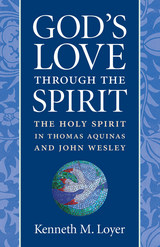 God's Love through the Spirit
Kenneth M. Loyer
Catholic University of America Press, 2014 Although the doctrine of the Holy Spirit has often been a neglected subject in theology, it remains vital for understanding both the Christian confession of God as Trinity and the nature of the Christian life. In view of those two topics, God's Love through the Spirit examines the relationship between love and the person and work of the Holy Spirit in Thomas Aquinas and John Wesley - two very different figures whose teachings on the Spirit and the Christian life are found to be, on the whole, surprisingly compatible. An investigation into Aquinas's amor-based pneumatology, including a groundbreaking analysis of his recently discovered Pentecost sermon, and a fresh assessment of the doctrine of sanctification in Wesley show that in distinctive yet largely complementary ways, Aquinas and Wesley provide resources that can be used to reclaim a richer pneumatology, specifically in relation to the theological virtue of love.
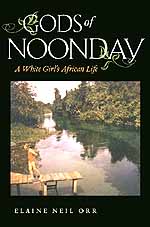 Gods of Noonday: A White Girl's African Life
Elaine Neil Orr
University of Virginia Press, 2003 "Orr's acute memory and reflective contemplations about life in her beloved Africa...give readers an intricate picture of an unusual upbringing blended with an adult's take on the cultural changes in the world beyond the missionary compounds."
--PUBLISHERS WEEKLY
The daughter of medical missionaries, Elaine Neil Orr was born in Nigeria in 1954, in the midst of the national movement that would lead to independence from Great Britain. But as she tells it in her captivating new memoir, Orr did not grow up as a stranger abroad; she was a girl at home--only half American, the other half Nigerian. When she was sent alone to the United States for high school, she didn't realize how much leaving Africa would cost her.
It was only in her forties, in the crisis of kidney failure, that she began to recover her African life. In writing Gods of Noonday she came to understand her double-rootedness: in the Christian church and the Yoruba shrine, the piano and the talking drum. Memory took her back from Duke Medical Center in North Carolina to the shores of West Africa and her hometown of Ogbomosho in the land of the Yoruba people. Hers was not the dysfunctional American family whose tensions are brought into high relief by the equatorial sun, but a mission girlhood is haunted nonetheless--by spiritual atmospheres and the limits of good intentions.
Orr's father, Lloyd Neil, formerly a high school athlete and World War II pilot, and her mother, Anne, found in Nigeria the adventure that would have escaped them in 1950s America. Elaine identified with her strong, fun-loving father more than her reserved mother, but she herself was as introspective and solitary as her sister Becky was pretty and social. Lloyd acquired a Chevrolet station wagon which carried Elaine and her friends to the Ethiope River, where they swam much as they might have in the United States. But at night the roads were becoming dangerous, and soon the days were clouded by smoke from the coming Biafran War.
Interweaving the lush mission compounds with Nigerian culture, furloughs in the American South with boarding school in Nigeria, and eventually Orr's failing health, the narrative builds in intensity as she recognizes that only through recovering her homeland can she find the strength to survive. Taking its place with classics such as Out of Africa and more recent works like The Poisonwood Bible and Don't Let's Go to the Dogs Tonight, Gods of Noonday is a deeply felt, courageous portrait of a woman's life.
--------------------------------------------------------------------------------
Elaine Neil Orr, a professor of literature and women's studies at North Carolina State University, is the author of two scholarly books. She has been awarded an NEH fellowship and writing fellowships in creative nonfiction by the North Carolina Arts Council and the Virginia Center for the Creative Arts.
The Gods of Revolution
Christopher Dawson
Catholic University of America Press, 2015 Please fill in marketing copy
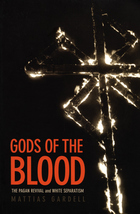 Gods of the Blood: The Pagan Revival and White Separatism
Mattias Gardell
Duke University Press, 2003 Racist paganism is a thriving but understudied element of the American religious and cultural landscape. Gods of the Blood is the first in-depth survey of the people, ideologies, and practices that make up this fragmented yet increasingly radical and militant milieu. Over a five-year period during the 1990s Mattias Gardell observed and participated in pagan ceremonies and interviewed pagan activists across the United States. His unprecedented entree into this previously obscure realm is the basis for this firsthand account of the proliferating web of organizations and belief systems combining pre-Christian pagan mythologies with Aryan separatism. Gardell outlines the historical development of the different strands of racist paganism—including Wotanism, Odinism and Darkside Asatrú—and situates them on the spectrum of pagan belief ranging from Wicca and goddess worship to Satanism. Gods of the Blood details the trends that have converged to fuel militant paganism in the United States: anti-government sentiments inflamed by such events as Ruby Ridge and Waco, the rise of the white power music industry (including whitenoise, dark ambient, and hatecore), the extraordinary reach of modern communications technologies, and feelings of economic and cultural marginalization in the face of globalization and increasing racial and ethnic diversity of the American population. Gardell elucidates how racist pagan beliefs are formed out of various combinations of conspiracy theories, anti-Semitism, warrior ideology, populism, beliefs in racial separatism, Klandom, skinhead culture, and tenets of national socialism. He shows how these convictions are further animated by an array of thought selectively derived from thinkers including Nietzche, historian Oswald Spengler, Carl Jung, and racist mystics. Scrupulously attentive to the complexities of racist paganism as it is lived and practiced, Gods of the Blood is a fascinating, disturbing, and important portrait of the virulent undercurrents of certain kinds of violence in America today.
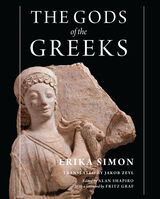 The Gods of the Greeks
Erika Simon, Translated by Jakob Zeyl, Edited by Alan Shapiro
University of Wisconsin Press, 2021 Originally published in Germany fifty years ago, The Gods of the Greeks has remained an enduring work. Influential scholar Erika Simon was one of the first to emphasize the importance of analyzing visual culture alongside literature to better understand how ancient Greeks perceived their gods. Giving due consideration to cult ritual and the phenomenon of genealogical relationships between mortals and immortals, this pioneering volume remains one of the few to approach the Greek gods from an archaeological perspective. From Zeus to Hermes, each of the major deities is considered in turn, with Simon’s insights on their nature and attributes guiding the reader to a fuller understanding of how their followers perceived and worshipped them in the ancient world.
This careful and fluid translation finally makes Simon’s landmark edition accessible to English-language readers. With an abundance of beautiful illustrations, the book examines portrayals of the thirteen major gods in art over the course of two millennia. Scholars who study the lives and practices of those living in ancient Greece will value this newest contribution.
 God’s Own Land: Sacred Landscape, Pilgrim Economy, and Religious Change in the Ganga Himalaya
James G. Lochtefeld
Lever Press, 2026 God’s Own Land follows the tectonic shift from traditional religious pilgrimage in the early twentieth-century to contemporary pilgrim tourism, in which ever-burgeoning visitor numbers have brought both benefits and challenges to the Garhwal region of India—the source of Hindu India’s sacred river, the Ganges. Despite Hinduism’s regional and sectarian variation, India’s Garhwal Himalaya region is one the most sacred places to Hindus, drawing pilgrims across sectarian lines from throughout the subcontinent and the world. This sacred land—devabhumi or “land of the gods”—appears in foundational Hindu stories describing the presence and activity of gods, goddesses, saints, and cultural heroes.
This study from James G. Lochtefeld draws out Hindu convictions regarding the Garhwal’s eternal and continuing sanctity as a holy region, based on the premise of an “imagined landscape.” The region is strongly associated with divine activity and yet the landscape is a real place with a real history inhabited by real people, who have historically been poor because of the challenges created by the region’s geography. Juxtaposing the history of the region with its construction in the Hindu imaginary, this multidisciplinary study unpacks the nuanced image of the region, its religious significance, and the impacts of pilgrimages on the community through textual, historical, and ethnographic methods.
God's Own Scientists: Creationists in a Secular World
Toumey, Christopher P.
Rutgers University Press, 1994 Toumey focuses the tools of his discipline on a group whose distance from the twentieth-century American mainstream is measured not in decades or miles but rather in existential understandings about reality. Toumey studies both the national scientific creationism movement and the operation of a local creationist study group in his state's Research Triangle in the mid-1980s, seeking to understand the underlying beliefs--about morality, the Bible, science itself--that modern scientific creationism embodies, as well as the reasons this "system of cultural meanings" helps many conservative Christians "make sense of the realities, anxieties, changes, and uncertainties of life in the United States in the late twentieth century." A perceptive and respectful analysis by a nonbeliever
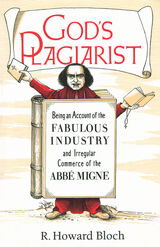 God's Plagiarist: Being an Account of the Fabulous Industry and Irregular Commerce of the Abbe Migne
R. Howard Bloch
University of Chicago Press, 1994 God's Plagiarist is an entertaining account of the abbe Jacques-Paul Migne, one of the great entrepreneurs of the nineteenth century. A priest in Orleans from 1824 to 1833, Migne then moved to Paris, where, in the space of a decade, he built one of the most extensive publishing ventures of all time.
How did he do it?
Migne harnessed a deep well of personal energy and a will of iron to the latest innovations in print technology, advertising, and merchandising. His assembly-line production and innovative marketing of the massive editions of the Church Fathers placed him at the forefront of France's new commerce. Characterized by the police as one of the great "schemers" of the century, this priest-entrepreneur put the most questionable of business practices in the service of his devotion to Catholicism.
Part detective novel, part morality tale, Bloch's narrative not only will interest scholars of nineteenth-century French intellectual history but will appeal also to general readers interested in the history of publishing or just a good historical yarn.
"An unforgettable, Daumier-like portrait, sharp and satirical, of this enterprising, austere and somewhat crazed merchandiser of sacred learning. . . . Bloch deserves great credit for the wit and style of his effort to explore the Pedantic Park of nineteenth-century learning, that island of monsters which scholars have found, as yet, no escape."—Anthony Grafton, New Republic
"Bloch is an exhilarating guide to the methods which made Migne the Napoleon of the Prospectus, a publicist of genius, Buffalo Bill and P.T. Barnum rolled into one."—David Coward, Times Literary Supplement
"Mercifully, Bloch's sense of humour has none of that condescending mock-bewilderment commonly applied to the foreign or ancient. . . . It enables Bloch to promote Migne as a forerunner of the department store and to place him on a continuum running from St. Paul to the Tupperware party: the quality of the merchandise is increasingly irrelevant, still more the nature of its contents."—Graham Robb, London Review of Books
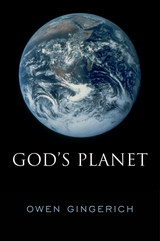 God’s Planet
Owen Gingerich
Harvard University Press, 2014 With exoplanets being discovered daily, Earth is still the only planet we know of that is home to creatures who seek a coherent explanation for the structure, origins, and fate of the universe, and of humanity’s place within it. Today, science and religion are the two major cultural entities on our planet that share this goal of coherent understanding, though their interpretation of evidence differs dramatically. Many scientists look at the known universe and conclude we are here by chance. The renowned astronomer and historian of science Owen Gingerich looks at the same evidence—along with the fact that the universe is comprehensible to our minds—and sees it as proof for the planning and intentions of a Creator-God. He believes that the idea of a universe without God is an oxymoron, a self-contradiction. God’s Planet exposes the fallacy in thinking that science and religion can be kept apart.
Gingerich frames his argument around three questions: Was Copernicus right, in dethroning Earth from its place at the center of the universe? Was Darwin right, in placing humans securely in an evolving animal kingdom? And was Hoyle right, in identifying physical constants in nature that seem singularly tuned to allow the existence of intelligent life on planet Earth? Using these episodes from the history of science, Gingerich demonstrates that cultural attitudes, including religious or antireligious beliefs, play a significant role in what passes as scientific understanding. The more rigorous science becomes over time, the more clearly God’s handiwork can be comprehended.
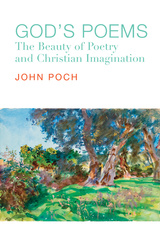 God's Poems: The Beauty of Poetry and the Christian Imagination
John Poch
St. Augustine's Press, 2021 Poetry is exciting, but elusive to most. This is troublesome for Christians because the Bible, John Poch reminds us, is largely composed of poetical verse. In God’s Poems, Poch re-introduces sacred text as purposefully poetic, and explains what that means and invites the reader to with this insight live more thoughtfully and beautifully.
But that is not all. Poch as a well-established and regarded poet, turns his eye to contemporary poetry and vindicates its function in a “created and creative world.” Today many have abandoned the genre as a wasteland of misguided voice that really has nothing to say. The poet is a truth-teller, and Poch as devoted writer, teacher, and believer sends out a renewed call to turn to verse as a means of seeing oneself as God’s poeima, or poem (Letter to Ephesians). The depth of self-knowing relates directly to an aptitude to engage the category of poetry at some level. A tragic void is filled with Poch’s effort to exhort the reader to patiently reconnect with poetry even though it has been hijacked by persons who want to be heard more than speak well. (This book is essential, therefore, for aspiring poets.)
For faithful readers or those seeking to return, Poch is a place to begin to understand contemporary writers worth knowing and which poets of the past must remain with us. In Virgilian fashion, he can see the panorama behind him and that which lies immediately ahead and instills a recovered love of an eternal medium that will be restored to a state of coherency and enlightened perspective. If Poch has faith in poetry it is because poetry is indeed a source of faith. If Justin Martyr claimed that everything that is true belongs to Christians, Poch shows us that everyone who speaks truth is to some degree a poet. Even God with his revealed wisdom chooses poetry as medium par excellence. It is essential to know how poetry works. “Great poems that we consider literature give us what we never expected. They go beyond the usefulness of conveying a feeling and unveiling beauty; and they tell us who we are.”
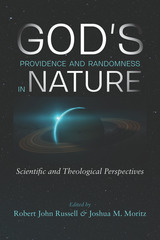 God's Providence and Randomness in Nature: Scientific and Theological Perspectives
Robert John Russell
Templeton Press, 2019 In October 2014, a group of mathematicians, physicists, ecologists, philosophers, and theologians gathered at a special conference in Berkeley, California, to present the results of a two-year research program dubbed “Project SATURN.” This program explored many rich avenues of thought at the intersection of modern science and Christian theology. Chief among them is the possibility that specific processes might be so complex that they do not have sufficient physical causes. Known as “ontological indeterminism,” this idea has profound implications for theology. Specifically, it allows God to be thought of as acting providentially within nature without violating the laws and processes of nature. Such a momentous insight could influence how we understand free will, natural evil, suffering in nature, and the relation between divine providence and human evolution. The essays collected here discussed these topics and were initially presented at the 2014 conference. Part I establishes the scientific basis for conceptualizing specific processes in the universe as inherently random and possibly indeterministic. Part II discusses the philosophical and theological issues that spring from this understanding. Together they represent the cutting edge of thought in the increasingly productive dialogue between science and theology. Short for the “Scientific and Theological Understandings of Randomness in Nature,” Project SATURN was created by the Center for Theology and the Natural Sciences, a Program of the Graduate Theological Union, Berkeley. It was funded with a grant administered by Calvin College and provided by the John Templeton Foundation.
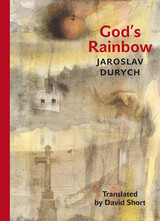 God's Rainbow
Jaroslav Durych
Karolinum Press, 2016 This is a book about collective guilt, individual fate, and repentance, a tale that explores how we can come to be responsible for crimes we neither directly commit nor have the power to prevent. Set in the Czechoslovakian borderland shortly after WWII amid the sometimes violent expulsion of the region’s German population, Jaroslav Durych’s poetic, deeply symbolic novel is a literary touchstone for coming to terms with the Czech Republic’s difficult and taboo past of state-sanctioned violence.
A leading Catholic intellectual of the early twentieth century, Durych became a literary and political throwback to the prewar Czechoslovak Republic and faced censorship under the Stalinist regime of the 1950s. As such, he was a man not unfamiliar with the ramifications of a changing society in which the minority becomes the rule-making political authority, only to end up condemned as criminals. Though Durych finished writing God’s Rainbow in 1955, he could not have hoped to see it published in his lifetime. Released in a still-censored form in 1969, God’s Rainbow is available here in full for the first time in English.
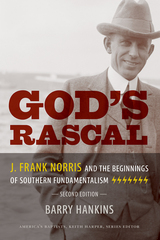 God's Rascal: J. Frank Norris and the Beginnings of Southern Fundamentalism
Barry Hankins
University of Tennessee Press, 2022 Loathed by mainstream Southern Baptists, J. Frank Norris (1877–1952) was in many ways the Southern Baptist Convention’s first fundamentalist. Twenty-five years after its first publication, this second edition of Barry Hankins’s field-defining work God’s Rascal: J. Frank Norris and the Beginnings of Southern Fundamentalism engages new scholar- ship on American fundamentalism to reassess one of the most controversial figures in the history of American Christianity. In this completely revised edition, Hankins pens an entirely new chapter on J. Frank Norris’s murder trial, examines newly uncovered details regarding his recurrent sexual improprieties, and reconsiders his views on race in order to place J. Frank Norris, a man both despicable and captivating, among the most significant Southern fundamentalists of the twentieth century.
Norris merged a southern populist tradition with militant fundamentalism, carving out a distinctly take-no-prisoners political niche within the Baptist church that often offended his allies as much as his enemies. Indeed, Norris was about as bad as a fundamentalist could be. He resided in a world of swirling conspiracies of leftists who, he argued, intended to subvert both evangelical religion and American culture. There are times when Norris’s ego looms so large in his story that he seemed less interested in the threat these alleged conspiracies posed than in their power to keep him in the limelight. Finally, his tactics foreshadowed those employed in the fundamentalists’ tenacious takeover of the Southern Baptist Convention that would occur more than twenty years after Norris’s death.
 God's Rule: The Politics of World Religions
Jacob Neusner, Editor
Georgetown University Press, 2003 Resisting the tendency to separate the study of religion and politics, editor Jacob Neusner pulls together a collection of ten essays in which various authors explain and explore the relationship between the world's major religions and political power. As William Scott Green writes in the introduction, "Because religion is so comprehensive, it is fundamentally about power; it therefore cannot avoid politics." Beginning with the classical sources and texts of Judaism, Christianity, Buddhism, Islam, Confucianism and Hinduism, God's Rule begins to explore the complex nature of how each religion shapes political power, and how religion shapes itself in relation to that power. The corresponding attention to differing theories of politics and views towards non-believers are important not only to studies in comparative religion, but to foreign policy, history and governance as well. From early Christianity's relationship to the Roman Empire to Hinduism's relationship to Gandhi and the caste system, God's Rule provides a basis of understanding from which undergraduates, seminarians and others can begin asking questions of relationships "both unavoidable and systematically uneasy."
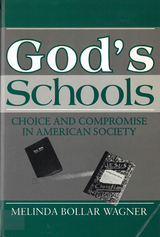 God's Schools
Wagner, Melinda Bollar
Rutgers University Press, 1990 Many of us assume that Christian day schools foster a strict and conservative environment that is very different from the rest of the United States. Christian educators themselves foster this view when they say that following biblical strictures requires that they not always conform to this world. Melinda Wagner goes beyond this stereotype to portray the way these schools foster American popular culture and "professional education culture" as well as "Christian culture." In her participant observation study of a variety of Christian schools (sponsored by fundamentalist, evangelical, new charismatic, Holiness, and Pentecostal Christians), Wagner describes and interprets how such compromises are made. In American culture, children are taught to meet challenges, to compete, and are rewarded for individual achievement. Conservative Christians label this individualism as "secular humanism," and find it antithetical to their view of the self. Instead, these Christians seek a culture of love, compassion, orderliness, non-competitiveness, and separation from the material trappings of this world. But in reality, Wager finds that the schools mix Christian values with the values of American culture. She discovers that even in Christian schools students compete fiercely and are recognized for individual achievements. Christian schools incorporate norms and strategies from mainstream American education. Alternative Christian schools are not as alternative as they could be; they are walking the Christian walk the American way. The Christian schools serve as a case study of the process of culture building. Conservative Christians are trying to revitalize their culture. Yet all along the way, they quite consciously compromise.
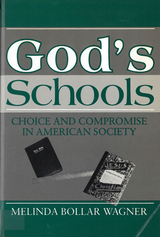 God's Schools: Choice and Compromise in American Society
Wagner, Melinda Bollar
Rutgers University Press, 1990 Many of us assume that Christian day schools foster a strict and conservative environment that is very different from the rest of the United States. Christian educators themselves foster this view when they say that following biblical strictures requires that they not always conform to this world. Melinda Wagner goes beyond this stereotype to portray the way these schools foster American popular culture and "professional education culture" as well as "Christian culture." In her participant observation study of a variety of Christian schools (sponsored by fundamentalist, evangelical, new charismatic, Holiness, and Pentecostal Christians), Wagner describes and interprets how such compromises are made. In American culture, children are taught to meet challenges, to compete, and are rewarded for individual achievement. Conservative Christians label this individualism as "secular humanism," and find it antithetical to their view of the self. Instead, these Christians seek a culture of love, compassion, orderliness, non-competitiveness, and separation from the material trappings of this world. But in reality, Wager finds that the schools mix Christian values with the values of American culture. She discovers that even in Christian schools students compete fiercely and are recognized for individual achievements. Christian schools incorporate norms and strategies from mainstream American education. Alternative Christian schools are not as alternative as they could be; they are walking the Christian walk the American way. The Christian schools serve as a case study of the process of culture building. Conservative Christians are trying to revitalize their culture. Yet all along the way, they quite consciously compromise.
God's Scribe: The Historiographical Art of Galbert of Bruges
Jeff Rider
Catholic University of America Press, 2001 Intended as a companion volume to the De multro, the book provides an outline of the Flemish crisis of 1127-28 and summarizes what is known about Galbert. It traces the elaboration of the De multro from a set of wax notes to a nearly completed chronicle.
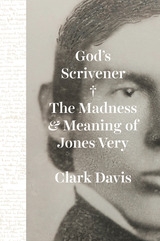 God's Scrivener: The Madness and Meaning of Jones Very
Clark Davis
University of Chicago Press, 2023 A biography of a long-forgotten but vital American Transcendentalist poet.
In September of 1838, a few months after Ralph Waldo Emerson delivered his controversial Divinity School address, a twenty-five-year-old tutor and divinity student at Harvard named Jones Very stood before his beginning Greek class and proclaimed himself “the second coming.” Over the next twenty months, despite a brief confinement in a mental hospital, he would write more than three hundred sonnets, many of them in the voice of a prophet such as John the Baptist or even of Christ himself—all, he was quick to claim, dictated to him by the Holy Spirit.
Befriended by the major figures of the Transcendentalist movement, Very strove to convert, among others, Elizabeth and Sophia Peabody, Bronson Alcott, Nathaniel Hawthorne, and most significantly, Emerson himself. Though shocking to some, his message was simple: by renouncing the individual will, anyone can become a “son of God” and thereby usher in a millennialist heaven on earth. Clark Davis’s masterful biography shows how Very came to embody both the full radicalism of Emersonian ideals and the trap of isolation and emptiness that lay in wait for those who sought complete transcendence.
God’s Scrivener tells the story of Very’s life, work, and influence in depth, recovering the startling story of a forgotten American prophet, a “brave saint” whose life and work are central to the development of poetry and spirituality in America.
 God's Two Books: Copernican Cosmology and Biblical Interpretation in Early Modern Science
Kenneth James Howell
University of Notre Dame Press, 2002 How do we resolve conflicts when fundamental sources of knowledge and belief--such as science and theology--are involved? In God's Two Books, Kenneth Howell offers a historical analysis of how sixteenth- and seventeenth-century astronomers and theologians in Northern Protestant Europe used science and religion to challenge and support one another. Howell reveals that the cosmological schemes developed during this era remain monumental solutions to the enduring problem of how theological interpretation and empirical investigation interact with one another.
"Writing history requires a constant shedding of our misconceptions about the past," says Howell. God's Two Books reshapes our understanding of the interaction of cosmological thought and biblical interpretation in the emerging astronomy of the Scientific Revolution by analyzing new texts and offering interpretations that cast old materials in a new light.
The central argument of this compelling book is that the use of the Bible in early modern cosmology is considerably more complex and subtle than has previously been recognized. Drawing on the writings of Lutheran and Calvinist astronomers, natural philosophers, and theologians, Howell analyzes several underlying patterns of interpretation which affected how these historical figures viewed the mutual interaction of the books of nature and Scripture. He argues that while they differed on how the disciplines of astronomy, physics, and theology should relate to one another, most thinkers shared the common goal of finding and explaining the true system of the universe.
Howell introduces the notion of a convergent realism to describe Protestant intellectuals' approach to incorporating empirical and theological perspectives into a holistic version of the universe. They believed the sacred page was relevant to cosmology but denied that the Bible had scientific content. At the same time, these thinkers argued that the theological truths expressed in the Bible were interwoven into nature in subtle, yet revealing, ways. Their resulting interpretations show continuity with Catholic thinkers and discard oversimplifications such as literal versus figurative hermeneutics or Copernican versus anti-Copernican cosmologies.
Among Howell's many original contributions in this cogent study is a distinctive approach to Kepler's exegesis of nature and an introduction to the debate of many Calvinist thinkers who have previously received little attention.
KENNETH J. HOWELL is the Director of the John Henry Newman Institute of Catholic Thought and Adjunct Professor of Religious Studies at the University of Illinois, Champaign-Urbana.
----------
"How did Catholic, Calvinist and Lutheran theologians respond to the challenge of a moving earth? To what extent could new tensions be relieved by appealing, as Galileo did, to a principle of biblical accommodation--that the language of Scripture had been accommodated to the minds of the unlearned and was therefore not to be invoked in scientific controversy? Were the Protestant Reformers more, or less, flexible than Catholic theologians on the principles of biblical exegesis? These questions have often been addressed but never before with the refinement and rigor shown by Kenneth Howell in this impressive and nuanced study. Rejecting facile generalisation, he explores contrasting national contexts, insisting on the diversity of competing hermeneutic principles that emerged in the wake of Copernicus. He brings new depth to our understanding of Kepler and completely transforms the contrasts routinely drawn between Catholic and Protestant exegetes. Essential reading for Reformation scholars, historians of science, and all who are fascinated by the intricate and changing relations between 'science' and 'religion'." --John Hedley Brooke, Andreas Idreos Professor of Science and Religion, University of Oxford
"Howell's book offers a useful contribution to our understanding of the relationship between the way sixteenth-century astronomers ‘read' the book of nature--and especially the heavens--and their reading of the book of the Scriptures. Of particular importance is Howell's enunciation of the subtleties which distinguished various ‘literal' readings of the Bible which replaced the mediaeval four-fold reading of scripture." --Charlotte Methuen, author of Kepler's Tübingen: Stimulus to a Theological Mathematics
"If God is the author of the Book of Nature and of the Holy Scriptures, how can there be any conflict between them? In this splendid and original study, Kenneth Howell shifts our attention from Copernican astronomy in the Catholic context to its place in relation to Protestant theology and biblical interpretation. While the Catholic tradition relied on the authority of the leaders of the church, the Protestant movement, diverse as it was, aimed at the truth about the cosmos. Both astronomy and the Bible pointed to it. Protestant thought was, as we now say, thoroughly realist in aim and tone. There is a new depth of scholarship in this brilliantly written study, which is bound to change our views of the sixteenth century. It will be read with benefit by theologians and historians of science alike." --Rom Harré, Linacre College, Oxford and Georgetown University
"In this thorough and insightful analysis of early responses to Copernicus's theory, Kenneth Howell demonstrates that he is equally conversant in the theology and the astronomy of the period. The result is an impressive and sophisticated contribution to our understanding science-religion interrelationships." --Geoffrey Cantor, University of Leeds
"Kenneth Howell's excellent book unveils the complexity of biblical meanings in the wake of Copernicus. The complexity preceded Copernicus and involved much more than whether the Bible was to be taken literally or non-literally. Howell deals sympathetically with the respective views of Tycho, Kepler, and Galileo, nicely placing them within the contexts of their times. Indeed, in exploring various Protestant and Catholic traditions, Howell provides a balanced, historical treatment of what can be a contentious subject. His book is an important contribution to our increasingly sophisticated understanding of the history of science and religion." --David Wilson, Iowa State University
"[A] compelling, scholarly study of the upset that cosmic scientific discoveries had upon theological views starting in the 16th and 17th centuries. A fascinating treatise, meticulously researched in its science, its history, and its scripture, God's Two Books is strongly recommended reading..." --The Midwest Book Review
"There are interesting lessons in this book for 21st-century Americans still struggling with the relationship between religion and science, especially in regard to biblical literalism and cosmological history. [A]n important contribution to the history of a critical interval in the history of science and the church." --Choice
"Howell outlines the transition from a medieval separation between astronomy and natural philosophy (physics) to Kepler's integration of the disciplines with mathematics and theology, underscoring an early modern drive to move away from internally coherent theories to explanations that actually described the universe. I give this book an eight for tackling a difficult topic...." --History: Reviews of New Books
"This monograph is a monumental interpretation that builds on the best in prior work and then extends it into nuanced discussion of the interplay between astronomical theory, astronomical observations, contemporary theology, scriptural exegesis, and natural philosophy...Howell produced a first-rate study to which all subsequent work must pay homage. He also provided an enormously useful case study pertinent to contemporary discussions about the relationship among the sciences, the Bible, theologies, and believers." --Perspectives on Science and Christian Faith
"Howell's assessment of hermeneutical strategies that cross the Catholic-Protestant divide is a major contribution to both the history of science and the history of theology. His model of convergent realism holds out the promise of gaining a better insight into more recent tensions between science and religion." --Books & Culture
"In conclusion, Howell does a fine job of exploding the caricature of a rational Copernican science on one side of sixteenth century debates and an outdated medieval Biblicism on the other. Howell has written a rewarding and comprehensive introduction to some of the crucial issues at the intersection of astronomy and biblical interpretation during a pivotal period in the histories of science and of theology. His carefully detailed notes and generous bibliography make this an excellent guide not only to its focal topics but to some of the main historigraphical debates of the last quarter century." --Center for Theology and the Natural Sciences, Spring 2002
"This carefully and broadly researched study is a significant contribution, helpful in clearly away false myths concerning the relationship of Christian churches and early modern natural scientific investigations by sensitively assesing how both theologians and scientific writers operated on the terrain of biblical interpretation." --Wissenchaft
"...wonderfully nuanced.... Howell is adept at describing the rich diversity of biblical interpretation bearing upon cosmological themes that existed long before the Copernican debate, and is especially insightful when illustrating different meanings given to the notion of sensus litteralis. This is a study in subtleties and relationships-the subtleties of scriptural interpretation and the tangled interconnections of astronomy, cosmology, theology, and Scripture. What we carry away is a deeper understanding of the theories and applications of biblical exegesis as they confront and are influenced by the new cosmologies of the early modern era. The book will surely become a standard text in discussions of science and religion and will be much referred to in days to come." --Catholic Historical Review
"[A]n extraordinarily helpful work, both for the novice and for the more advanced scholar." --Religious Studies Review
"Kenneth Howell's work offers a fresh reading of this famous era, describing the multifarious readings of the Bible at work among the astronomers of the day, as well as some of the unexposed issues that lie embedded in the birth of modern science. Any scholar working in natural science, modern theology, biblical studies, or especially some combination of these fields would benefit greatly from this text."--Modern Theology,
"Howell's writing is free of technical jargon and keeps the reader carefully on the path of his primary objective by balancing and interrelating the scientific and theological themes. This important work is a must read for all scientists and humanities scholars, and accessible to the general reader as well." --Journal of Interdisciplinary Studies,
"[Howell] offers rich insights into the impact of the new cosmology on two major movements of Protestantism, Lutheranism in large areas of Western Europe and Calvinism in the Netherlands. This book's scholarship is impressive, as it treats material rarely discussed on the relation between the Copernican vision and biblical faith. [Howell] has made a major contribution to the ongoing discussion of the complex, historical context for the Galileo case, as well as for our understanding of the long history of the relation between theology and science." --Theological Studies
 God’s Universe
Owen Gingerich
Harvard University Press, 2006 We live in a universe with a very long history, a vast cosmos where things are being worked out over unimaginably long ages. Stars and galaxies have formed, and elements come forth from great stellar cauldrons. The necessary elements are present, the environment is fit for life, and slowly life forms have populated the earth. Are the creative forces purposeful, and in fact divine?
Owen Gingerich believes in a universe of intention and purpose. We can at least conjecture that we are part of that purpose and have just enough freedom that conscience and responsibility may be part of the mix. They may even be the reason that pain and suffering are present in the world. The universe might actually be comprehensible.
Taking Johannes Kepler as his guide, Gingerich argues that an individual can be both a creative scientist and a believer in divine design—that indeed the very motivation for scientific research can derive from a desire to trace God’s handiwork. The scientist with theistic metaphysics will approach laboratory problems much the same as does his atheistic colleague across the hall. Both are likely to view the astonishing adaptations in nature with a sense of surprise, wonder, and mystery.
In God’s Universe Gingerich carves out “a theistic space” from which it is possible to contemplate a universe where God plays an interactive role, unnoticed yet not excluded by science.
 God's Waiting Room: Racial Reckoning at Life's End
Casey Golomski
Rutgers University Press, 2025 Third Place in the Victor Turner Prize in Ethnographic Writing from the American Anthropological Association's Society for Humanistic Anthropology Can older racists change their tune, or will they haunt us further once they're gone? Rich in mystery and life's lessons, God's Waiting Room considers what matters in the end for older white adults and the younger Black nurses who care for them. An innovation in creative nonfiction, Casey Golomski's story of his years of immersive research at a nursing home in South Africa, thirty years after the end of apartheid, is narrated as a one-day, room-by-room tour. The story is told in breathtakingly intimate and witty conversations with the home's residents and nurses, including the untold story of Nelson Mandela's Robben Island prison nurse, and readers learn how ageism, sexism, and racism intersect and impact health care both in South Africa and in the United States, as well as create conditions in which people primed to be enemies find grace despite the odds.
Course or Book Club Reading and Discussion Guide (https://dhjhkxawhe8q4.cloudfront.net/rup-wp-v2/wp-content/uploads/2025/02/04135941/gods-waiting-room_reading-questions.pdf)
For copyright reasons, this edition is not available in the South African Development Community and Kenya.
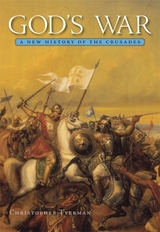 God’s War: A New History of the Crusades
Christopher Tyerman
Harvard University Press, 2006 God's War offers a sweeping new vision of one of history's most astounding events: the Crusades.
From 1096 to 1500, European Christians fought to recreate the Middle East, Muslim Spain, and the pagan Baltic in the image of their God. The Crusades are perhaps both the most familiar and most misunderstood phenomena of the medieval world, and here Christopher Tyerman seeks to recreate, from the ground up, the centuries of violence committed as an act of religious devotion.
The result is a stunning reinterpretation of the Crusades, revealed as both bloody political acts and a manifestation of a growing Christian communal identity. Tyerman uncovers a system of belief bound by aggression, paranoia, and wishful thinking, and a culture founded on war as an expression of worship, social discipline, and Christian charity.
This astonishing historical narrative is imbued with figures that have become legends--Saladin, Richard the Lionheart, Philip Augustus. But Tyerman also delves beyond these leaders to examine the thousands and thousands of Christian men--from Knights Templars to mercenaries to peasants--who, in the name of their Savior, abandoned their homes to conquer distant and alien lands, as well as the countless people who defended their soil and eventually turned these invaders back. With bold analysis, Tyerman explicates the contradictory mix of genuine piety, military ferocity, and plain greed that motivated generations of Crusaders. He also offers unique insight into the maturation of a militant Christianity that defined Europe's identity and that has forever influenced the cyclical antagonisms between the Christian and Muslim worlds.
Drawing on all of the most recent scholarship, and told with great verve and authority, God's War is the definitive account of a fascinating and horrifying story that continues to haunt our contemporary world.
The Gods We Worship Live Next Door
Realuyo, Bino A
University of Utah Press, 2006 The Agha Shahid Ali Prize in Poetry was inaugurated in 2003 to honor the late poet, a nationally recognized writer and a former professor at the University of Utah, and is sponsored by the University of Utah Press and the University of Utah Department of English.
The Gods We Worship Live Next Door is the 2005 prizewinning volume selected by this year's judge, Grace Schulman, distinguished professor of English at Baruch College, City University of New York.
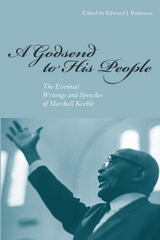 A Godsend to His People: The Essential Writings and Speeches of Marshall Keeble
Robinson, Edward J.
University of Tennessee Press, 2008 Marshall Keeble (1878-1968) stands as one of the Church of Christ's most influential and celebrated African American evangelists. His impact was felt throughout the South and well beyond as he helped establish over two hundred churches and baptized approximately forty thousand individuals during his nearly seventy years of ministry. His charismatic and dynamic speaking style earned him a devoted following.
Despite his impact on the religious culture of the South, there has been scant information available about this extraordinary individual-until now. With the his new book, A Godsend to His People, Edward J. Robinson brings to light over forty years of Keeble's writings.
This collection shows the human side of Keeble, revealing his concern for the souls of his faithful followers and the pragmatic way in which he ran his ministry. The sermons and other writings give great insight into the struggles of a prominent African American trying to navigate his way through the challenges of conducting his ministry in the segregated world of the Jim Crow South.
Robinson draws on a variety of sources in which Keeble was published, including the Gospel Advocate and the Christian Echo, as well as lectures Keeble gave to students at Abilene Christian College. Through these pages, the reader will learn more about this articulate, passionate, and intelligent man.
A Godsend to His People is the first scholarly treatment of this evangelist and will appeal to those interested in the history of the Church of Christ and religious studies.
Edward J. Robinson is assistant professor of history and biblical studies at Abilene Christian University. He is the editor of To Lift Up My Race: The Essential Writings of Samuel Robert Cassius and author of To Save My Race from Abuse: The Life of Samuel Robert Cassius.
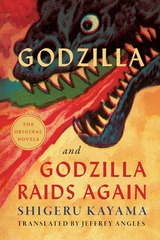 Godzilla and Godzilla Raids Again
Shigeru Kayama
University of Minnesota Press, 2023 The first English translations of the original novellas about the iconic kaijū Godzilla Godzilla emerged from the sea to devastate Tokyo in the now-classic 1954 film, produced by Tōhō Studios and directed by Ishirō Honda, creating a global sensation and launching one of the world’s most successful movie and media franchises. Awakened and transformed by nuclear weapons testing, Godzilla serves as a terrifying metaphor for humanity’s shortsighted destructiveness: this was the intent of Shigeru Kayama, the science fiction writer who drafted the 1954 original film and its first sequel and, in 1955, published these novellas. Although the Godzilla films have been analyzed in detail by cultural historians, film scholars, and generations of fans, Kayama’s two Godzilla novellas—both classics of Japanese young-adult science fiction—have never been available in English. This book finally provides English-speaking fans and critics the original texts with these first-ever English-language translations of Godzilla and Godzilla Raids Again. The novellas reveal valuable insights into Kayama’s vision for the Godzilla story, feature plots that differ from the films, and clearly display the author’s strong antinuclear, proenvironmental convictions. Kayama’s fiction depicts Godzilla as engaging in guerrilla-style warfare against humanity, which has allowed the destruction of the natural world through its irresponsible, immoral perversion of science. As human activity continues to cause mass extinctions and rapid climatic change, Godzilla provides a fable for the Anthropocene, powerfully reminding us that nature will fight back against humanity’s onslaught in unpredictable and devastating ways. Retail e-book files for this title are screen-reader friendly.
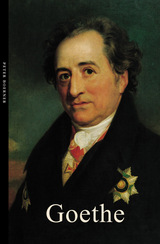 Goethe
Peter Boerner
Haus Publishing, 2013 Johann Wolfgang von Goethe (1749–1832) was one of the greatest thinkers of the modern age: a world-famous writer, scientist, and statesman, his influence was already far-reaching during his lifetime, and his literary and intellectual legacy continues to reverberate throughout contemporary culture. In this book, newly updated, Peter Boerner, a highly respected authority on Goethe, presents the definitive short biography of this extraordinary figure.
An exceptionally prolific and versatile writer, Goethe produced important works covering a range of genres. As a young man, he composed pastoral plays in the style of the waning Rococco, was an early proponent of the avant-garde Sturm und Drang movement, and became a literary superstar with The Sorrows of Young Werther, in which a young man’s unrequited love culminates in tragedy. In his classic play Faust, which evolved over a sixty-year period, he created one of the best-known versions of the legend and introduced the prototype of the romantic hero. A scientist active in various fields, including botany and the theory of colors, Goethe also pondered issues of evolution well before Darwin. In Boerner’s illustrated biography, Goethe’s impressive oeuvre comes to vibrant life.
A major contribution to the English-language literature on Goethe, this is a beautiful and accessible introduction to one of history’s foremost geniuses.
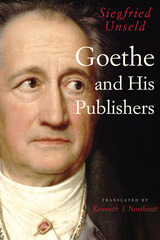 Goethe and His Publishers
Siegfried Unseld
University of Chicago Press, 1996 Goethe's ranging literary genius, nimble yet luminous, resists simple classification. Poet and natural philosopher, critic and raconteur, Goethe was the most commanding literary presence of his time.
Goethe and His Publishers organizes for the first time the myriad details of Goethe's career in print. Director of the German publishing company Suhrkamp Verlag, Siegfried Unseld brings a singular perspective to this biography, focusing our attention on an essential component of Goethe's literary endeavors: his relationship to his publishers. Carefully examining each work, Unseld covers the range of Goethe's oeuvre, from first anonymous publications to eventual monumental editions brought out by Johann Friedrich Cotta, the most renowned publisher of his day.
Unseld sifts through the rich correspondence between Goethe and his publishers, as well as letters to and from friends, colleagues, and contemporaries. Analyzing publishing contracts, draft contracts, and historical documents, Unseld reveals the tremendous energy Goethe exerted on behalf of his manuscripts. During negotiations he was sometimes circumspect and reserved, other times demanding and assertive. These exchanges not only shed new light on Goethe's complex character but also show how he changed the author's role in the publishing process. Thus, this work offers a penetrating study on the intricate and many-tiered relations between author and publisher, then and today.
Goethe and His Publishers celebrates Goethe's works, his life, and his times, from the viewpoint of a publisher today. Written by an individual who has devoted much of his life to the study of the poet whom he reveres, such a personal approach not only forms an excellent introduction to Goethe's work but helps restore Goethe to his rightful place in the world of letters.
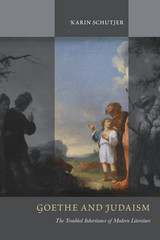 Goethe and Judaism: The Troubled Inheritance of Modern Literature
Karin Schutjer
Northwestern University Press, 2015 In Goethe and Judaism, Schutjer aims to provide a broad, though by no means exhaustive, literary study that is neither apologetic nor reductive, that attends to the complexity and irony of Goethe’s literary work but takes his representations of Judaism seriously as an integral part of his thought and writing. She is thus concerned not simply with accusing or acquitting Goethe of prejudice but rather with discerning the function and logic of his relationship to Judaism, as seen within his work. Her premise is that Goethe’s conception of modernity—his anxieties as well as his most affirmative vision concerning the trajectory of his age—are deeply entwined with his conception of Judaism. Schutjer argues that behind his very mixed representations of Jews and Judaism stand crucial tensions within his own thinking and a distinct anxiety of influence. Indeed, Goethe, she contends, paradoxically wrestles against precisely those impulses in Judaism for which he feels the greatest affinity, which most approach his own vision of modernity. The discourse of wandering in Goethe’s work serves as a key site where Judaism and modernity meet.
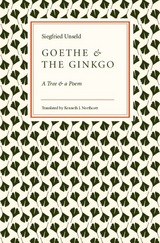 Goethe and the Ginkgo: A Tree and a Poem
Siegfried Unseld
University of Chicago Press, 2003 In 1815, Goethe gave symbolic expression to his intense relationship with Marianne Willemer, a recently married woman thirty-five years his junior. He gave her a leaf from the ginkgo tree, explaining that, like its deeply cleft yet still whole leaf, he was "single yet twofold." Although it is not known if their relationship was ever consummated, they did exchange love poetry, and Goethe published several of Marianne's poems in his West-East Divan without crediting her authorship.
In this beautiful little book, renowned Goethe scholar Siegfried Unseld considers what this episode means to our estimation of a writer many consider nearly godlike in stature. Unseld begins by exploring the botanical and medical lore of the ginkgo, including the use of its nut as an aphrodisiac and anti-aging serum. He then delves into Goethe's writings for the light they shed on his relationship with Marianne. Unseld reveals Goethe as a great yet human being, subject, as any other man, to the vagaries of passion.
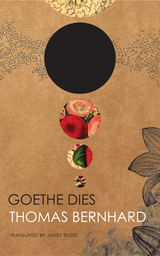 Goethe Dies
Thomas Bernhard
Seagull Books, 2019 This collection of four stories by the writer George Steiner called “one of the masters of European fiction” is, as longtime fans of Thomas Bernhard would expect, bleakly comic and inspiringly rancorous. The subject of his stories vary: in one, Goethe summons Wittgenstein to discuss the Tractatus Logico-Philosophicus; “Montaigne: A Story (in 22 Installments)” tells of a young man sealing himself in a tower to read; “Reunion,” meanwhile, satirizes that very impulse to escape; and the final story rounds out the collection by making Bernhard himself a victim, persecuted by his greatest enemy—his very homeland of Austria. Underpinning all these variously comic, tragic, and bitingly satirical excursions is Bernhard’s abiding interest in, and deep knowledge of, the philosophy of doubt.
Bernhard’s work can seem off-putting on first acquaintance, as he suffers no fools and offers no hand to assist the unwary reader. But those who make the effort to engage with Bernhard on his own uncompromising terms will discover a writer with powerful comic gifts, penetrating insight into the failings and delusions of modern life, and an unstinting desire to tell the whole, unvarnished, unwelcome truth. Start here, readers; the rewards are great.
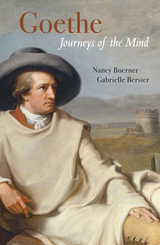 Goethe: Journeys of the Mind
Gabrielle Bersier, Nancy Boerner, and Peter Boerner
Haus Publishing, 2018 The German polymath Johann Wolfgang von Goethe is often seen as the quintessential eighteenth-century tourist, though with the exception of a trip to Italy he hardly left his homeland. Compared to several of his peripatetic contemporaries, he took few actual journeys, and the list of European cities in which he never set foot is quite long. He never saw Vienna, Paris, or London, for example, and he only once visited Berlin. During the last thirty years of his life he was essentially a homebound writer, but his intensive mental journeys countered this sedentary lifestyle, and the misconception of Goethe as a traveler springs from the uniquely international influence of his writing.
While Goethe’s Italian Journey is a classic piece of travel writing, it was the product of his only extended physical journey. The majority, rather, were of the mind, taken amid the pages of books by others. In his reading, Goethe was the prototypical eighteenth-century armchair traveler, developing knowledge of places both near and far through the words and eyewitness accounts of others. In Goethe: Journeys of the Mind, Nancy Boerner and Gabrielle Bersier explore what it was that made the great writer distinct from his peers and offer insight into the ways that Goethe was able to explore the cultures and environments of places he never saw with his own eyes.
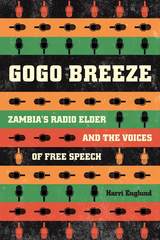 Gogo Breeze: Zambia’s Radio Elder and the Voices of Free Speech
Harri Englund
University of Chicago Press, 2018 When Breeze FM, a radio station in the provincial Zambian town of Chipata, hired an elderly retired schoolteacher in 2003, no one anticipated the skyrocketing success that would follow. A self-styled grandfather on air, Gogo Breeze seeks intimacy over the airwaves and dispenses advice on a wide variety of grievances and transgressions. Multiple voices are broadcast and juxtaposed through call-ins and dialogue, but free speech finds its ally in the radio elder who, by allowing people to be heard and supporting their claims, reminds authorities of their obligations toward the disaffected.
Harri Englund provides a masterfully detailed study of this popular radio personality that addresses broad questions of free speech in Zambia and beyond. By drawing on ethnographic insights into political communication, Englund presents multivocal morality as an alternative to dominant Euro-American perspectives, displacing the simplistic notion of voice as individual personal property—an idea common in both policy and activist rhetoric. Instead, Englund focuses on the creativity and polyphony of Zambian radio while raising important questions about hierarchy, elderhood, and ethics in the public sphere.
A lively, engaging portrait of an extraordinary personality, Gogo Breeze will interest Africanists, scholars of radio and mass media, and anyone interested in the history and future of free speech.
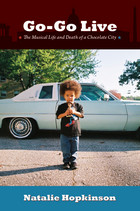 Go-Go Live: The Musical Life and Death of a Chocolate City
Natalie Hopkinson
Duke University Press, 2012 Go-go is the conga drum–inflected black popular music that emerged in Washington, D.C., during the 1970s. The guitarist Chuck Brown, the "Godfather of Go-Go," created the music by mixing sounds borrowed from church and the blues with the funk and flavor that he picked up playing for a local Latino band. Born in the inner city, amid the charred ruins of the 1968 race riots, go-go generated a distinct culture and an economy of independent, almost exclusively black-owned businesses that sold tickets to shows and recordings of live go-gos. At the peak of its popularity, in the 1980s, go-go could be heard around the capital every night of the week, on college campuses and in crumbling historic theaters, hole-in-the-wall nightclubs, backyards, and city parks. Go-Go Live is a social history of black Washington told through its go-go music and culture. Encompassing dance moves, nightclubs, and fashion, as well as the voices of artists, fans, business owners, and politicians, Natalie Hopkinson's Washington-based narrative reflects the broader history of race in urban America in the second half of the twentieth century and the early twenty-first. In the 1990s, the middle class that had left the city for the suburbs in the postwar years began to return. Gentrification drove up property values and pushed go-go into D.C.'s suburbs. The Chocolate City is in decline, but its heart, D.C.'s distinctive go-go musical culture, continues to beat. On any given night, there's live go-go in the D.C. metro area.
Gogol
V. V. Gippius
Duke University Press, 1989
Gogol: Plays and Selected Writings
Nikolai Gogol
Northwestern University Press, 1994 The theatrical genius of Gogol has gone largely unappreciated by English-speaking audiences because literal translations have left his plays virtually impossible to perform. These fresh translations restore the vitality of Gogol's language and humor, allowing his dramatic art to speak to readers, directors, actors, and theater-goers.
 Gogol's Afterlife: The Evolution of a Classic in Imperial and Soviet Russia
Caryl Emerson
Northwestern University Press, 2002 Gogol's claim to the title of national literary classic is incontestable. An exemplar of popular audiences no less than for the intelligentsia, Gogol was pressed into service under the tsarist and Soviet regimes for causes both aesthetic and political, official and unofficial. In Gogol's Afterlife, Stephen Moeller-Sally explores how he achieved this peculiar brand of cultural authority and later maintained it, despite dramatic shifts in the organization of Russian literature and society.
Part I charts the historical and cultural currents that shaped Gogol's reputation, devoting particular attention to the models of authorship Gogol himself devised in response to his changing audience and developing authorial mission. Part II takes a panoramic view of the social milieu in which Gogol's status evolved. Finally, Part III examines the place of the classics in Soviet culture, with a focus on Gogol's role in the cultural revolution and his peculiar relationship with state power under Stalinism.
Gogol's Artistry
Andrei Bely, translated by Christopher Colbath
Northwestern University Press, 2009 When one great author engages another, as Andrei Bely so brilliantly does in Gogol’s Artistry, the result is inevitably a telling portrait of both writers. So it is in Gogol’s Artistry. Translated into English for the first time, this idiosyncratic, exhaustive critical study is as interesting for what it tells us about Bely’s thought and method as it is for its insights into the oeuvre of his literary predecessor. Bely’s argument in this book is that Gogol’s earlier writing should be given more consideration than most critics have granted. Employing what might be called a scientific perspective, Bely considers how often certain colors appear; he diagrams sentences and discusses Gogol’s prose in terms of mathematical equations. The result, as strange and engaging as Bely’s best fiction, is also an innovative, thorough, and remarkably revealing work of criticism.
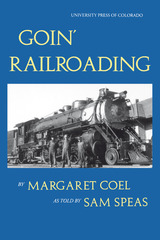 Goin' Railroading: Two Generations of Colorado Stories
Margaret Coel
University Press of Colorado, 1998 As America, carried along by the expanding rail system, moved westward in the nineteenth century, few occupations seemed more exciting or romantic than that of railroad engineer. And in the mountains and plains of the West, long hours, backbreaking labor, bitter temperatures, and faulty brakes were the crucible in which the best of the early railroaders were formed: only the most dedicated and skilled men passed the tests the narrow-gauge lines of Colorado meted out. Goin' Railroading is the story of two generations of such men, four members of the Speas family who, from the open cabs of narrow-gauge steam engines, watched Colorado grow. Sam Speas tells the story of his father, Sam Speas Sr., who left Missouri in 1883 to become an engineer in Colorado, and recounts his own experiences and those of his brothers and fellow railroaders on the Colorado and Southern Railway, from the golden era of the narrow-gauge lines in South Park to the final days of steam power on the Front Range and the coming of the diesel engine. His stories are a profound document of a vanished way of life, a testament to the courage and tenacity of the early citizens of Colorado, and a tribute to the rough-hewn, often gallant men who took the trains through incredible, almost unbelievable, hazards. Funny, tragic, bittersweet, and poignant, Goin' Railroading is a remarkable book that brings a portion of the history and people of an earlier Colorado to vibrant life.
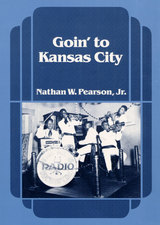 Goin' to Kansas City
Nathan W. Pearson, Jr.
University of Illinois Press, 1987 Kansas City jazz thrived on the anything-goes vibe of a town on the make and the talents of a generation of visionary artists. From titans like Charlie Parker and Count Basie to classic bands like the Blue Devils and the Clouds of Joy, the Paris of the Plains was home to a potent style of jazz music that bridged big bands and bebop in the 1920s and 1930s. Nathan W. Pearson Jr. threads eyewitness stories from musicians of the era into a narrative history of Kansas City's distinct jazz--and the corruption, organized crime, and vice that helped its players pay the bills. Throughout, Pearson reveals how the great bands of the era drew on many styles to create a distinctive music that was among the finest expressions of swing and laid the groundwork for modern jazz. A portrait of a community of artists and a jazz history that's both intimate and expansive, Goin' to Kansas City tells the story of how music remade a city into a mecca for performers and fans alike.
 Goin' Viral: Uncontrollable Black Performance
Gabriel A. Peoples
University of Illinois Press, 2025 Black virality refers to the spread of Black performance that becomes uncontrollable because of its rapid and ubiquitous circulation through popular media. Gabriel A. Peoples examines Black people and representations of Black people that have gone viral from the eighteenth century to today. Peoples’s analysis ranges from abolitionist and proslavery visual culture to Do the Right Thing to “Bed Intruder Song” and the cellphone video of Derrion Albert’s murder. After identifying these moments, he considers how performances go viral in Black ways. He also thinks through the ways Black virality circulates ideas that materially affect Black life. As he shows, an interacting person’s vulnerability to racialized gender and racialized sexuality knowledge inspires how they spread a performance. Non-iconic elements of viral moments reveal hard-to-find nuances of Black life while the artists and others represented in viral moments promote both collective and individual liberation by harnessing their visibility and audibility. Rigorous and expansive, Goin’ Viral uses Black virality as a new way to understand and frame Black performances.
The Goindval Pothis: The Earliest Extant Source of the Sikh Canon
Gurinder S. Mann
Harvard University Press, 1996 This volume explores the earliest available version of the Sikh canon. The book contains the first critical description and partial edition of the Goindval Pothis, a set of proto-scriptural manuscripts prepared in the 1570s. The manuscripts also contain a number of hymns by non-Sikh saints, some of them not found elsewhere.
Through a meticulous analysis of the contents of these rare manuscripts, Gurinder Singh Mann establishes their place and importance in the history of Sikh canon formation.
The book will be of great interest to scholars of comparative canon studies and of medieval Indian literature.
GOING
Kevin Oderman
West Virginia University Press, 2006 In Granada, a boy in a dress begs in the white alleys of the old town. A vulnerable runaway, he turns to an American painter who is living in the city for protection, Madeleine James. The boy also meets Madeleine's new friend, poet Cy Jacobs. Although the two adults mean to help the boy, they unwittingly expose him to more peril. Soon, all the characters in the story have been scraped on the touchstone of hard realities and made to show their mettle, be it base or gold. This novel, at times somber and at times flaring with intensity, calls up indelibly the difficulties of making a good life—or a good death—in a world in which we are all, in one way or another, going.
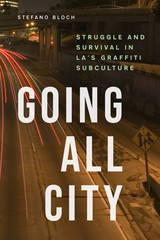 Going All City: Struggle and Survival in LA's Graffiti Subculture
Stefano Bloch
University of Chicago Press, 2019 “We could have been called a lot of things: brazen vandals, scared kids, threats to social order, self-obsessed egomaniacs, marginalized youth, outsider artists, trend setters, and thrill seekers. But, to me, we were just regular kids growing up hard in America and making the city our own. Being ‘writers’ gave us something to live for and ‘going all city’ gave us something to strive for; and for some of my friends it was something to die for.”
In the age of commissioned wall murals and trendy street art, it’s easy to forget graffiti’s complicated and often violent past in the United States. Though graffiti has become one of the most influential art forms of the twenty-first century, cities across the United States waged a war against it from the late 1970s to the early 2000s, complete with brutal police task forces. Who were the vilified taggers they targeted? Teenagers, usually, from low-income neighborhoods with little to their names except a few spray cans and a desperate need to be seen—to mark their presence on city walls and buildings even as their cities turned a blind eye to them.
Going All City is the mesmerizing and painful story of these young graffiti writers, told by one of their own. Prolific LA writer Stefano Bloch came of age in the late 1990s amid constant violence, poverty, and vulnerability. He recounts vicious interactions with police; debating whether to take friends with gunshot wounds to the hospital; coping with his mother’s heroin addiction; instability and homelessness; and his dread that his stepfather would get out of jail and tip his unstable life into full-blown chaos. But he also recalls moments of peace and exhilaration: marking a fresh tag; the thrill of running with his crew at night; exploring the secret landscape of LA; the dream and success of going all city.
Bloch holds nothing back in this fierce, poignant memoir. Going All City is an unflinching portrait of a deeply maligned subculture and an unforgettable account of what writing on city walls means to the most vulnerable people living within them.
Going Away to Think: Engagement, Retreat, and Ecocritical Responsibility
Scott Slovic
University of Nevada Press, 2008 Scott Slovic has spent his life as a teacher, writer, environmental activist, and leader in the field of ecocritical literary studies. In Going Away to Think, he reflects on the twin motivations of his life—the commitment to do some good in the world and the impulse to enjoy life and participate fully in its most intense moments—and he examines the tension created by his efforts to balance these two poles of his responsibility. These essays reveal the complex inner life of one of this generation’s most important environmental critics and literary activists. They range from profound discussions of the role and responsibilities of scholarship to deeply personal ruminations on the impact of family crises and the influence of his wide-ranging travels.
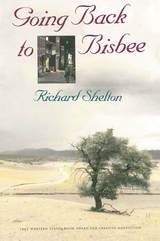 Going Back to Bisbee
Richard Shelton
University of Arizona Press, 1992 One of America's most distinguished poets now shares his fascination with a distinctive corner of our country. Richard Shelton first came to southeastern Arizona in the 1950s as a soldier stationed at Fort Huachuca. He soon fell in love with the region and upon his discharge found a job as a schoolteacher in nearby Bisbee. Now a university professor and respected poet living in Tucson, still in love with the Southwestern deserts, Shelton sets off for Bisbee on a not-uncommon day trip. Along the way, he reflects on the history of the area, on the beauty of the landscape, and on his own life.
Couched within the narrative of his journey are passages revealing Shelton's deep familiarity with the region's natural and human history. Whether conveying the mystique of tarantulas or describing the mountain-studded topography, he brings a poet's eye to this seemingly desolate country. His observations on human habitation touch on Tombstone, "the town too tough to die," on ghost towns that perhaps weren't as tough, and on Bisbee itself, a once prosperous mining town now an outpost for the arts and a destination for tourists. What he finds there is both a broad view of his past and a glimpse of that city's possible future.
Going Back to Bisbee explores a part of America with which many readers may not be familiar. A rich store of information embedded in splendid prose, it shows that there are more than miles on the road to Bisbee.
Going Coed: Women's Experiences in Formerly Men's Colleges and Universities, 1950-2000
Leslie Miller-Bernal
Vanderbilt University Press, 2004 More than a quarter-century ago, the last great wave of coeducation in the United States resulted in the admission of women to almost all of the remaining men's colleges and universities. In thirteen original essays, Going Coed investigates the reasons behind this important phenomenon, describes how institutions have dealt with the changes, and captures the experiences of women who attended these schools.
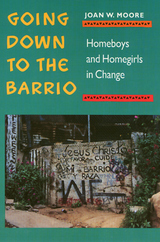 Going Down To The Barrio: Homeboys and Homegirls in Change
Joan W. Moore
Temple University Press, 1991 In this illuminating look at two Chicano gangs in East Los Angeles, Joan W. Moore examines the changes and continuities among three generations of barrio gangs. As a sequel to the author's award-winning study, Homeboys (Temple, 1979), this book returns to the same neighborhoods to chart the development of gang behavior, especially in terms of violence and drug use, and to compare experiences of male and female gang members. In a remarkable research collaborative effort, Moore and gang members worked together to develop an understanding of both male and female gangs and an internal vision of gang members' lives. By using excerpts from individual interviews, the author depicts more about the gangs than simply their life together as a unit; she gives them a voice. Gang members discuss their personal reaction to violence, drug using and selling, family relations and intra-gang dating; they share intimacies that reveal varying levels of loyalty to and dependency on their affiliations, which often become a family substitute. After maintaining neighborhood ties for 17 years, Moore's research group has established a relationship with these communities that gives her a rare perspective. This is a fascinating and informative book for anyone interested in sociology, criminology, youth behavior and deviance, and ethnic studies.
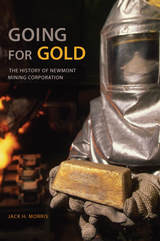 Going for Gold: The History of Newmont Mining Corporation
Jack H. Morris
University of Alabama Press, 2016 Details how Newmont Mining revolutionized the gold mining industry and remains the second largest gold miner in the world
Jack H. Morris asserts that Newmont is the link between early gold mining and today’s technology-driven industry. We learn how the company’s founder and several early leaders grew up in gold camps and how, in 1917, the company helped finance South Africa’s largest gold company and later owned famous gold mines in California and Colorado. In the 1960s the company developed the process to capture “invisible gold” from small distributions of the metal in large quantities of rock, thereby opening up the rich gold field at Carlin, Nevada.
Modern gold mining has all the excitement and historic significance of the metal’s colorful past. Instead of panning for ready nuggets, today’s corporate miners must face heavy odds by extracting value from ores containing as little as one-hundredth of an ounce per ton. In often-remote locations, where the capital cost of a new mine can top $2 billion, 250-ton trucks crawl from half mile deep pits and ascend, beetle-like, loaded with ore for extraction of the minute quantities of gold locked inside.
Morris had unique access to company records and the cooperation of more than 80 executives and employees of the firm, but the company exercised no control over content. The author tells a story of discovery and scientific breakthrough; strong-willed, flamboyant leaders like founder Boyce Thompson; corporate raiders such as T. Boone Pickens and Jimmy Goldsmith; shakedowns by the Indonesian government and monumental battles with the French over the richest mine in Peru; and learning to operate in the present environmental regulatory climate. This is a fascinating story of the metal that has ignited passions for centuries and now sells for over $1,000 an ounce.
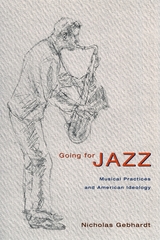 Going for Jazz: Musical Practices and American Ideology
Nicholas Gebhardt
University of Chicago Press, 2001 Jazz is one of the most influential American art forms of our times. It shapes our ideas about musical virtuosity, human action and new forms of social expression. In Going for Jazz, Nicholas Gebhardt shows how the study of jazz can offer profound insights into American historical consciousness. Focusing on the lives of three major saxophonists—Sidney Bechet, Charlie Parker, and Ornette Coleman—Gebhardt demonstrates how changing forms of state power and ideology framed and directed their work.
Weaving together a range of seemingly disparate topics, from Frederick Jackson Turner's frontier thesis to the invention of bebop, from Jean Baudrillard's Seduction to the Cold War atomic regime, Gebhardt addresses the meaning and value of jazz in the political economy of American society. In Going for Jazz, jazz musicians assume dynamic and dramatic social positions that demand a more conspicuous place for music in our understanding of the social world.
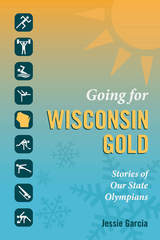 Going for Wisconsin Gold: Stories of Our State Olympians
Jessie Garcia
Wisconsin Historical Society Press, 2016 U-S-A , U-S-A is a familiar refrain heard in every Olympics, but truly it could be Wis-con-sin! Since pioneering hurdler Alvin Kraenzlein got his start here in the 1890s, the Badger State has nurtured, trained, or schooled more than 400 Olympic athletes in a vast array of sports. Wisconsin’s varied landscape and climate accommodate serious athletes whether they compete on ice, on snow, in the water, or on terra firma. We tend to bring a Midwestern work ethic to our endeavors, and our Olympians have often been hailed in the press and in public as being among the most humble and down-to-earth people around. Our state boasts a thriving youth sports culture where many homegrown athletes get their start; others are drawn here by our world-class universities, athletic facilities, and coaching talent. No matter how an athlete comes to Wisconsin, the state becomes part of his or her Olympic story. In Going for Wisconsin Gold, author Jessie Garcia provides insights into the lives of athletes who grew up or spent time in Wisconsin on their journey to the Olympic Games. She shares some of our competitors most captivating tales—from those that have become legend, like Dan Jansen’s heartbreaking falls and subsequent magical gold, to unlikely brushes with glory (do you know which Green Bay Packer was almost an Olympic high jumper?). Featuring the athletes’ personal stories, many of them told here in detail for the first time, plus pictures from their private collections, Going for Wisconsin Gold provides a new and deeper understanding of the sacrifices, joy, pain, heartbreak, and complete dedication it takes to reach the world’s grandest sporting competition.
 Going for Zero: Decarbonizing the Built Environment on the Path to Our Urban Future
Carl Elefante
Island Press, 2025 Climate change is no longer an abstract threat. Day after day, an already disrupted climate is impacting the lives of millions, and the time available to curtail climate change is alarmingly limited. Going for zero greenhouse gas emissions requires retooling everything about industry, agriculture, transportation, and every city and town that people inhabit. The work of architects, engineers, landscape architects, urban designers and the countless others who shape the built environment has never been more relevant. Decarbonizing how buildings are designed, constructed, and operated is a sea change that is already altering professional principles and practices. In Going for Zero: Decarbonizing the Built Environment on the Path to Our Urban Future, seasoned architect and former AIA president Carl Elefante addresses how buildings and cities can and must help resolve the looming climate emergency. Elefante offers a decidedly alternative viewpoint, one informed by his architecture career rescuing buildings from senseless demolition and learning from the practices and wisdom embedded in built heritage. For architects and the countless others who work together creating human habitation, the twenty-first century imperatives demand a profound mode shift, from an expansion mindset to one of reintegration and healing. Elefante argues that curtailing the climate emergency, resolving intransigent social and economic injustice, and launching the urban era onto a truly beneficial and sufficient path presents challenges that must be addressed through built form. The challenge of our built environment and the possible solutions are covered in four sections: climate imperative, justice imperative, urban imperative, and beyond modernism. Elefante explains that revitalizing communities by optimizing existing resources makes social, economic, and environmental sense and directs resources where they are most needed. Going for Zero is an urgent call to action and path forward. Elefante’s message is ultimately one of hope—but we must act now.
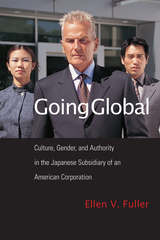 Going Global: Culture, Gender, and Authority in the Japanese Subsidiary of an American Corporation
Ellen V. Fuller
Temple University Press, 2009 In this intriguing ethnography, Ellen Fuller investigates how issues of gender and identity as they relate to authority are addressed in a globalizing corporate culture. Going Global goes behind the office politics, turf wars and day-to-day workings of a transnational American company in Japan in the late 1990s as employees try to establish a comfortable place within the company. Fuller looks at how relationships among Asians and between Asians and Americans are tested as individuals are promoted to positions of power and authority. Is there pressure for the Japanese to be more “American” to get ahead in business? Do female employees have to subscribe to certain stereotypes to be promoted or respected? How these American and Japanese workers assess one another raises important questions about international business management and human resources.
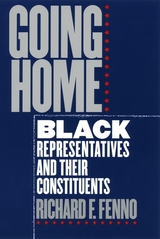 Going Home: Black Representatives and Their Constituents
Richard F. Fenno
University of Chicago Press, 2003 Thirty years ago there were nine African Americans in the U.S. House of Representatives. Today there are four times that number. In Going Home, the dean of congressional studies, Richard F. Fenno, explores what representation has meant—and means today—to black voters and to the politicians they have elected to office.
Fenno follows the careers of four black representatives—Louis Stokes, Barbara Jordan, Chaka Fattah, and Stephanie Tubbs Jones—from their home districts to the halls of the Capitol. He finds that while these politicians had different visions of how they should represent their districts (in part based on their individual preferences, and in part based on the history of black politics in America), they shared crucial organizational and symbolic connections to their constituents. These connections, which draw on a sense of "linked fates," are ones that only black representatives can provide to black constituents.
His detailed portraits and incisive analyses will be important for anyone interested in the workings of Congress or in black politics.
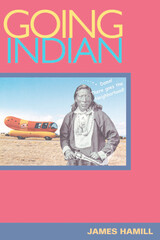 Going Indian
James Hamill
University of Illinois Press, 2006 Going Indian explores Indian (as opposed to tribal) ethnic identity among Native American people in Oklahoma through their telling, in their own words, of how they became Indian and what being Indian means to them today. Divided into four parts, the book features Oklahoma Indians' constructions of their histories and their view of today's native populations, their experiences with forced removals and Indian educational institutions, the meaning they place on blood quantum and ancestry in relation to Indian identity, and their practice of religion in Native churches. James Hamill makes extensive use of the Indian Pioneer and Doris Duke material at the University of Oklahoma's Western History Library to assemble these narratives, using interviews collected between 1937-38 and 1967-70, as well as interviews he conducted from 2000 to 2001. While most books on Native American people in Oklahoma focus on tribes and their histories, Hamill instead explores the use of Indian symbolism across a wide field of experience to reveal what they thought and what they think about these various issues, and how these have influenced and affected their self-perceptions over time.
Going Indochinese
Christopher E. Goscha
National University of Singapore Press, 2012 Why, Benedict Anderson once asked, did Javanese become Indonesian in 1945 whereas the Vietnamese balked at becoming Indochinese? In this classic study, Goscha shows that Vietnamese of all political colours came remarkably close to building a modern national identity based on the colonial model of Indochina while Lao and Cambodian nationalists rejected this precisely because it represented a Vietnamese entity. First published in 1995, the revised edition of this remarkable study is augmented with new material by the author and a foreword by Eric Jennings.
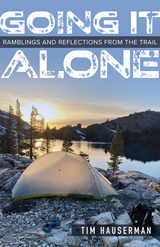 Going It Alone: Ramblings and Reflections from the Trail
Tim Hauserman
University of Nevada Press, 2022 Join author Tim Hauserman on his solo journeys through the Sierra Nevada and the forests of Minnesota. Hauserman shares his experiences hiking by himself through some of the most spectacular landscapes in the United States. Along the way, he confronts his conflicting desires to be alone in the wilderness, then facing profound loneliness and fear once he is there. In a single instant, he goes from enjoying a shimmering mountain lake to being petrified by the sound of a bear crunching through sticks right next to his tent.
Hauserman hikes the John Muir Trail through rainstorms and challenging climbs, explores the Tahoe Rim Trail on a fourteen-day excursion, and travels to Minnesota to conquer the Superior Hiking Trail, where he is inundated with bugs, faces drought, and is eerily alone on the trail with not a single other hiker in sight for days. Going It Alone combines his self-deprecating humor, what he identifies as “Stupid Tim Tricks,” and delightful descriptions of the natural surroundings.
Some might describe the wilderness as the middle of nowhere or as nothingness, but for Hauserman, it is everything. While his love for nature remains undaunted through these experiences, he also discovers that he has overly high expectations for his capabilities and that he cannot just wish his loneliness away. He eventually discovers that his long walks in the woods are less about hiking and more about learning how he wants to live his life.
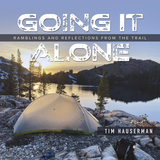 Going It Alone: Ramblings and Reflections from the Trail
Tim Hauserman
University of Nevada Press, 2022 Join author Tim Hauserman on his solo journeys through the Sierra Nevada and the forests of Minnesota. Hauserman shares his experiences hiking by himself through some of the most spectacular landscapes in the United States. Along the way, he confronts his conflicting desires to be alone in the wilderness, then facing profound loneliness and fear once he is there. In a single instant, he goes from enjoying a shimmering mountain lake to being petrified by the sound of a bear crunching through sticks right next to his tent.
Hauserman hikes the John Muir Trail through rainstorms and challenging climbs, explores the Tahoe Rim Trail on a fourteen-day excursion, and travels to Minnesota to conquer the Superior Hiking Trail, where he is inundated with bugs, faces drought, and is eerily alone on the trail with not a single other hiker in sight for days. Going It Alone combines his self-deprecating humor, what he identifies as “Stupid Tim Tricks,” and delightful descriptions of the natural surroundings.
Some might describe the wilderness as the middle of nowhere or as nothingness, but for Hauserman, it is everything. While his love for nature remains undaunted through these experiences, he also discovers that he has overly high expectations for his capabilities and that he cannot just wish his loneliness away. He eventually discovers that his long walks in the woods are less about hiking and more about learning how he wants to live his life.
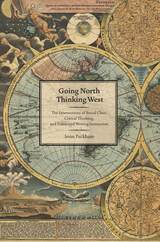 Going North Thinking West: The Intersections of Social Class, Critical Thinking, and Politicized Writing Instruction
Irvin Peckham
Utah State University Press, 2010 A long-time writing program administrator and well-respected iconoclast, Irvin Peckham is strongly identified with progressive ideologies in education. However, in Going North Thinking West, Peckham mounts a serious critique of what is called critical pedagogy—primarily a project of the academic left—in spite of his own sympathies there. College composition is fundamentally a middle-class enterprise, and is conducted by middle-class professionals, while student demographics show increasing presence of the working class. In spite of best intentions to ameliorate inequitable social class relationships, says Peckham, critical pedagogies can actually contribute to reproducing those relationships in traditional forms—not only perpetuating social inequities, but pushing working class students toward self-alienation, as well. Peckham argues for more clarity on the history of critical thinking, social class structures and teacher identity (especially as these are theorized by Pierre Bourdieu), while he undertakes a critical inquiry of the teaching practices with which even he identifies. Going North Thinking West focuses especially on writing teachers who claim a necessary linkage between critical thinking and writing skills; these would include both teachers who promote the fairly a-political position that argumentation is the obvious and necessary form of academic discourse, and more controversial teachers who advocate turning a classroom into a productive site of social transformation. Ultimately, Peckham argues for a rereading of Freire (an icon of transformational pedagogy), and for a collaborative investigation of students’ worlds as the first step in a successful writing pedagogy. It is an argument for a pedagogy based on service to students rather than on transforming them.
Going Out: The Rise and Fall of Public Amusements
David Nasaw
Harvard University Press, 1999 David Nasaw has written a sparkling social history of twentieth-century show business and of the new American public that assembled in the city's pleasure palaces, parks, theaters, nickelodeons, world's fair midways, and dance halls.
The new amusement centers welcomed women, men, and children, native-born and immigrant, rich, poor and middling. Only African Americans were excluded or segregated in the audience, though they were overrepresented in parodic form on stage. This stigmatization of the African American, Nasaw argues, was the glue that cemented an otherwise disparate audience, muting social distinctions among "whites," and creating a common national culture.
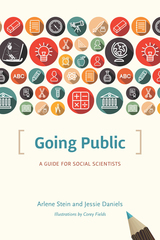 Going Public: A Guide for Social Scientists
Arlene Stein and Jessie Daniels
University of Chicago Press, 2017 At a time when policy discussions are dominated by “I feel” instead of “I know,” it is more important than ever for social scientists to make themselves heard. When those who possess in-depth training and expertise are excluded from public debates about pressing social issues—such as climate change, the prison system, or healthcare—vested interests can sway public opinion in uninformed ways. Yet few graduate students, researchers, or faculty know how to do this kind of work—or feel empowered to do it.
While there has been an increasing call for social scientists to engage more broadly with the public, concrete advice for starting the conversation has been in short supply. Arlene Stein and Jessie Daniels seek to change this with Going Public, the first guide that truly explains how to be a public scholar. They offer guidance on writing beyond the academy, including how to get started with op-eds and articles and later how to write books that appeal to general audiences. They then turn to the digital realm with strategies for successfully building an online presence, cultivating an audience, and navigating the unique challenges of digital world. They also address some of the challenges facing those who go public, including the pervasive view that anything less than scholarly writing isn’t serious and the stigma that one’s work might be dubbed “journalistic.”
Going Public shows that by connecting with experts, policymakers, journalists, and laypeople, social scientists can actually make their own work stronger. And by learning to effectively add their voices to the conversation, researchers can help make sure that their knowledge is truly heard above the digital din.
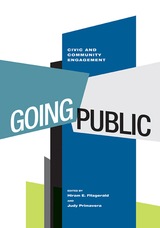 Going Public: Civic and Community Engagement
Hiram E. Fitzgerald
Michigan State University Press, 2013 The terms “civic engagement” and “community engagement” have various definitions, but they are united by the sense that individuals who are civically engaged not only are concerned about the quality of life in their communities but also take action to improve conditions for the common good. In the United States, to be civically engaged means to actively participate in a civil democratic society. Going Public examines programs related to civic engagement and the ways in which faculty and students participate in communities in order to improve them. Engagement scholarship is a scholarship of action, a scholarship of practice that takes place both in and with the community. Within the framework of this new scholarship, the mission of the academy does not begin and end with intellectual discovery and fact-finding. Rather, the academy joins forces with the community, and together they use their knowledge and resources to address pressing social, civic, economic, and moral problems. Each chapter in this book tells a unique story of community engagement and the scholarship of practice in a diverse range of settings, documenting successes and failures, the unintended consequences, and the questions yet to be answered.
Going Public: Creating Visibility in the Field of Art
Edited by Sigrid Adorf, Sønke Gau, and Basil Rogger
Diaphanes, 2022 A call-to-arms for creatives to make their work widely accessible as a political and communal act.
There are many ways to go public in art. There’s exhibiting, publishing, or reviewing. It is only through making artworks public that they become accessible to audiences—a performative act that also involves a marketplace of money and attention. Yet reception is an essential aspect of production.
This book looks at why such reception should not be limited to the art public, positing that going public as an aesthetic and political strategy necessitates an emancipatory practice of public communication that allows, and aspires to, uncertainties, questions, and complexities.
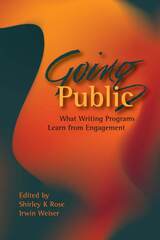 Going Public: What Writing Programs Learn from Engagement
Shirley Rose
Utah State University Press, 2010 As institutions begin to include more explicit engagement with citizen and stakeholder communities as an element of their mission, writing program administrators find themselves with an opportunity to articulate the ways in which writing program goals and purposes significantly contribute to achieving these new institutional goals. Writing programs are typically situated at points where students make the transition from community to college (e.g., first-year composition) or from college to community (e.g. professional writing), and are already dedicated to developing literacies that are critically needed in communities.
In Going Public, Rose and Weiser locate their discussion in the context of three current conversations in higher education: 1) the engagement movement, particularly as this movement serves to address and respond to calls for greater accountability to broader publics; 2) recent interest in public discourse/civic rhetoric among scholars of rhetorical history and contemporary rhetorical theory; 3) the service learning movement in higher education, especially the ways in which college and university writing programs have contributed to this movement.
While there have been a number of publications describing service-learning and community leadership programs, most of these focus on curricular elements and address administrative issues, if at all, primarily from a curricular perspective. The emphasis of the current book is on the ways that engagement-focused programs change conceptions of WPA identity. Going Public, then, is not only a significant contribution to the scholarly literature, but also supplies an important new resource for WPA preparation courses in rhetoric and composition PhD programs.
Going Rackless: Chicago’s Amateur Pool Players and the Quest for Glory in the Biggest Tournament in the World
Dylan Taylor-Lehman
University of Illinois Press, 2025 Playing every angle for a shot at the big time Chicagoans venture to area pool halls to perfect their games and navigate league play for a shot at the APA World Pool Championships in Las Vegas. Dylan Taylor-Lehman joins a lively cast of characters under the lights and inside a subculture as old as Chicago itself. Whether running the table or waiting their turn, everyone has a story to tell and opinions to share on position play, billiards’s unwritten code, and life itself. Taylor-Lehman follows four promising teams on a mission to reach Vegas before unwinding an electric account of what it takes to win the world’s premier amateur tournament—and what you take away when the balls aren’t sunk. Entertaining and immersive, Going Rackless puts readers tableside to watch a game everyone has played but few truly understand.
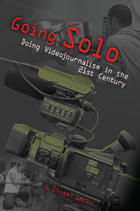 Going Solo: Doing Videojournalism in the 21st Century
G. Stuart Smith
University of Missouri Press, 2011 The traditional model of video news reporting has always had two separate roles: reporting and videography. For years, however, small-market news outlets have relied on “one-man bands”—individual reporters who shoot and edit their own video—for stories and footage. Lately, as the journalism landscape has evolved, this controversial practice has grown more and more popular. With the use of video constantly expanding, many large-market TV stations, networks, and newspaper Web sites are relying on one person to carry out a job formerly executed by two. News outlets now call these contributors VJs, digital journalists, backpack journalists, or mobile journalists. But no matter what they are called, there’s no denying the growing significance of solo videojournalists to the media landscape. Going Solo: Doing Videojournalism in the 21st Century details the controversy, history, and rise of this news genre, but its main objective is to show aspiring videojournalists how to learn the craft. While other textbooks depict the conventional reporter-and-videographer model, Going Solo innovates by teaching readers how to successfully juggle the skills traditionally required of two different people. Award-winning journalist G. Stuart Smith begins by describing how and why the media’s use of solo videojournalists is growing, then delves into the controversy over whether one person can cover a story as well as two. He illuminates how, together, the downsizing of the media, downturn in the economy, and growth of video on the Web have led to the rise of the solo videojournalist model. Going Solo profiles TV stations and newspaper Web operations across the country that are using the model and offers helpful advice from VJs in the field. The book presents useful guidelines on how to multitask as a reporter-videographer: conducting interviews, shooting cover video, and writing and editing a good video story. Readers will also learn how to produce non-narrated stories and market themselves in a competitive field. Smith, who started his career as a “one-man band,” insightfully covers an area of journalism that, despite its growing market demand, has received little academic attention. Going Solo: Doing Videojournalism in the 21st Century is useful for students learning the basics and those already in the field who need to upgrade their skills. By presenting industry know-how and valuable tips, this unique guidebook can help any enterprising videojournalist create a niche for him- or herself in the increasingly fragmented news media market.
 Going Stealth: Transgender Politics and U.S. Surveillance Practices
Toby Beauchamp
Duke University Press, 2018 In Going Stealth Toby Beauchamp demonstrates how the enforcement of gender conformity is linked to state surveillance practices that identify threats based on racial, gender, national, and ableist categories of difference. Positioning surveillance as central to our understanding of transgender politics, Beauchamp examines a range of issues, from bathroom bills and TSA screening practices to Chelsea Manning's trial, to show how security practices extend into the everyday aspects of our gendered lives. He brings the fields of disability, science and technology, and surveillance studies into conversation with transgender studies to show how the scrutinizing of gender nonconformity is motivated less by explicit transgender identities than by the perceived threat that gender nonconformity poses to the U.S. racial and security state. Beauchamp uses instances of gender surveillance to demonstrate how disciplinary power attempts to produce conformist citizens and regulate difference through discourses of security. At the same time, he contends that greater visibility and recognition for gender nonconformity, while sometimes beneficial, might actually enable the surveillance state to more effectively track, measure, and control trans bodies and identities.
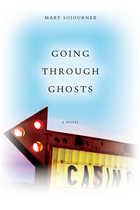 Going Through Ghosts
Mary Sojourner
University of Nevada Press, 2010 Maggie Foltz is a fifty-five-year-old cocktail waitress in a rundown casino in the southern Nevada Mojave Desert. She spends her days serving drinks to lonely old folks playing the slot machines and her nights trying to escape her bitter past. When she befriends Sarah, a young Native American woman who is hired to cook in the casino coffee shop, her life begins to change. Maggie finds herself falling in love with a memory-haunted Vietnam veteran and warily begins to hope that together they can find peace. Then Sarah is mysteriously murdered, and Sarah’s ghost enlists Maggie to accompany her on a quest for the wisdom that she needs in order to move into the next world. The story ranges from smoky casinos into the harsh magnificence of the desert and the reservation where Sarah’s people are trying to preserve their culture and find their own place in a modern world that seems to want them to be either shamans or losers. Sojourner’s characters are compellingly real, and the Mojave setting has rarely been depicted as sensitively or truthfully. This is a memorable story of love, redemption, and solace, told by one of the West’s finest writers.
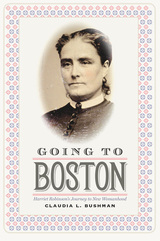 Going to Boston: Harriet Robinson's Journey to New Womanhood
Claudia L. Bushman
University Press of New England, 2017 As a poet, author, and keen observer of life in 1870s Boston, Harriet Robinson played an essential—if occasionally underappreciated—role in the women’s suffrage movement during Boston’s golden age. Robinson flourished after leaving behind her humble roots in the mill town of Lowell, Massachusetts, deciding to spend a year in Boston discovering the culture and politics of America’s Athens. An honest, bright, and perceptive witness, she meets with Emerson and Julia Ward Howe, with whom she organizes the New England Women’s Club, and drinks deeply of the city’s artistic and cultural offerings. Noted historian Claudia L. Bushman proves a wonderful guide as she weaves together Robinson’s journal entries, her own learned commentary, and selections from other nineteenth-century writers to reveal the impact of the industrial revolution and the rise of women’s suffrage as seen through the experience of one articulate, engaged participant. Going to Boston will appeal to readers interested in both the history of Boston and the history of American progress itself.
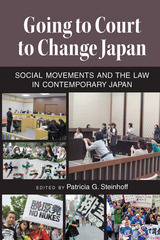 Going to Court to Change Japan: Social Movements and the Law in Contemporary Japan
Patricia G. Steinhoff, Editor
University of Michigan Press, 2014 Going to Court to Change Japan takes us inside movements dealing with causes as disparate as death by overwork, the rights of the deaf, access to prisoners on death row, consumer product safety, workers whose companies go bankrupt, and persons convicted of crimes they did not commit. Each of the six fascinating case studies stands on its own as a detailed account of how a social movement has persisted against heavy odds to pursue a cause through the use of the courts. The studies pay particular attention to the relationship between the social movement and the lawyers who handle their cases, usually pro bono or for minimal fees. Through these case studies we learn much about how the law operates in Japan as well as how social movements mobilize and innovate to pursue their goals using legal channels. The book also provides a general introduction to the Japanese legal system and a look at how recent legal reforms are working. Going to Court to Change Japan will interest social scientists, lawyers, and anyone interested in the inner workings of contemporary Japan. It is suitable for use in a wide range of undergraduate and graduate courses on Japan in social sciences and law, and can also provide a comparative perspective to general courses in these fields. Contributors include John H. Davis Jr., Daniel H. Foote, Patricia L. Maclachlan, Karen Nakamura, Scott North, Patricia G. Steinhoff, and Christena Turner.
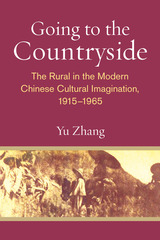 Going to the Countryside: The Rural in the Modern Chinese Cultural Imagination, 1915-1965
Yu Zhang
University of Michigan Press, 2020 Since the beginning of the twentieth century, modern Chinese intellectuals, reformers, revolutionaries, leftist journalists, and idealistic youth had often crossed the increasing gap between the city and the countryside, which made the act of “going to the countryside” a distinctively modern experience and a continuous practice in China. Such a spatial crossing eventually culminated in the socialist state program of “down to the villages” movements during the 1960s and 1970s. What, then, was the special significance of “going to the countryside” before that era? Going to the Countryside deals with the cultural representations and practices of this practice between 1915 and 1965, focusing on individual homecoming, rural reconstruction, revolutionary journeys to Yan’an, the revolutionary “going down to the people” as well as going to the frontiers and rural hometowns for socialist construction. As part of the larger discourses of enlightenment, revolution, and socialist industrialization, “going to the countryside” entailed new ways of looking at the world and ordinary people, brought about new experiences of space and time, initiated new means of human communication and interaction, generated new forms of cultural production, revealed a fundamental epistemic shift in modern China, and ultimately created a new aesthetic, social, and political landscape. As a critical response to the “urban turn” in the past few decades, this book brings the rural back to the central concern of Chinese cultural studies and aims to bridge the city and the countryside as two types of important geographical entities, which have often remained as disparate scholarly subjects of inquiry in the current state of China studies. Chinese modernity has been characterized by a dual process that created problems from the vast gap between the city and the countryside but simultaneously initiated constant efforts to cope with the gap personally, collectively, and institutionally. The process of “crossing” two distinct geographical spaces was often presented as continuous explorations of various ways of establishing the connectivity, interaction, and relationship of these two imagined geographical entities. Going to the Countryside argues that this new body of cultural productions did not merely turn the rural into a constantly changing representational space; most importantly, the rural has been constructed as a distinct modern experiential and aesthetic realm characterized by revolutionary changes in human conceptions and sentiments.
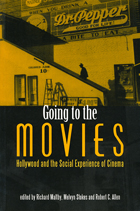 Going to the Movies: Hollywood and the Social Experience of the Cinema
Edited by Richard Maltby, Melvyn Stokes, and Robert C. Allen
University of Exeter Press, 2007
A nickelodeon screening a Charlie Chaplin silent classic, the downtown arthouse cinemas that made Antonioni and Cassavetes household names, the modern suburban megaplex and its sold-out Friday night blockbuster: how American and global audiences have viewed movies is as rich a part of cinematic history as what we’ve seen on the silver screen. Going to the Movies considers the implications of this social and cultural history through an analysis of the diverse historical and geographical circumstances in which audiences have viewed American cinema. Featuring a distinguished group of film scholars—including Richard Abel, Annette Kuhn, Jane Gaines, and Thomas Doherty—whose interests range broadly across time and place, this volume analyzes the role of movie theatres in local communities, the links between film and other entertainment media, non-theatrical exhibition, and trends arising from the globalization of audiences. Emphasizing moviegoing outside of the northeastern United States, as well as the complexities of race in relation to cinema attendance, Going to the Movies appeals to the global citizen of cinema—locating the moviegoing experience in its appeal to the heart and mind of the audience, whether it’s located in a South African shanty town or the screening room of a Hollywood production lot.
Going to the People: Chinese Intellectuals and Folk Literature, 1918–1937
Chang-tai Hung
Harvard University Press, 1985 It is generally believed that Mao Zedong's populism was an abrupt departure from traditional Chinese thought. This study demonstrates that many of its key concepts had been developed several decades earlier by young May Fourth intellectuals, including Liu Fu, Zhou Zuoren, and Gu Jiegang. The Chinese folk-literature movement, begun at National Beijing University in 1918, changed the attitudes of Chinese intellectuals toward literature and toward the common people.
Turning their backs on “high culture” and Confucianism, young folklorists began “going to the people,” particularly peasants, to gather the songs, legends, children's stories, and proverbs that Chang-tai Hung here describes and analyzes. Their focus on rural culture, rural people, and rural problems was later to be expanded by the Chinese Communist revolutionaries.
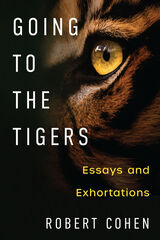 Going to the Tigers: Essays and Exhortations
Robert Cohen
University of Michigan Press, 2022 In this funny and perceptive collection, novelist and essayist Robert Cohen shares his thoughts on the writing process and then puts these prescriptions into practice—from how to rant effectively as an essayist and novelist (“The Piano Has Been Drinking”), how to achieve your own style, naming characters (and creating them), how one manages one’s own identity with being “a writer” in time and space, to the use of reference and allusion in one’s work. Cohen is a deft weaver of allusion himself. In lieu of telling the reader how to master the elements of writing fiction, he shows them through the work of the writers who most influenced his own development, including Roth, Ellison, Kafka, and Robinson. Rooted in his own experiences, this collection of essays shows readers how to use their influences and experiences to create bold, personal, and individual work. While the first part of the book teaches writing, the essays in the second part show how these elements come together.
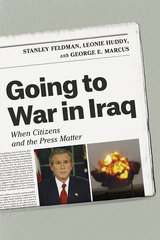 Going to War in Iraq: When Citizens and the Press Matter
Stanley Feldman, Leonie Huddy, and George E. Marcus
University of Chicago Press, 2015 Conventional wisdom holds that the Bush administration was able to convince the American public to support a war in Iraq on the basis of specious claims and a shifting rationale because Democratic politicians decided not to voice opposition and the press simply failed to do its job.
Drawing on the most comprehensive survey of public reactions to the war, Stanley Feldman, Leonie Huddy, and George E. Marcus revisit this critical period and come back with a very different story. Polling data from that critical period shows that the Bush administration’s carefully orchestrated campaign not only failed to raise Republican support for the war but, surprisingly, led Democrats and political independents to increasingly oppose the war at odds with most prominent Democratic leaders. More importantly, the research shows that what constitutes the news matters. People who read the newspaper were more likely to reject the claims coming out of Washington because they were exposed to the sort of high-quality investigative journalism still being written at traditional newspapers. That was not the case for those who got their news from television. Making a case for the crucial role of a press that lives up to the best norms and practices of print journalism, the book lays bare what is at stake for the functioning of democracy—especially in times of crisis—as newspapers increasingly become an endangered species.
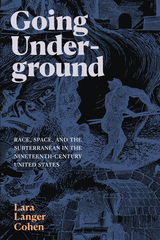 Going Underground: Race, Space, and the Subterranean in the Nineteenth-Century United States
Lara Langer Cohen
Duke University Press, 2023 First popularized by newspaper coverage of the Underground Railroad in the 1840s, the underground serves as a metaphor for subversive activity that remains central to our political vocabulary. In Going Underground, Lara Langer Cohen excavates the long history of this now familiar idea while seeking out versions of the underground that were left behind along the way. Outlining how the underground’s figurative sense first took shape through the associations of literal subterranean spaces with racialized Blackness, she examines a vibrant world of nineteenth-century US subterranean literature that includes Black radical manifestos, anarchist periodicals, sensationalist exposés of the urban underworld, manuals for sex magic, and the initiation rites of secret societies. Cohen finds that the undergrounds in this literature offer sites of political possibility that exceed the familiar framework of resistance, suggesting that nineteenth-century undergrounds can inspire new modes of world-making and world-breaking for a time when this world feels increasingly untenable.
Going Up the Country: When the Hippies, Dreamers, Freaks, and Radicals Moved to Vermont
Yvonne Daley
University Press of New England, 2018 Going Up the Country is part oral history, part nostalgia-tinged narrative, and part clear-eyed analysis of the multifaceted phenomena collectively referred to as the counterculture movement in Vermont. This is the story of how young migrants, largely from the cities and suburbs of New York and Massachusetts, turned their backs on the establishment of the 1950s and moved to the backwoods of rural Vermont, spawning a revolution in lifestyle, politics, sexuality, and business practices that would have a profound impact on both the state and the nation. The movement brought hippies, back-to-the-landers, political radicals, sexual libertines, and utopians to a previously conservative state and led us to today’s farm to table way of life, environmental consciousness, and progressive politics as championed by Bernie Sanders.
 Going Viral: Zombies, Viruses, and the End of the World
Schweitzer, Dahlia
Rutgers University Press, 2018 Outbreak narratives have proliferated for the past quarter century, and now they have reached epidemic proportions. From 28 Days Later to 24 to The Walking Dead, movies, TV shows, and books are filled with zombie viruses, bioengineered plagues, and disease-ravaged bands of survivors. Even news reports indulge in thrilling scenarios about potential global pandemics like SARS and Ebola. Why have outbreak narratives infected our public discourse, and how have they affected the way Americans view the world? In Going Viral, Dahlia Schweitzer probes outbreak narratives in film, television, and a variety of other media, putting them in conversation with rhetoric from government authorities and news organizations that have capitalized on public fears about our changing world. She identifies three distinct types of outbreak narrative, each corresponding to a specific contemporary anxiety: globalization, terrorism, and the end of civilization. Schweitzer considers how these fears, stoked by both fictional outbreak narratives and official sources, have influenced the ways Americans relate to their neighbors, perceive foreigners, and regard social institutions. Looking at everything from I Am Legend to The X Files to World War Z, this book examines how outbreak narratives both excite and horrify us, conjuring our nightmares while letting us indulge in fantasies about fighting infected Others. Going Viral thus raises provocative questions about the cost of public paranoia and the power brokers who profit from it. Supplemental Study Materials for "Going Viral": https://www.rutgersuniversitypress.org/going-viral-dahlia-schweitzer Dahlia Schweitzer- Going Viral: https://www.youtube.com/watch?v=5xF0V7WL9ow
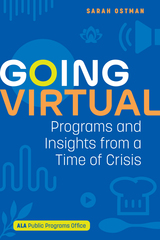 Going Virtual: Programs and Insights from a Time of Crisis
Sarah Ostman
American Library Association, 2021 From the moment the pandemic took hold in Spring 2020, libraries and library workers have demonstrated their fortitude and flexibility by adapting to physical closures, social distancing guidelines, and a host of other challenges. Despite the obstacles, they’ve been able to stay connected to their communities—and helped connect the people in their communities to each other, as well as to the information and services they need and enjoy. Ostman and ALA’s Public Programs Office (PPO) here present a handpicked cross-section of successful programs, most of them virtual, from a range of different libraries. Featuring events designed to support learning, spark conversation, create connection, or simply entertain, the ideas here will inspire programming staff to try similar offerings at their own libraries. Showcasing innovation in action as well as lessons learned, programs include - COVID-19 Misinformation Challenge, featuring an email quiz, to encourage participants to separate fact from fiction;
- weekly virtual storytimes;
- community cooking demonstrations via Zoom;
- an online grocery store tour, complete with tips about shopping healthy on a budget;
- a virtual beer tasting that boasted 80 attendees;
- socially distanced "creativity crates" for summer reading;
- an online Minecraft club for kids ages 6 and up;
- a Zoom presentation about grieving and funerals during COVID, featuring the director of a local funeral home;
- Art Talk Tuesday, a one-hour, docent-led program;
- a virtual lecture on the history of witchcraft, presented by a public library in partnership with a university rare book room, that drew thousands of viewers;
- "knitting for knewbies" kits for curbside pickup;
- Songs from the Stacks, an ongoing virtual concert series in the style of NPR’s “Tiny Desk”;
- a pink supermoon viewing party that included people howling at the moon together from their homes on Facebook Live;
- and many others
Going West: Migrating Personae and Construction of the Self in Rabbinic Culture
Reuven Kiperwasser
SBL Press, 2021 This new book by Reuven Kiperwasser examines the social, cultural, and religious aspects of third- to sixth-century narratives involving rabbinic figures migrating between Babylonia and Palestine. Kiperwasser draws on migration and mobility studies, comparative literature, humor and satire studies, as well as social history to reveal how border-crossing rabbis were seen as exporting features of their previous eastern context into their new western homes and vice versa. Through their writing, rabbinic authors articulated the nature and legitimacy of their own scholastic practices, knowledge, and authority in relationship to their internal others.
 Gold
Susan La Niece
Harvard University Press, 2009 In tracing the history of gold through the ages, this beautiful book showcases the multifarious uses to which the precious metal has been put. Drawing on her own long experience investigating the art and science of metallurgy, Susan La Niece guides readers through the rich history of gold. In detailed images and descriptive text, her book shows us gold over the millennia as coinage, jewelry and ornamentation, high-status vessels, and grave goods; as gifts of distinction, and as radiant symbols in rituals of magic and worship.
Following a glimmering trail through distant times and places, Gold takes us to cultures as disparate as the Mughals of India, the Anglo-Saxons of Britain, and the pre-Hispanic civilizations of the New World. It considers the work of alchemists and goldsmiths, the myths and the legends, the fakes and fine art. And, in the end, it offers a fittingly lavish and deeply informed picture of gold in all its practical, figurative, commercial, artistic, and historical facets.
 Gold and Power in Ancient Costa Rica, Panama, and Colombia
Jeffrey Quilter
Harvard University Press, 2003 The lands between Mesoamerica and the Central Andes are famed for the rich diversity of ancient cultures that inhabited them. Throughout this vast region, from about AD 700 until the sixteenth-century Spanish invasion, a rich and varied tradition of goldworking was practiced. The amount of gold produced and worn by native inhabitants was so great that Columbus dubbed the last New World shores he sailed as Costa Rica—the "Rich Coast."
Despite the long-recognized importance of the region in its contribution to Pre-Columbian culture, very few books are readily available, especially in English, on these lands of gold. Gold and Power in Ancient Costa Rica, Panama, and Colombia now fills that gap with eleven articles by leading scholars in the field. Issues of culture change, the nature of chiefdom societies, long-distance trade and transport, ideologies of value, and the technologies of goldworking are covered in these essays as are the role of metals as expressions and materializations of spiritual, political, and economic power. These topics are accompanied by new information on the role of stone statuary and lapidary work, craft and trade specialization, and many more topics, including a reevaluation of the concept of the "Intermediate Area."
Collectively, the volume provides a new perspective on the prehistory of these lands and includes articles by Latin American scholars whose writings have rarely been published in English.
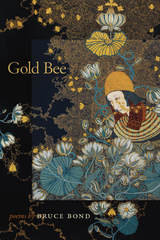 Gold Bee
Bruce Bond
Southern Illinois University Press, 2016 In his collection Gold Bee, Bruce Bond takes his cue from Wallace Stevens’s Harmonium, bringing a finely honed talent to classic poetic questions concerning music, the march of progress, and the relationship between reality and the imagination.
Blending humor and pathos, Bond examines the absurdities of contemporary life: “The modern air so full of phantom wires, / hard to tell the connected from the confused / who yak out loud to their beleaguered angels.” At other times, his intricately crafted lyrics weave together myth and history to explore the various roles music and art play in the human experience, as when Bond’s poems meditate on Orphean themes, descending to the underworld of loneliness, commercialism, or death and emerging with hard (and hard-won) truths.
Addressing broadly ranging topics—from a retelling of the story of Artephius, the fabled father of alchemy, to a meditation on a fashion ad’s wind machine—Bond’s voice is always penetrating in its examination, yet wondering in the face of beauty, conjuring for the reader a world where music has “the power / to move stones, not far, but far enough.”
The Gold Coast and the Slum: A Sociological Study of Chicago's Near North Side
Harvey Warren Zorbaugh
University of Chicago Press, 1983 "This is a book about Chicago. It is also, and for that very reason, a book about every other American city which has lived long enough and grown large enough to experience the transformation of neighborhoods and the contact of cultures and the tension between different types of individual and community behavior. . . . Here is a type of sociological investigation which is equally marked by human interest and scientific method."—Christian Century
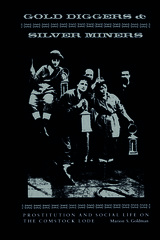 Gold Diggers and Silver Miners: Prostitution and Social Life on the Comstock Lode
Marion S. Goldman
University of Michigan Press, 1981 In 1859 high grade silver bullion was discovered on the Comstock Lode. In a twinkling, Virginia City was transformed into a brawling boom town perched on a mountain of silver. Twenty years later it virtually disappeared, leaving behind played-out mines, tumbled-down shanties, and memories of those who sought their fortunes on the lode. The fortune seekers were many: miners and madams, confidence men and dance hall girls. The fast life was as stratified as any proper community, ranging from expensively kept women to prostitutes living in cribs. Laura Fair, an elite member of the demimonde, shot her protector and, after a spectacular trial, retired to live modestly in San Francisco. Jessie Lester made a small fortune as a madam while middle rank prostitutes such as Julia Bulette died in debt. At the lowest end of scale were "celestial damsels," nameless slave women brought from China to minister to the needs of Chinese workers. Chronicling it all was the cynical and lascivious pen of Alf Doten, writer, editor, and bon vivant. In Gold Diggers and Silver Miners, sociologist Marion S. Goldman provides a detailed account of prostitution on the Comstock Lode. By considering sexual commerce in a community limited in space and time, she explores general relationships between prostitution and society, shedding light on sociological questions of importance today.
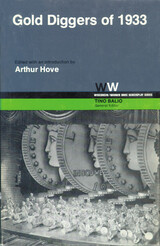 Gold Diggers of 1933
Edited, with an introduction by Arthur Hove; Tino T. Balio, Series Editor
University of Wisconsin Press, 1980 Gold Diggers of 1933, a lavish and glittering showcase for Busby Berkeley's musical production talent, was designed and produced as a Depression tonic. As Berkeley said, "In an era of breadlines, Depression, and wars, I tried to help people get away from all the misery . . . to turn their minds away to something else. I wanted to make people happy, if only for an hour.
This book contains the full shooting script of Erwin Gelsey and James Seymour, based on the Avery Hopwood play of 1919, as well as the lyrics to the five songs of the film. Arthur Hove's introduction outlines the story concept from its initial Broadway form, through the 1923 silent movie, the 1929 talkie, and including several post-1933 versions. The concept of the good-hearted chorus girl with a penchant for separating wealthy men from some of their money has long been popular with both theatre and movie audiences.
Hove tells much about the relationship between the story line and musical segments of the movie, about how far a writer can go before passing the baton to the director, and about how a film is actually put together.
The film is remembered for Berkeley's musical and visual extravaganza. In the opening number, "We're in the Money," his sumptuous corps de ballet, numbering fifty-four, appeared in costumes made of fifty-four thousand "silver" coins. Five silver dollars, twenty-eight feet in diameter formed the background for the chorus.
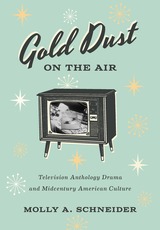 Gold Dust on the Air: Television Anthology Drama and Midcentury American Culture
Molly A. Schneider
University of Texas Press, 2024 2025 Broadcast Historian Award, Library of American Broadcasting Foundation How mid-century television anthologies reflected and shaped US values and identities. From the late 1940s to the early 1960s, anthology dramas presented “quality” television programming in weekly stand-alone television plays meant to entertain and provide cultural uplift to American society. Programs such as Playhouse 90, Studio One, and The Twilight Zone became important emblems of American creative potential on television. But their propensity for addressing matters of major social concern also meant that they often courted controversy. Although the anthology’s tenure would be brief, its importance in the television landscape would be great, and the ways the format negotiated ideas about “Americanness” at midcentury would be a crucial facet of its significance. In Gold Dust on the Air, Molly Schneider traces a cultural history of the “Golden Age” anthology, addressing topics such as the format’s association with Method acting and debates about “authentic” American experience, its engagement with ideas about “conformity” in the context of Cold War pressures, and its depictions of war in a medium sponsored by defense contractors. Drawing on archival research, deep textual examination, and scholarship on both television history and broader American culture, Schneider posits the anthology series as a site of struggle over national meaning.
 The Gold in the Rings: The People and Events That Transformed the Olympic Games
Stephen R. Wenn and Robert K. Barney
University of Illinois Press, 2019 Once a showcase for amateur athletics, the Olympic Games have become a global entertainment colossus powered by corporate sponsorship and professional participation. Stephen R. Wenn and Robert K. Barney offer the inside story of this transformation by examining the far-sighted leadership and decision-making acumen of four International Olympic Committee (IOC) presidents: Avery Brundage, Lord Killanin, Juan Antonio Samaranch, and Jacques Rogge. Blending biography with historical storytelling, the authors explore the evolution of Olympic commercialism from Brundage's uneasy acceptance of television rights fees through the revenue generation strategies that followed the Salt Lake City bid scandal to the present day. Throughout, Wenn and Barney draw on their decades of studying Olympic history to dissect the personalities, conflicts, and controversies behind the Games' embrace of the business of spectacle. Entertaining and expert, The Gold in the Rings maps the Olympics' course from paragon of purity to billion-dollar profits.
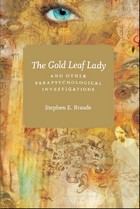 The Gold Leaf Lady and Other Parapsychological Investigations
Stephen E. Braude
University of Chicago Press, 2007 For over thirty years, Stephen Braude has studied the paranormal in everyday life, from extrasensory perception and psychokinesis to mediumship and materialization. The Gold Leaf Lady and Other Parapsychological Investigations is a highly readable and often amusing account of his most memorable encounters with such phenomena. Here Braude recounts in fascinating detail five particular cases—some that challenge our most fundamental scientific beliefs and others that expose our own credulousness. Braude begins with a south Florida woman who can make thin gold-colored foil appear spontaneously on her skin. He then travels to New York and California to test psychokinetic superstars—and frauds—like Joe Nuzum, who claim to move objects using only their minds. Along the way, Braude also investigates the startling allegations of K.R., a policeman in Annapolis who believes he can transfer images from photographs onto other objects—including his own body—and Ted Serios, a deceased Chicago elevator operator who could make a variety of different images appear on Polaroid film. Ultimately, Braude considers his wife’s surprisingly fruitful experiments with astrology, which she has used to guide professional soccer teams to the top of their leagues, as well as his own personal experiences with synchronicity—a phenomenon, he argues, that may need to be explained in terms of a refined, extensive, and dramatic form of psychokinesis. Heady, provocative, and brimming with eye-opening details and suggestions, The Gold Leaf Lady and Other Parapsychological Investigations will intrigue both adherents and detractors of its controversial subject matter alike.
 Gold Metal Waters: The Animas River and the Gold King Mine Spill
Brad T. Clark
University Press of Colorado, 2022 Gold Metal Waters presents a uniquely inter- and transdisciplinary examination into the August 2015 Gold King Mine spill in Silverton, Colorado, when more than three million gallons of subterranean mine water, carrying 880,000 pounds of heavy metals, spilled into a tributary of the Animas River. The book illuminates the ongoing ecological, economic, political, social, and cultural significance of a regional event with far-reaching implications, showing how this natural and technical disaster has affected and continues to affect local and national communities, including Native American reservations, as well as agriculture and wildlife in the region.
This singular event is surveyed and interpreted from multiple diverse perspectives—college professors, students, and scientists and activists from a range of academic and epistemological backgrounds—with each chapter reflecting unique professional and personal experiences. Contributors examine both the context for this event and responses to it, embedding this discussion within the broader context of the tens of thousands of mines leaking pollutants into waterways and soils throughout Colorado and the failure to adequately mitigate the larger ongoing crisis.
The Gold King Mine spill was the catalyst that finally brought Superfund listing to the Silverton area; it was a truly sensational event in many respects. Gold Metal Waters will be of interest to students and scholars in all disciplines, but especially in environmental history, western history, mining history, politics, and communication, as well as general readers concerned with human relationships with the environment.
Contributors: Alane Brown, Brian L. Burke, Karletta Chief, Steven Chischilly, Becky Clausen, Michael A. Dichio, Betty Carter Dorr, Cynthia Dott, Gary Gianniny, David Gonzales, Andrew Gulliford, Lisa Marie Jacobs, Ashley Merchant, Teresa Montoya, Scott W. Roberts, Lorraine L. Taylor, Jack Turner, Keith D. Winchester, Megan C. Wrona, Janene Yazzie
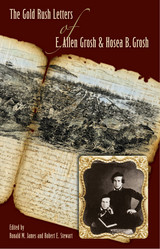 The Gold Rush Letters of E. Allen Grosh and Hosea B. Grosh
Ronald M. James
University of Nevada Press, 2016 When brothers Ethan and Hosea Grosh left Pennsylvania in 1849, they joined throngs of men from all over the world intent on finding a fortune in the California Gold Rush. Their search for wealth took them from San Francisco into the gold country and then over the Sierra into Nevada’s Gold Canyon, where they placer-mined for gold and discovered a deposit of silver. The letters they sent back to their family offer vivid commentaries on the turbulent western frontier, the diverse society of the Gold Rush camps, and the heartbreaking labor and frustration of mining. Their lively descriptions of Gold Canyon provide one of the earliest accounts of life in what would soon become the fabulously wealthy Comstock Mining District.
The Groshes’ letters are rich in color and important historical details. Generously annotated and with an introduction that provides a context for the brothers’ career and the setting in which they tried to make their fortune, these documents powerfully depict the often harsh realities of Gold Rush life and society.
Gold Sand, Gold Water
Nalini Bera
Seagull Books, 2025 A river that once carried gold now bears the weight of memory and the struggles of those who call its banks home.
The Subarnarekha River shimmers with legend; once said to carry flecks of gold, it remains a source of both promise and hardship for those who live along its banks. In Gold Sand, Gold Water, Nalini Bera conjures a world where folklore and reality flow together, and forbidden love defies caste. Through the eyes of young Lolin, we witness the daily struggles of the Hatua people—part of the marginalized Adivasi and Dalit communities—as they navigate a world where ancient traditions are slowly being eroded by modern industry.
The novel paints an intimate, kaleidoscopic portrait of a vanishing way of life. Lyrical and haunting, Gold Sand, Gold Water is an essential addition to Bengali literature in translation—one that ensures these overlooked stories, like the river itself, continue to flow.
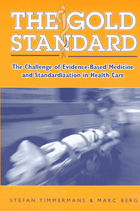 The Gold Standard: The Challenge Of Evidence-Based Medicine
Stefan Timmermans and Marc Berg
Temple University Press, 2003 Few things make people react more strongly to the changes going on in health care than the word standardization. Critics shudder at the mindless sameness of standards, while supporters dream of a world in which standardized "best practices" open up a world of efficient health care delivery. The Gold Standard takes up this debate to investigate the real meaning of standardization and how it affects patients, doctors, and the institution of medicine. Showing that standards are not about less or more skills, or more or less uniformity, but rather about a redefinition of autonomy, patients, and relationships, Timmermans and Berg show instead that they are about creating new worlds of medical treatment. Cutting through the hype and fears, the authors show where the true powers of standardization lie. The Gold Standard will become a classic for students of medicine and health care policy, and will be a welcome book for anyone concerned with the future of our system of care.
Goldbeater's Skin
G. C. Waldrep
University Press of Colorado, 2003 Winner of the 2003 Colorado Prize for Poetry
Published by the Center for Literary Publishing at Colorado State University
 Goldee's Bar-B-Q: A Cookbook
Jalen Heard, Lane Milne, and Jonny White, with Lisa Fain. Photography by Wiil Milne.
University of Texas Press, 2025 The top joint in Texas shares its secrets to award-winning barbecue. Goldee's Bar-B-Q, which sits in a quiet corner of Dallas–Fort Worth, opened only a few weeks before COVID-19 closed the dining room, and for months the restaurant eked out a living with curbside service and catering. The owners didn’t expect their barbecue to be crowned the best in the state by Texas Monthly, yet they earned that honor in 2021. What separates Goldee's from other joints is their pitmasters’ attention to craft and an inclusive attitude toward sharing their work. They understand that the secret ingredient in barbecue is not a particular spice in the rub, but hours of paying attention to fire and meat. Goldee’s Bar-B-Q shows you how to make classics such as brisket, ribs, sausages, beans, coleslaw, potato salad, and banana pudding. Goldee’s pitmasters share how to trim, season, and smoke meat, as well as tips for managing a fire and monitoring temperature, which are key to elevating your barbecue. Goldee’s Bar-B-Q also captures the heart of the restaurant, the story of best friends coming together to make a place where they could share their love of cooking. A must-have for barbecue aficionados, meat lovers, and chefs looking to perfect their techniques, Goldee’s Bar-B-Q will help you make your barbecue exceptional.
 The Golden Age of Battlefield Preservation: The Decade of the 1890's and the Establishment of America's First Five Military Parks
Timothy B. Smith
University of Tennessee Press, 2008 The 1890s, argues Timothy B. Smith, represented the pinnacle of battlefield preservation in America. But what makes this decade so important?
This decade was the perfect time for the establishment of these national parks. Five Civil War battlegrounds—at Gettysburg, Chickamauga and Chattanooga, Shiloh, Antietam, and Vicksburg—were commemorated as national sites during this time. Just past the bitterness and racial tensions of Reconstruction and prior to the explosive growth brought on by the Second Industrial Revolution, the time was right for the war's veterans from both sides to come together, in a spirit of reconciliation and brotherhood, to lead the efforts to open the parks. As yet unmarred by development, these battlefield sites were preserved mostly intact, just how the veterans would have remembered them. To date, they represent the country's finest preserved battlefields.
Smith's book is the first to look at the process of battlefield reservation as a whole. He focuses on how each of these sites was established and the important individuals—the congressmen, the former soldiers, the veteran commissioners—who were the catalysts for the creation of these parks.
The Golden Age of Battlefield Preservation is a watershed book about an essential period in the history of battlefield preservation and will be of interest to any reader who wishes to have a better understanding how such preservation efforts were initiated.
Timothy B. Smith is the author of This Great Battlefield of Shiloh: History, Memory, and the Establishment of a Civil War National Military Park and The Untold Story of Shiloh: The Battle and the Battlefield. He is a former park ranger at the Shiloh National Military Park and now teaches at the University of Tennessee at Martin.
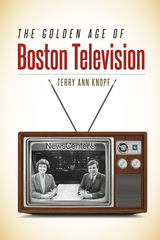 The Golden Age of Boston Television
Terry Ann Knopf
University Press of New England, 2017 There are some two hundred TV markets in the country, but only one—Boston, Massachusetts—hosted a Golden Age of local programming. In this lively insider account, Terry Ann Knopf chronicles the development of Boston television, from its origins in the 1970s through its decline in the early 1990s. During TV’s heyday, not only was Boston the nation’s leader in locally produced news, programming, and public affairs, but it also became a model for other local stations around the country. It was a time of award-winning local newscasts, spirited talk shows, thought-provoking specials and documentaries, ambitious public service campaigns, and even originally produced TV films featuring Hollywood stars. Knopf also shows how this programming highlighted aspects of Boston’s own history over two turbulent decades, including the treatment of highly charged issues of race, sex, and gender—and the stations’ failure to challenge the Roman Catholic Church during its infamous sexual abuse scandal. Laced with personal insights and anecdotes, The Golden Age of Boston Television offers an intimate look at how Boston’s television stations refracted the city’s culture in unique ways, while at the same time setting national standards for television creativity and excellence.
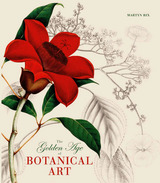 The Golden Age of Botanical Art
Martyn Rix
University of Chicago Press, 2012 The seventeenth century heralded a golden age of exploration, as intrepid travelers sailed around the world to gain firsthand knowledge of previously unknown continents. These explorers also collected the world’s most beautiful flora, and often their findings were recorded for posterity by talented professional artists. The Golden Age of Botanical Art tells the story of these exciting plant-hunting journeys and marries it with full-color reproductions of the stunning artwork they produced. Covering work through the nineteenth century, this lavishly illustrated book offers readers a look at 250 rare or unpublished images by some of the world’s most important botanical artists.
Truly global in its scope, The Golden Age of Botanical Art features work by artists from Europe, China, and India, recording plants from places as disparate as Africa and South America. Martyn Rix has compiled the stories and art not only of well-known figures—such as Leonardo da Vinci and the artists of Empress Josephine Bonaparte—but also of those adventurous botanists and painters whose names and work have been forgotten. A celebration of both extraordinarily beautiful plant life and the globe-trotting men and women who found and recorded it, The Golden Age of Botanical Art will enchant gardeners and art lovers alike.
The Golden Age of Chicago Children's Television
Ted Okuda and Jack Mulqueen
Southern Illinois University Press, 2004 At one time every station in Chicago—a maximum of five, until 1964–produced or aired some programming for children. From the late 1940’s through the early 1970’s, local television stations created a golden age of children’s television unique in American broadcasting. Though the shows often operated under strict budgetary constraints, these programs were rich in imagination, inventiveness, and devoted fans. Now, discover the back stories and details of this special era from the people who created, lived, and enjoyed it—producers, on-air personalities, and fans.
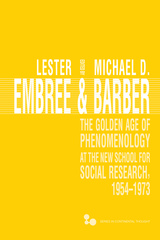 The Golden Age of Phenomenology at the New School for Social Research, 1954–1973
Lester Embree
Ohio University Press, 2017 This collection focuses on the introduction of phenomenology to the United States by the community of scholars who taught and studied at the New School for Social Research from 1954 through 1973. During those years, Dorion Cairns, Alfred Schutz, and Aron Gurwitsch—all former students of Edmund Husserl—came together in the department of philosophy to establish the first locus of phenomenology scholarship in the country. This founding trio was soon joined by three other prominent scholars in the field: Werner Marx, Thomas M. Seebohm, and J. N. Mohanty. The Husserlian phenomenology that they brought to the New School has subsequently spread through the Anglophone world as the tradition of Continental philosophy. The first part of this volume includes original works by each of these six influential teachers of phenomenology, introduced either by one of their students or, in the case of Seebohm and Mohanty, by the thinkers themselves. The second part comprises contributions from twelve leading scholars of phenomenology who trained at the New School during this period. The result is a powerful document tracing the lineage and development of phenomenology in the North American context, written by members of the first two generations of scholars who shaped the field. Contributors: Michael Barber, Lester Embree, Jorge García-Gómez, Fred Kersten, Thomas M. T. Luckmann, William McKenna, J. N. Mohanty, Giuseppina C. Moneta, Thomas Nenon, George Psathas, Osborne P. Wiggins, Matthew M. Seebohm, and Richard M. Zaner.
 The Golden Age of the Classics in America: Greece, Rome, and the Antebellum United States
Carl J. Richard
Harvard University Press, 2009 In a masterful study, Carl J. Richard explores how the Greek and Roman classics became enshrined in American antebellum culture. For the first time, knowledge of the classics extended beyond aristocratic males to the middle class, women, African Americans, and frontier settlers.
The classics shaped how Americans interpreted developments around them. The example of Athens allowed politicians of the democratic age to espouse classical knowledge without seeming elitist. The Industrial Revolution produced a backlash against utilitarianism that centered on the classics. Plato and other ancients had a profound influence on the American romantics who created the first national literature, and pious Christians in an age of religious fervor managed to reconcile their faith with the literature of a pagan culture. The classics supplied both sides of the slavery debate with their chief rhetorical tools: the Aristotelian defense of slavery to Southern slaveholders and the concept of natural law to the Northern abolitionists.
The Civil War led to a radical alteration of the educational system in a way that steadily eroded the preeminence of the classics. They would never regain the profound influence they held in the antebellum era.
 The Golden Age of the U.S.–China–Japan Triangle, 1972–1989
Ezra F. Vogel
Harvard University Press, 2002 A collaborative effort by scholars from the United States, China, and Japan, this volume focuses on the period 1972-1989, during which all three countries, brought together by a shared geopolitical strategy, established mutual relations with one another despite differences in their histories, values, and perceptions of their own national interest. Although each initially conceived of its political and security relations with the others in bilateral terms, the three in fact came to form an economic and political triangle during the 1970s and 1980s. But this triangle is a strange one whose dynamics are constantly changing. Its corners (the three countries) and its sides (the three bilateral relationships) are unequal, while its overall nature (the capacity of the three to work together) has varied considerably as the economic and strategic positions of the three have changed and post–Cold War tensions and uncertainties have emerged.
In considering this special era, when the three major powers in the East Asia region engaged in positive interaction, the essays in this volume highlight the importance of this triangular reality in achieving a workable framework for future regional and global cooperation.
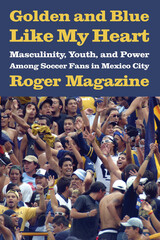 Golden and Blue Like My Heart: Masculinity, Youth, and Power Among Soccer Fans in Mexico City
Roger Magazine
University of Arizona Press, 2007 For fans of pro soccer in Mexico City, the four most popular teams represent distinct identities that embody such attributes as political power, nationalism, and working-class values. One of these teams, the Pumas, is associated with youthfulness, and its equally youthful fans take pride in the fact that their heroes have not yet been corrupted by corporate or political interests. This ethnographic study examines Puma fans’ understanding of the ideal that the team represents, considers the practices they employ to express and sometimes contradict this ideal, and reveals how soccer fandom in contemporary Mexico has emerged as a nexus of tensions among competing visions of state and society.
Roger Magazine takes readers inside Mexico’s soccer stadiums to explore young men’s participation in struggles over the future of that country’s urban society. His firsthand observations of the fan clubs—las porras—yield a unique inside look at confrontations in the stands over group organization, particularly at the emergence of rebel segments within the clubs. His study offers a close-up look at ground-level struggles over social organization in contemporary urban Mexico, showing how young male fans both blindly reproduce and consciously manipulate images of violence and disorder derived from national myths about typical urban Mexican men.
Golden and Blue Like My Heart offers a new way of understanding the dynamics of fandom while shedding new light on larger social processes and youth culture in Mexico. And with its insight into soccer culture, politico-economic transition, and masculinity, it has important and wide-reaching implications for all of Latin America.
The Golden Cage: The Enigma of Anorexia Nervosa, With a New Foreword by Catherine Steiner-Adair, Ed.D.
Hilde Bruch, M.D.
Harvard University Press, 2001 First published more than twenty years ago, with almost 150,000 copies sold, The Golden Cage is still the classic book on anorexia nervosa, for patients, parents, mental health trainees, and senior therapists alike. Writing in direct, jargon-free style, often quoting her patients’ descriptions of their own experience of illness and recovery, Bruch describes the relentless pursuit of thinness and the search for superiority in self-denial that characterizes anorexia nervosa. She emphasizes the importance of early diagnosis and offers guidance on danger signs. Little-known when this groundbreaking book was first published, eating disorders have become all too familiar. Sympathetic and astute, The Golden Cage now speaks to a new generation.
The Golden Coin
Alan Feldman
University of Wisconsin Press, 2018 What is good fortune? The Golden Coin asks—and answers—this question in poems about youth, conflict, travel, family love, and the joys and fears of getting old. Aboard his sailboat, Feldman draws lessons from the sea about time and history. His gaze tempered not by nostalgia or longing but by satisfaction and happiness, he finds wry joy in the Havana airport's sniffer dog napping near the impounded luggage. In acknowledging the inevitability of change, he reports from the battle zones of an essentially lucky life, with only as much sadness and terror as ordinary life inevitably requires.
 The Golden Cord: A Short Book on the Secular and the Sacred
Charles Taliaferro
University of Notre Dame Press, 2013
The title of Charles Taliaferro’s book is derived from poems and stories in which a person in peril or on a quest must follow a cord or string in order to find the way to happiness, safety, or home. In one of the most famous of such tales, the ancient Greek hero Theseus follows the string given him by Ariadne to mark his way in and out of the Minotaur’s labyrinth. William Blake's poem “Jerusalem” uses the metaphor of a golden string, which, if followed, will lead one to heaven itself. Taliaferro extends Blake’s metaphor to illustrate the ways we can link what we see, feel, and do with deep spiritual realities.
Taliaferro offers a foundational case for the recognition of the experience of the eternal God of Christianity, in which God is understood as the fount of all goodness and the subject and object of our best love, revealed through scripture, tradition, philosophical reflection, and encountered in everyday events. He addresses philosophical obstacles to the recognition of such experiences, especially objections from the “new atheists,” and explores the values involved in thinking and experiencing God as eternal. These include the belief that the eternal goodness of God subordinates temporal goods, such as the pursuit of fame and earthly glory; that God is the essence of life; and that the eternal God hallows domestic goods, blessing the everyday goods of ordinary life. An exploration of the moral and spiritual riches of the Christian tradition as an alternative to materialism and naturalism, The Golden Cord brings an originality and depth to the debate in accessible and engaging prose.
“Charles Taliaferro has written a thought-provoking, original work that succeeds in throwing some of the central tenets of naturalism into question. He has gathered cutting-edge scholarship from the context of debates about naturalism and discusses that within the framework of a theological account of the human condition. The result is a robust theological response to secular naturalism, one that deserves to be taken seriously by the latter’s proponents.” —Victoria Harrison, University of Glasgow
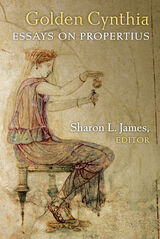 Golden Cynthia: Essays on Propertius
Sharon L. James, Editor
University of Michigan Press, 2022 The elegiac poet Propertius responds in his verse to the complex changes that Rome underwent in his period, taking on numerous topics including poetic and sexual rivalry, visual art, violence, inability to control the elusive mistress, imperialism, colonialism, civil war, the radical new shape of the Roman state under the new monarch Augustus, and more. These essays, by well-known scholars of Roman elegy, offer new ways of reading Propertius’ topics, attitudes, and poetics.
This book begins with two distinguished essays by the late Barbara Flaschenriem, whose work on Propertius remains influential. The other contributions, offered in honor of her, are by Diane Rayor, Andrew Feldherr, Ellen Greene, Lowell Bowditch, Alison Keith, and volume editor Sharon L. James. These essays explore topics including Propertian didacticism, dream interpretation, visual art and formalism, sex and violence, Roman imperialism and its connection to the elegiac puella, and Propertius’ engagement, in Book 4, with Vergil’s poetry.
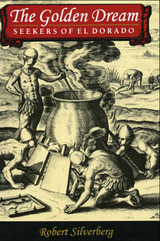 The Golden Dream: Seekers Of El Dorado
Robert Silverberg
Ohio University Press, 1996 One of the most persistent legends in the annals of New World exploration is that of the Land of Gold. This mythical site was located over vast areas of South America (and later, North America); the search for it drove some men mad with greed and, as often as not, to their untimely deaths. In this history of quest and adventure, Robert Silverberg traces the fate of Old World explorers lured westward by the myth of El Dorado. From the German conquistadores licensed by the Spanish king to operate out of Venezuela, to the journeys of Gonzalo Pizarro in the Amazon basin, and to the nearly miraculous voyage of Francisco Orellana to the mouth of the Amazon River, encountering the warlike women who gave the river its name, violence and bloodshed accompanied the determined adventurers. Sir Walter Raleigh and a host of other explorers spent small fortunes and many lives trying to locate Manoa, a city that was rumored to be El Dorado—City of Gold. Celebrated science fiction author Robert Silverberg recreates these legendary quests in The Golden Dream: Seekers of El Dorado.
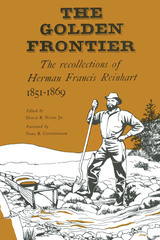 The Golden Frontier: The Recollections of Herman Francis Reinhart, 1851-1869
By Herman Francis Reinhart
University of Texas Press, 1962 The gold rush was Herman Francis Reinhart's life for almost twenty years. From the summer of 1851 when, as a boy in his late teens, he traveled the Oregon trail to California, until a January day in 1869 when he climbed aboard an eastbound train at Evanston, Wyoming, he was a part of every gold discovery that stirred the West. Reinhart dipped his pan in the streams of northern California and western Oregon—in Humbug Creek, Indian Creek, Rogue River, and Sucker Creek. He made the arduous and dangerous overland journey through Indian-occupied western Washington and British Columbia to find the Fraser River gold even more elusive than that farther south. With his teams and wagons he traversed all of the inland mine areas from Walla Walla to Fort Benton, from Boise Basin to South Pass City. Reinhart's German common sense soon turned him from actual mining to other sources of income, but whatever his labor was, the mines were always the focal point of his activities. When he operated a bakery and saloon it was a business whose customers were miners, whose transactions were more likely to involve gold dust than legal tender, and whose gambling tables saw the exchange of mining fortunes. When he operated a whipsaw mill the timbers cut there were used by miners for sluices and cradles. For a while Reinhart farmed, but planting and harvesting suffered from interruption by frequent expeditions to the mines. And when he prospered as a teamster it was to and from the mining towns that he hauled passengers, supplies, and equipment. The men who, like Herman Francis Reinhart, hopefully followed the golden frontier were not an articulate group, and the written records of their lives are few and fragmentary. But Reinhart, in his later years, recorded his experiences in five long, narrow, hardback ledgers. Many years after he died his daughter gave the ledgers to a friend in Chanute, Kansas—Nora Cunningham—who read the narrative, became fascinated by it, and typed it for publication. Reinhart's account, written in a grammar and language all his own, is not a record of the historian's West, but of the West of the individual miner. The pages are filled with the details of day-to-day life of the miners—the subjects that interested them, the problems that plagued them, their fun and feuding, their frustrations and hopes. Edited by an authority of the history of the West, it is a book that will offer exciting reading to casual readers and scholars alike.
 The Golden Girls: Tales from the Lanai
Taylor Cole Miller
Rutgers University Press, 2025 The Golden Girls: Tales from the Lanai is an accessible collection that explores the cultural, industrial, and historical impact of that beloved American sitcom. Edited by Taylor Cole Miller and Alfred L. Martin, Jr., this anthology brings together a diverse range of voices that model different media studies approaches to researching and critically analyzing television texts. The Golden Girls reclaims the production history and development of the show, opens new conversations about audiences–especially Black, queer, and female audiences–and provides new insight into the meteoric rise in popularity of The Golden Girls as a 2020s cultural phenomenon. With twelve original chapters and extensive original interviews offering readers rare insights behind the scenes, the book is a long day’s journey into the marinara of The Golden Girls–an immersive, engaging opportunity for readers to learn more about the show. It truly is the golden age of The Golden Girls.
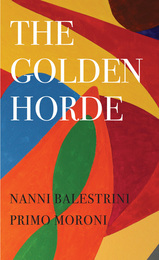 The Golden Horde: Revolutionary Italy, 1960–1977
Edited by Nanni Balestrini and Primo Moroni
Seagull Books, 2021 The Golden Horde is a definitive work on the Italian revolutionary movements of the 1960s and ’70s.
An anthology of texts and fragments woven together with an original commentary, The Golden Horde widens our understanding of the full complexity and richness of radical thought and practice in Italy during the 1960s and ’70s. The book covers the generational turbulence of Italy’s postwar period, the transformations of Italian capitalism, the new analyses by worker-focused intellectuals, the student movement of 1968, the Hot Autumn of 1969, the extra-parliamentary groups of the early 1970s, the Red Brigades, the formation of a radical women’s movement, the development of Autonomia, and the build-up to the watershed moment of the spontaneous political movement of 1977. Far from being merely a handbook of political history, The Golden Horde also sheds light on two decades of Italian culture, including the newspapers, songs, journals, festivals, comics, and philosophy that these movements produced. The book features writings by Sergio Bologna, Umberto Eco, Elvio Fachinelli, Lea Melandri, Danilo Montaldi, Toni Negri, Raniero Panzieri, Franco Piperno, Rossana Rossanda, Paolo Virno, and others, as well as an in-depth introduction by translator Richard Braude outlining the work’s composition and development.
The Golden Hour
Sue Ellen Thompson
Autumn House Press, 2006 In Sue Ellen Thompson's fourth book of poems, the acclaimed poet explores relationships between mothers and daughters, husbands and wives, the past and the present.
Golden House of Nero: Some Aspects of Roman Architecture
Axel Boethius
University of Michigan Press, 1960 The Golden House of Nero tells the story of town-planning and architecture in Rome from the primitive huts of the 8th century B.C. to the brick-faced tenements of 1000 years later. Over 100 illustrations accompany the text. The book deals in detail with the great period of city building—the Rome of Sulla, Caesar, Cicero, and of Nero's "Golden House," the emperor's fantastic landscape architecture and palace. The author tells how Rome tried to solve the problems of a city with a million popultion, and he traces the legacy of Roman urbanism through the Dark Ages to the renaissance of Italian towns.
|
|

